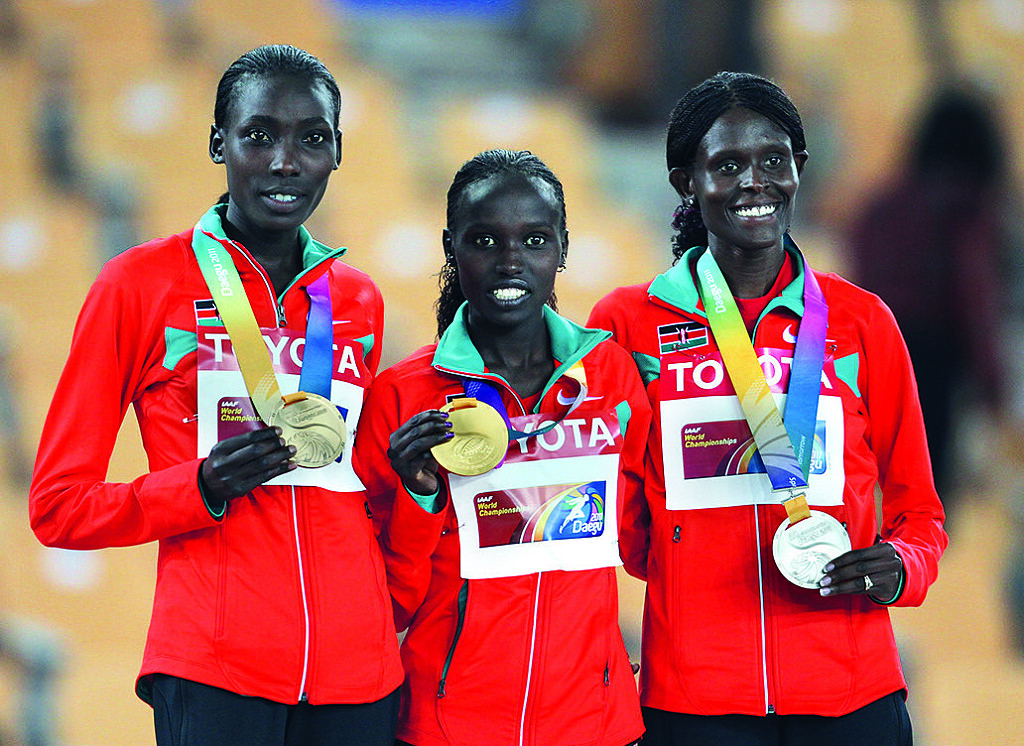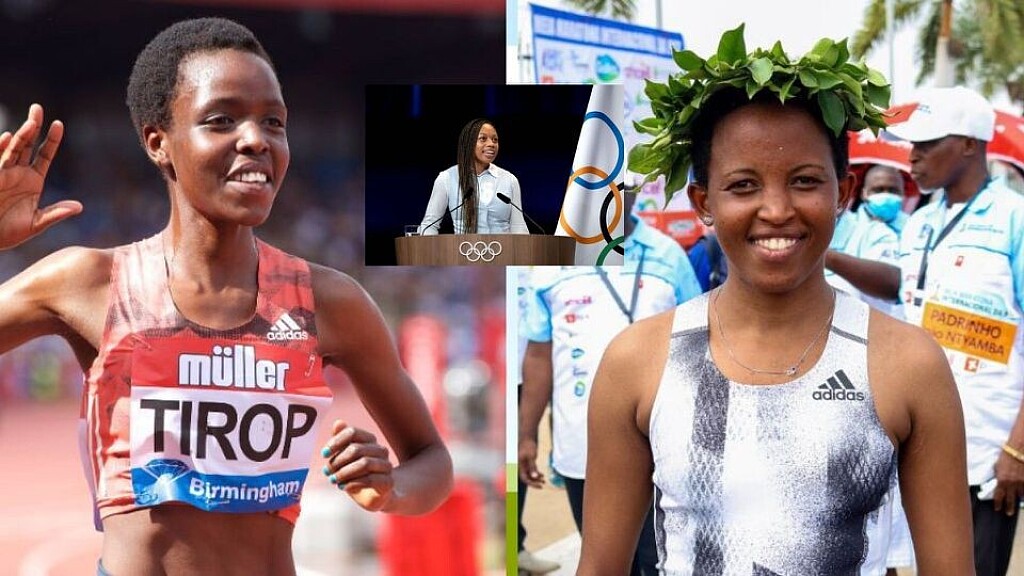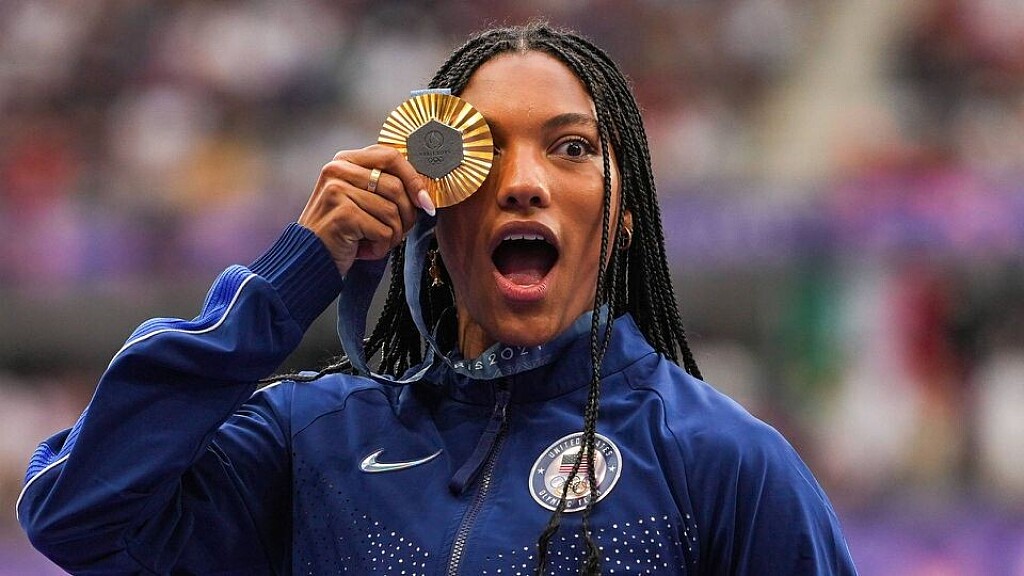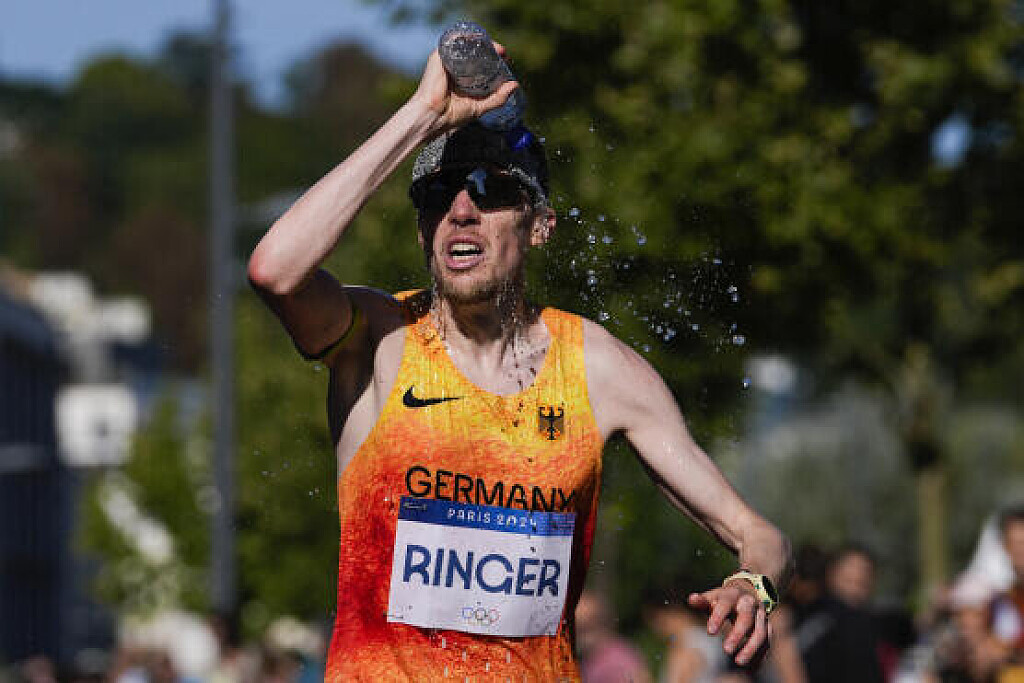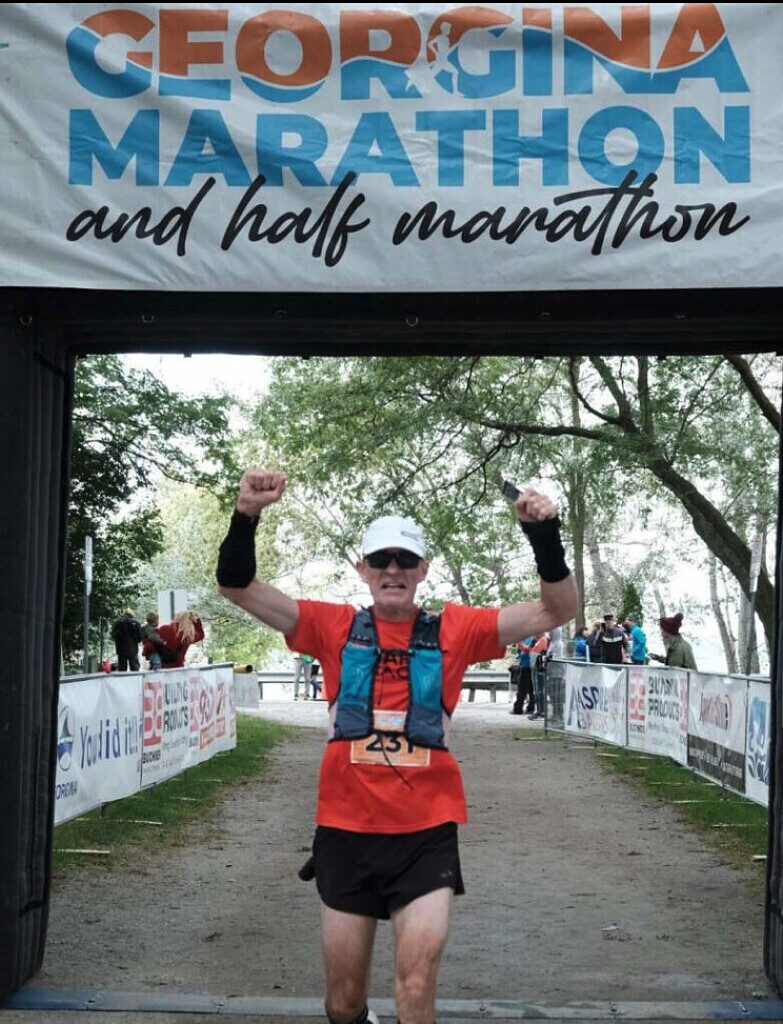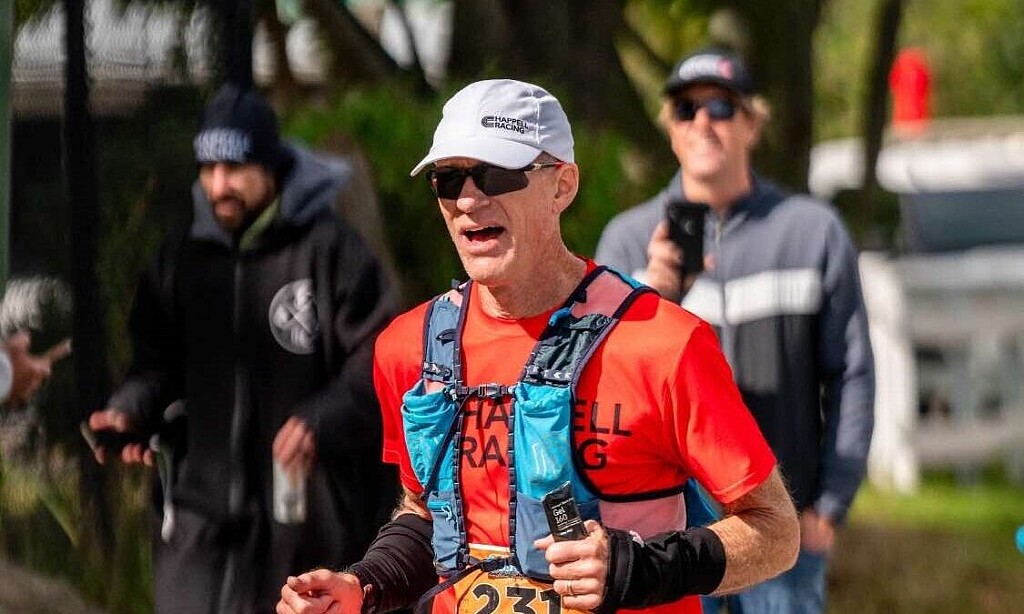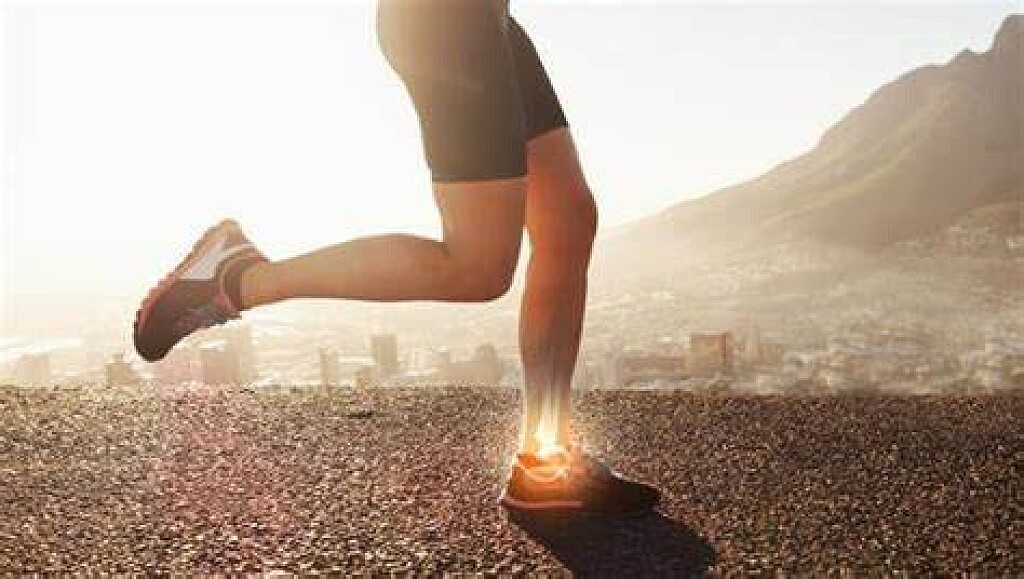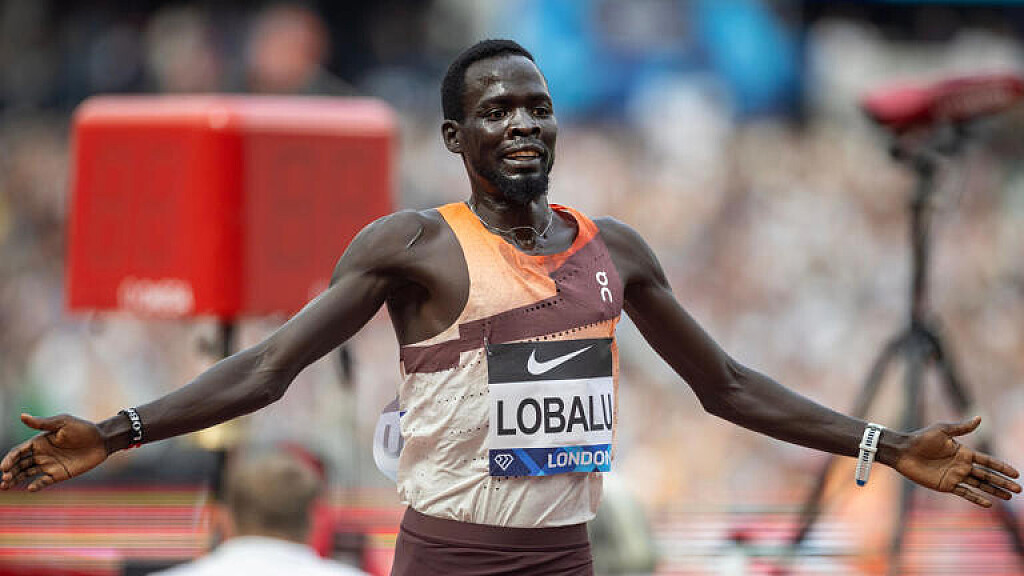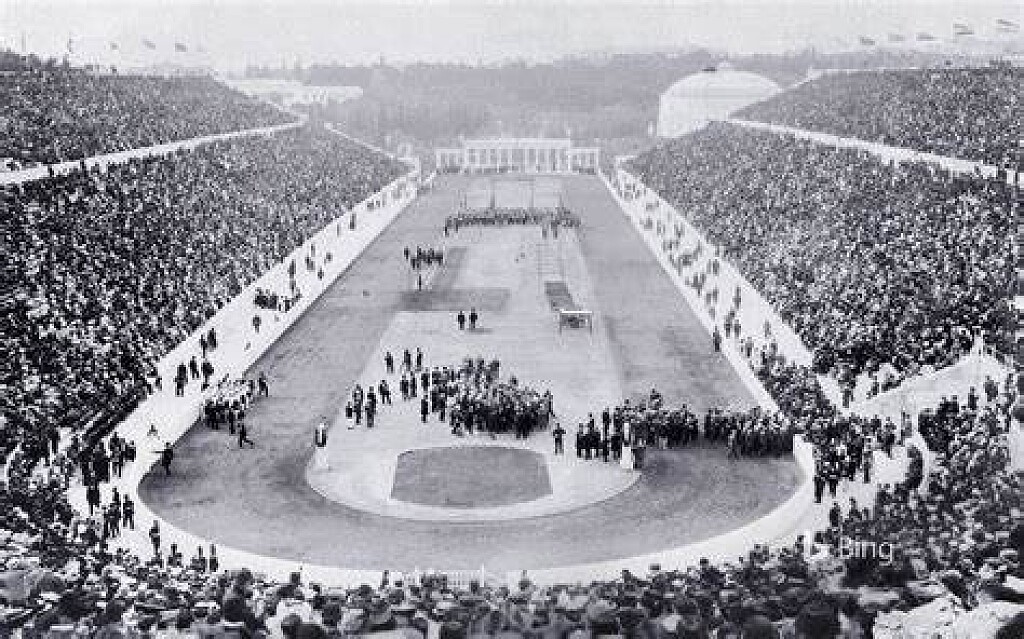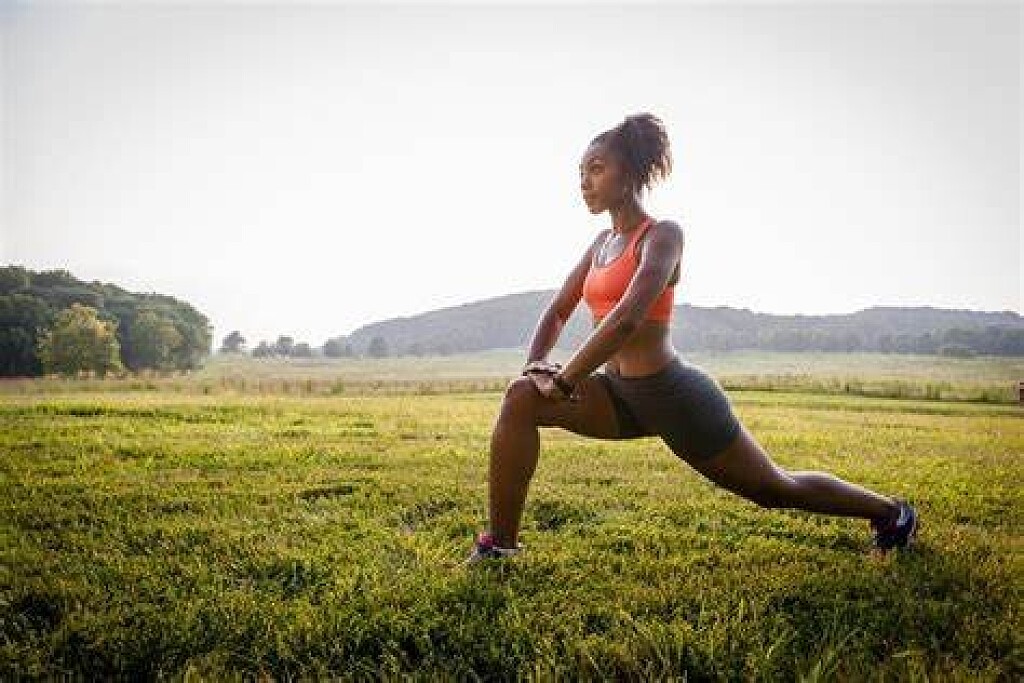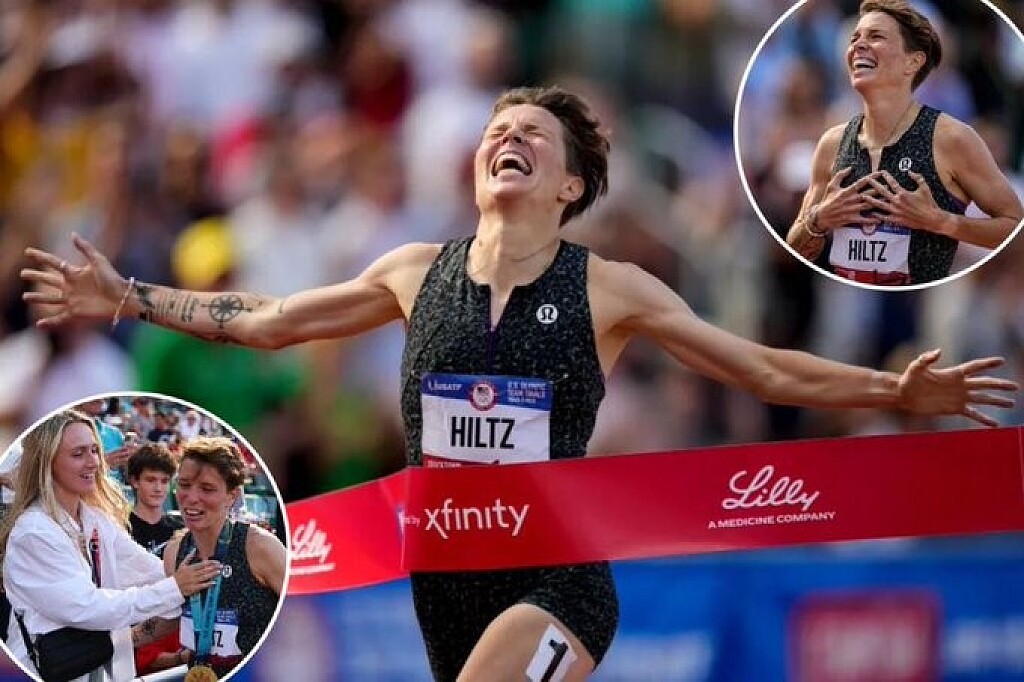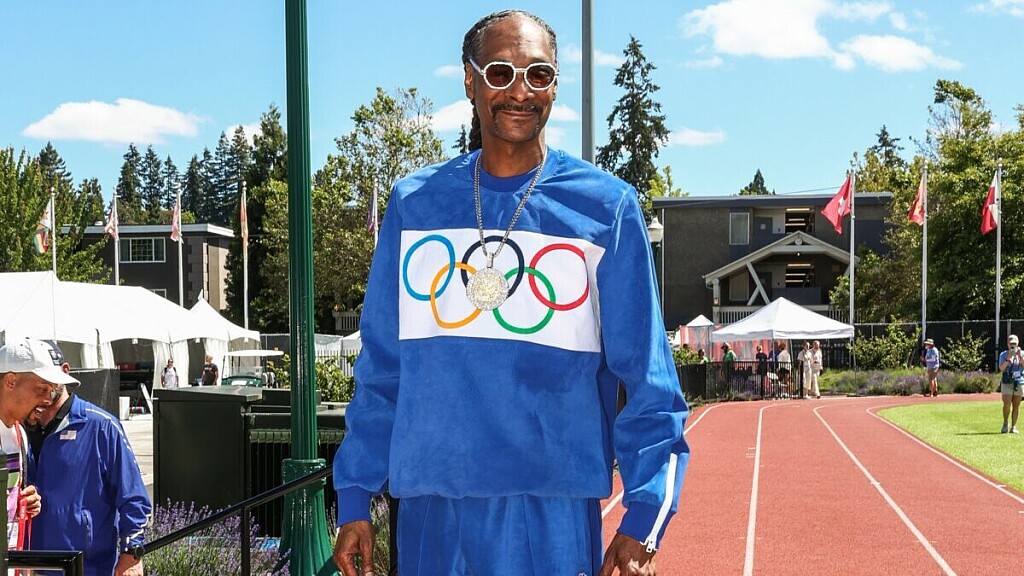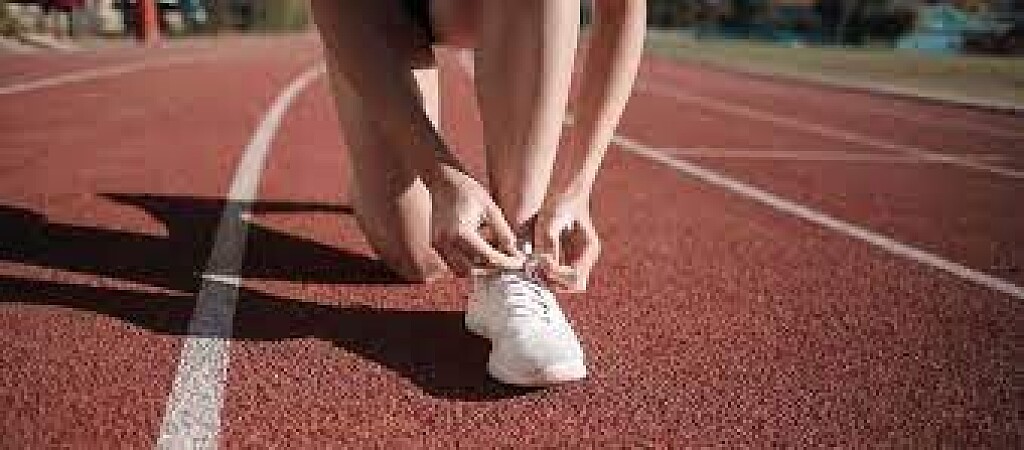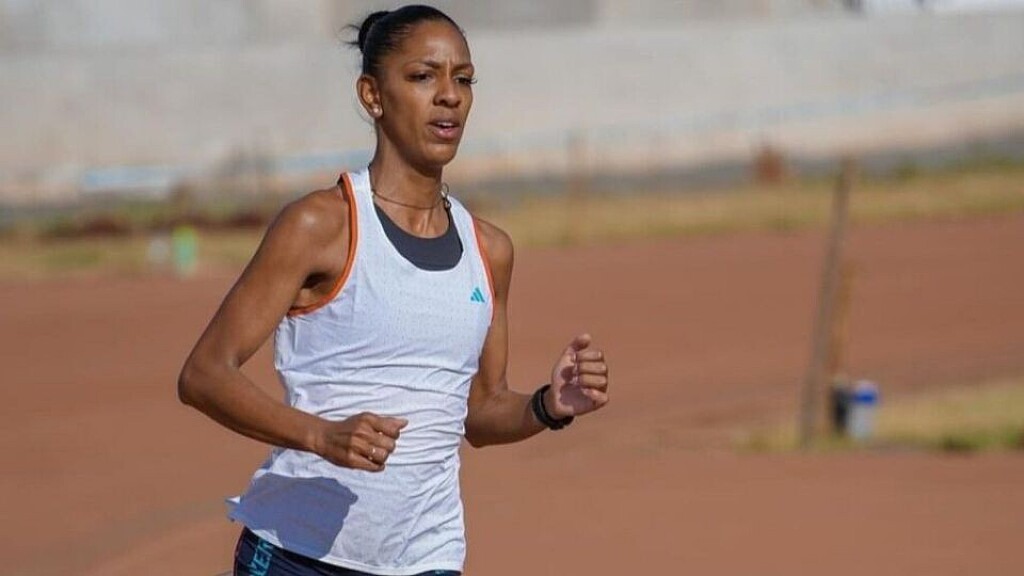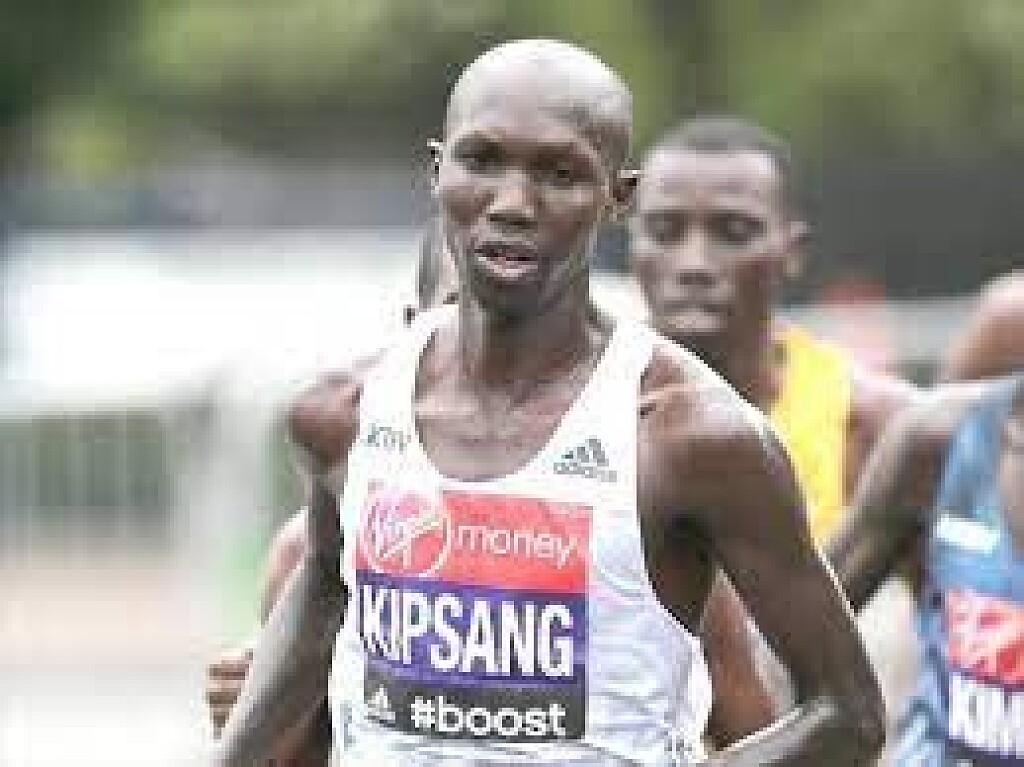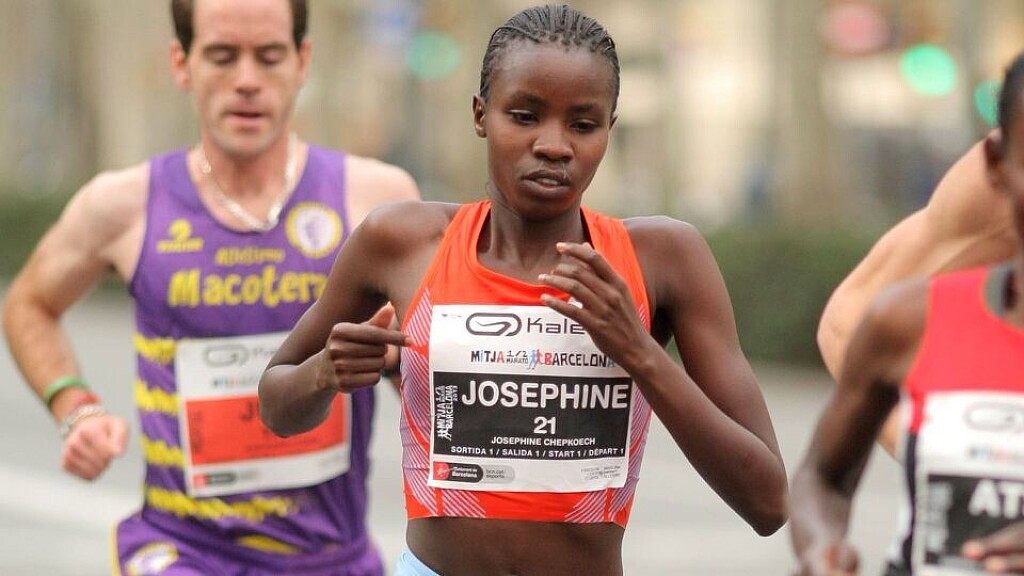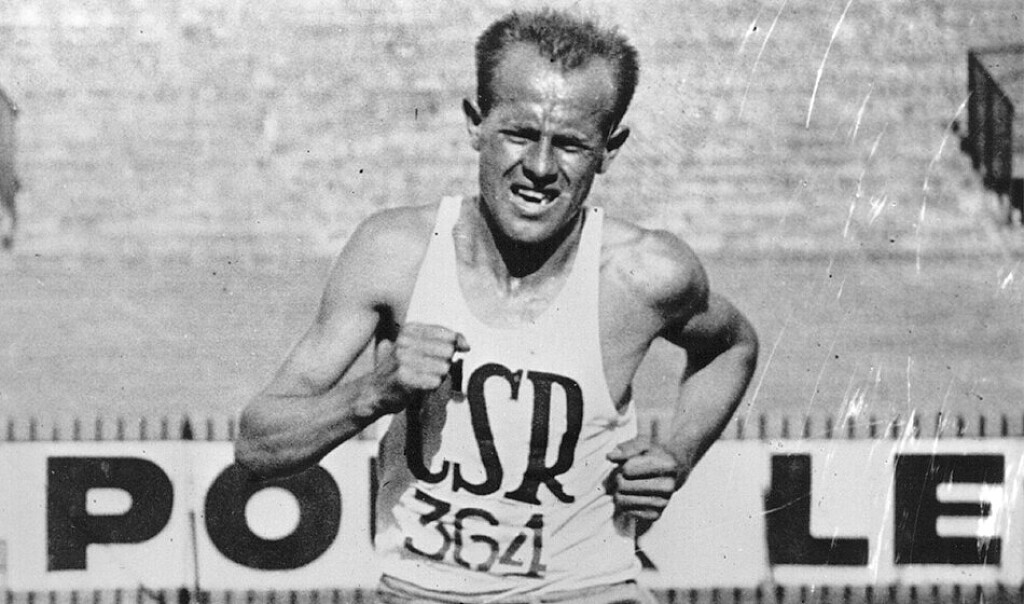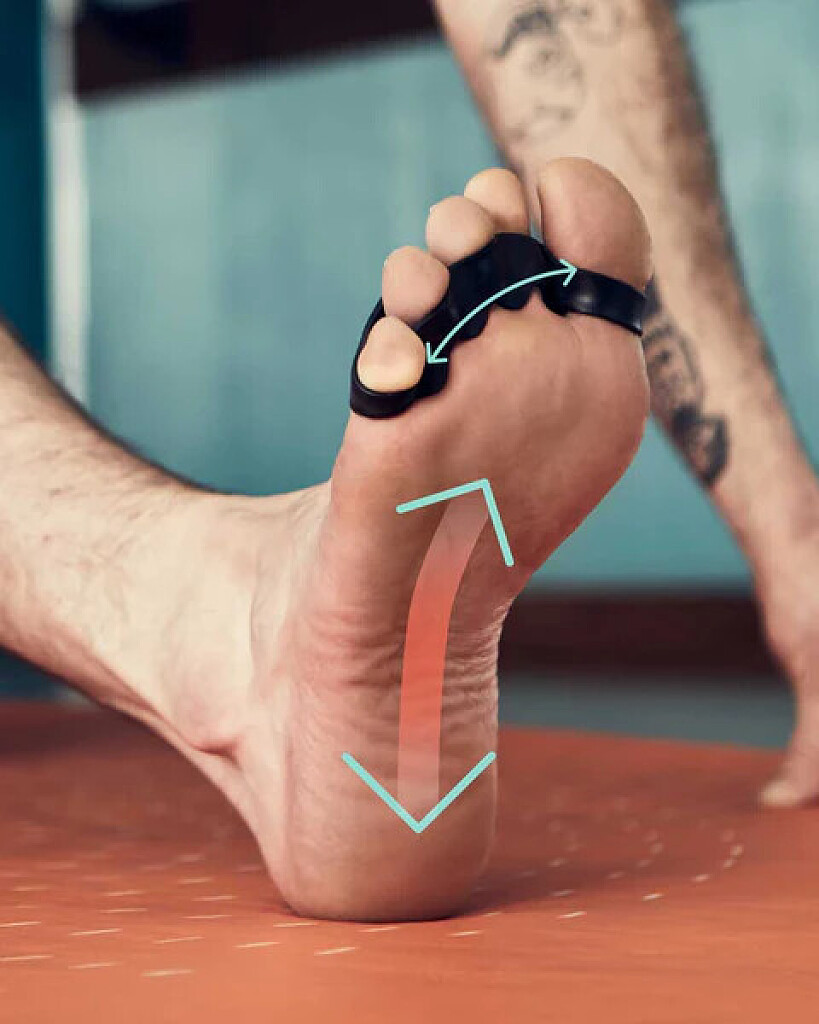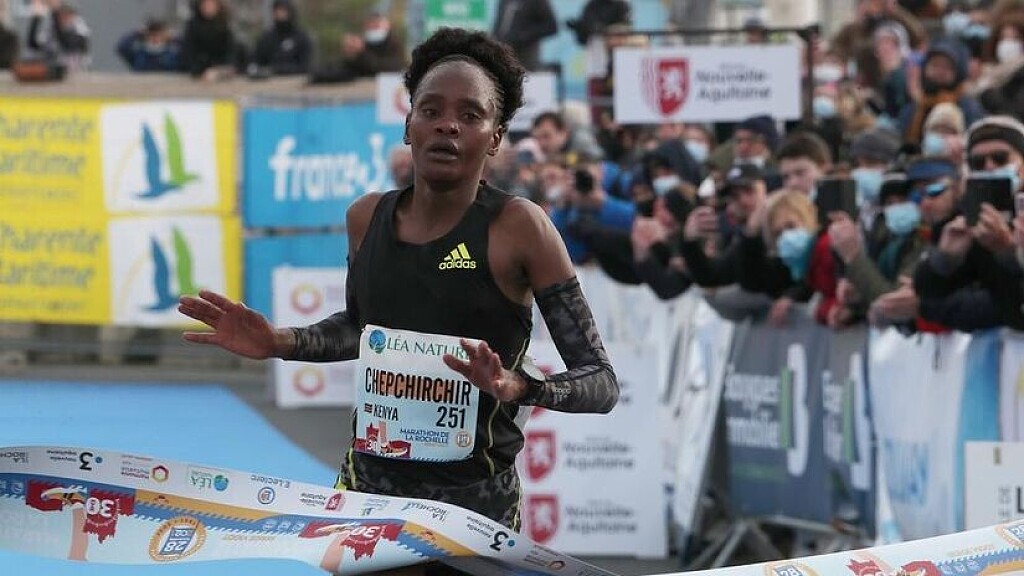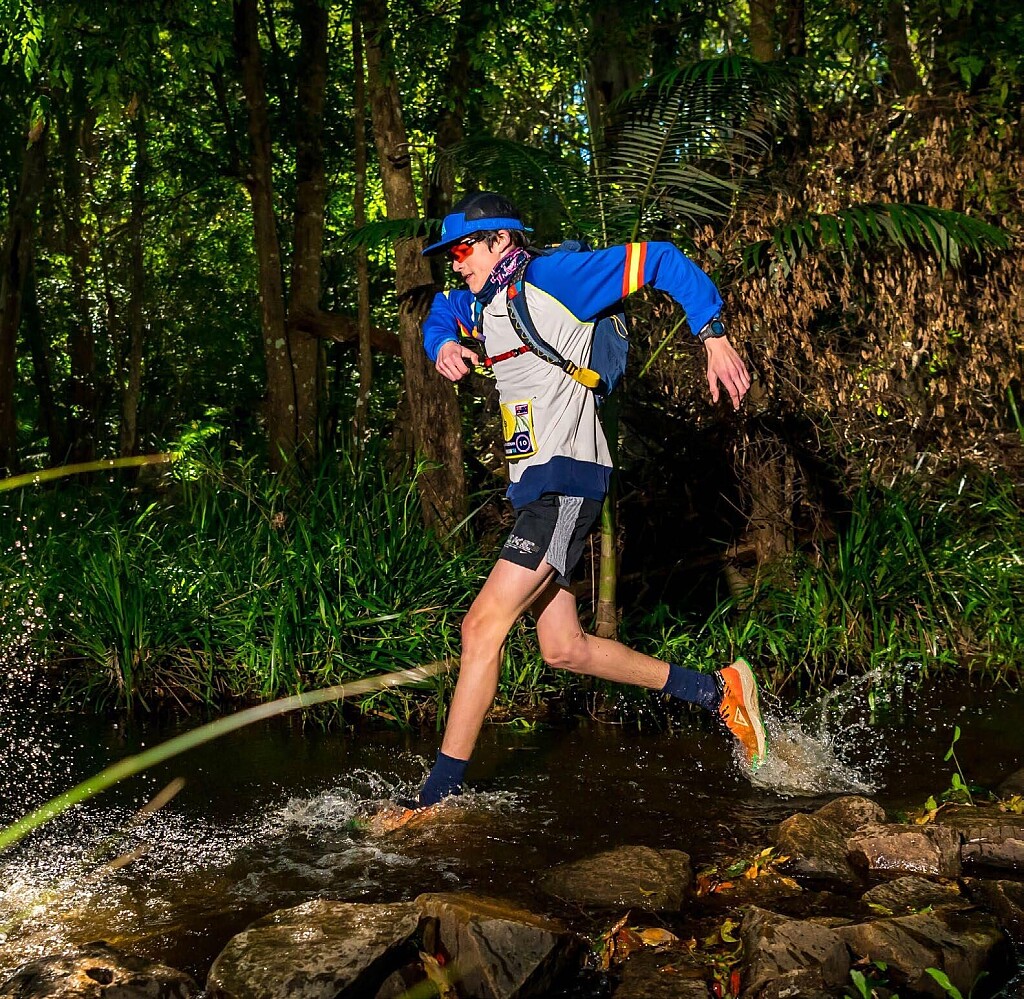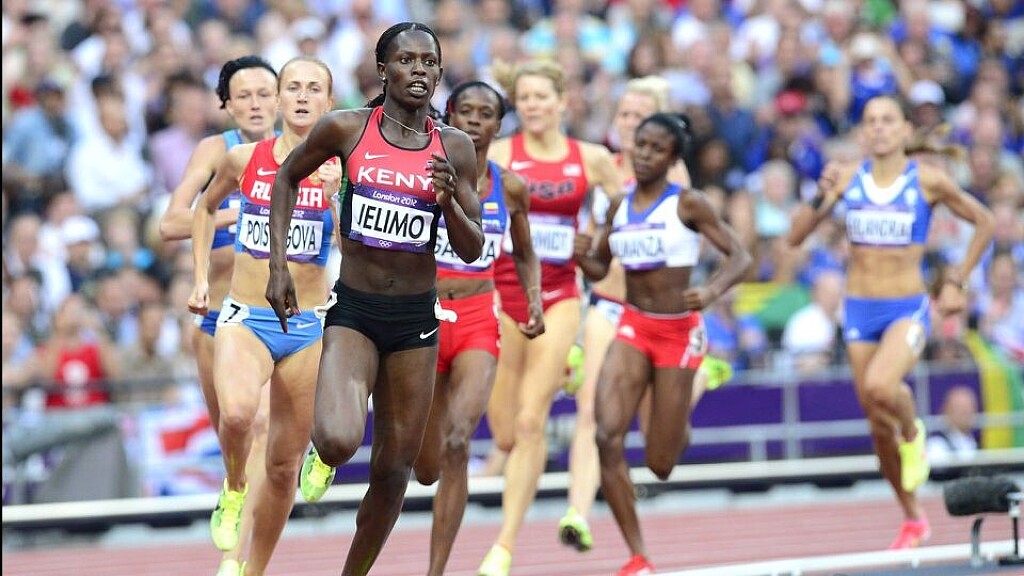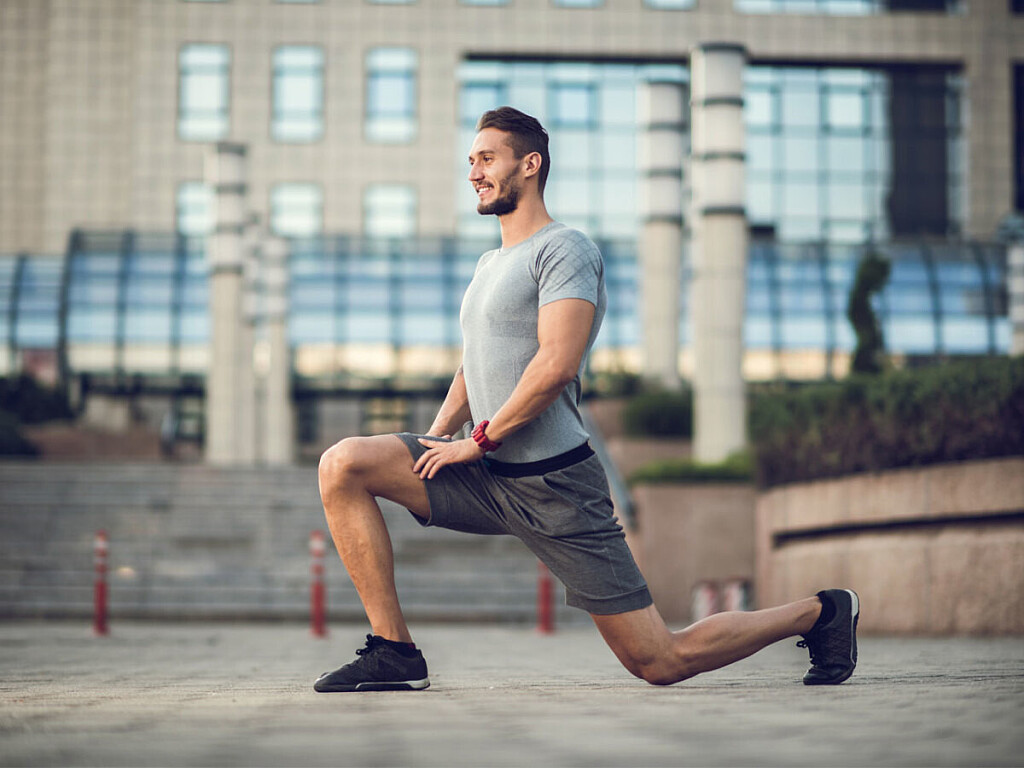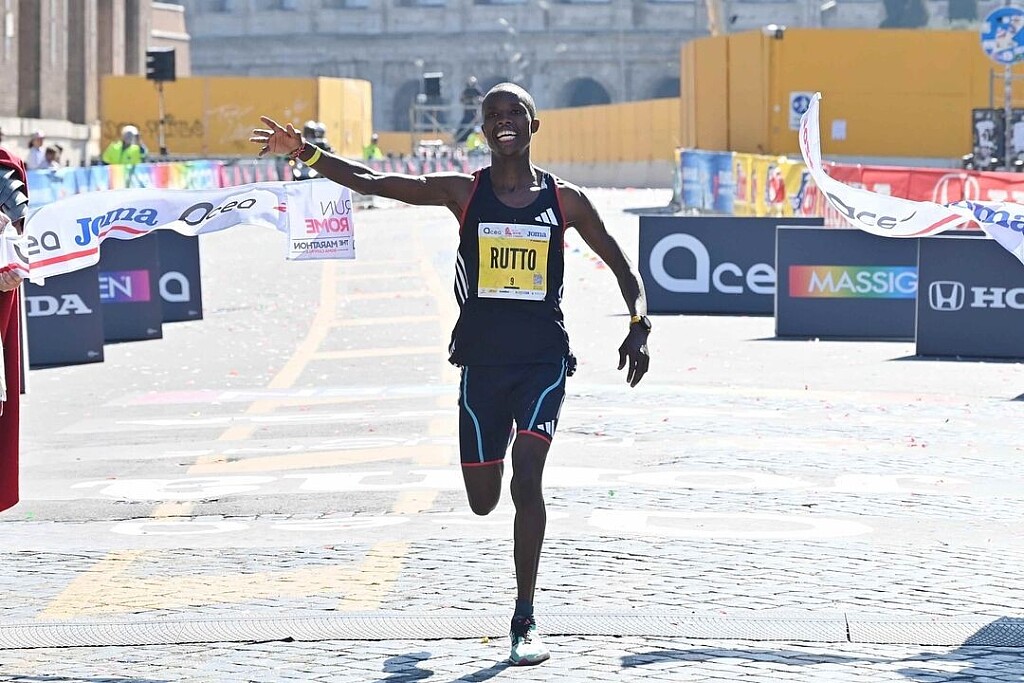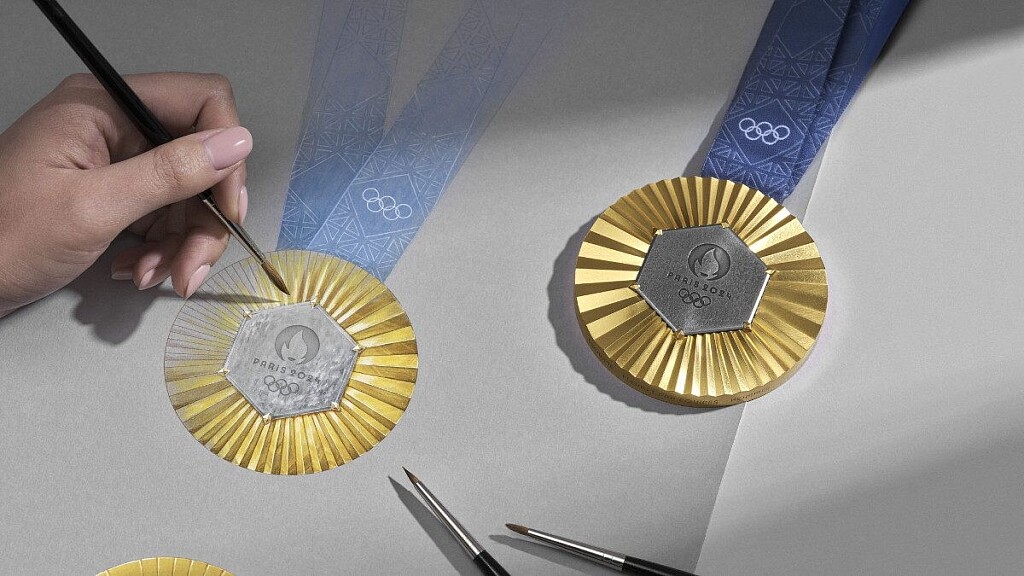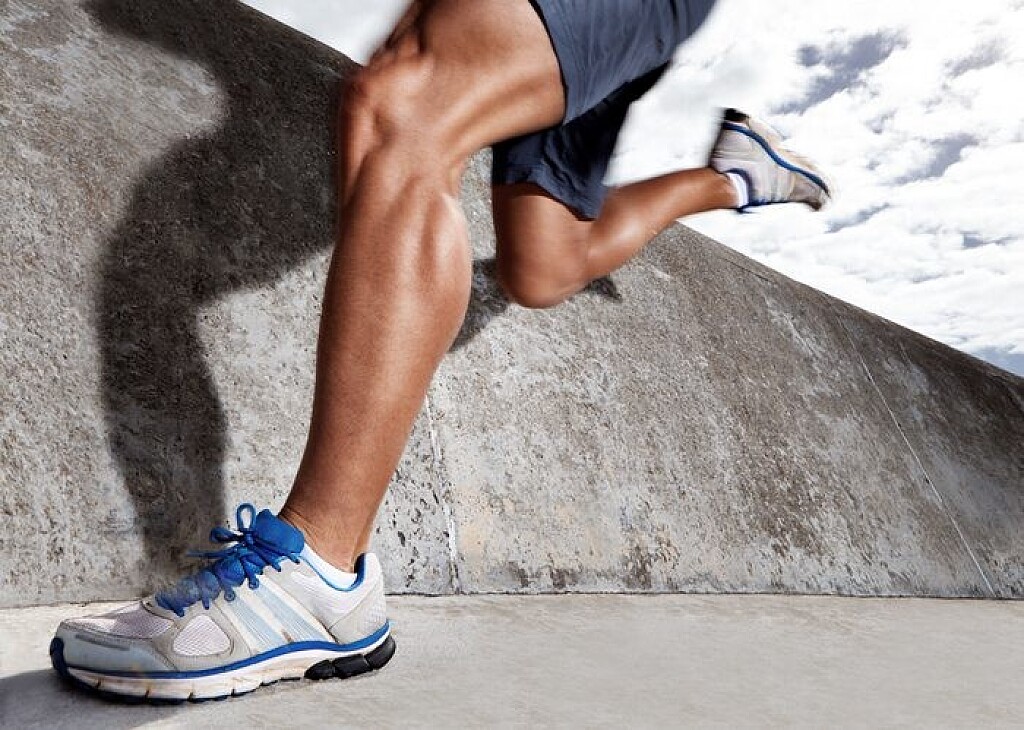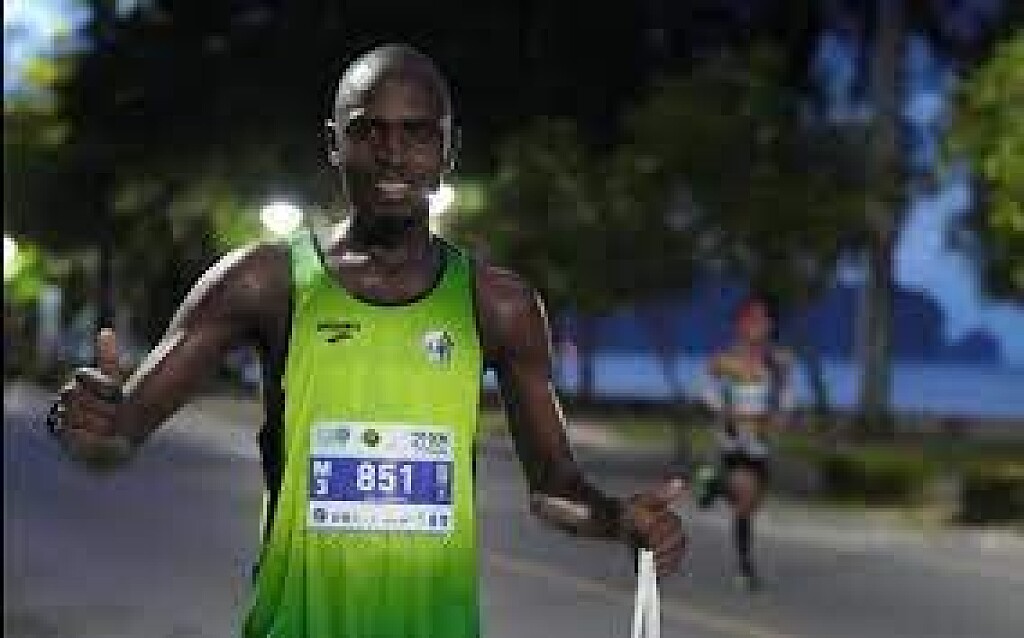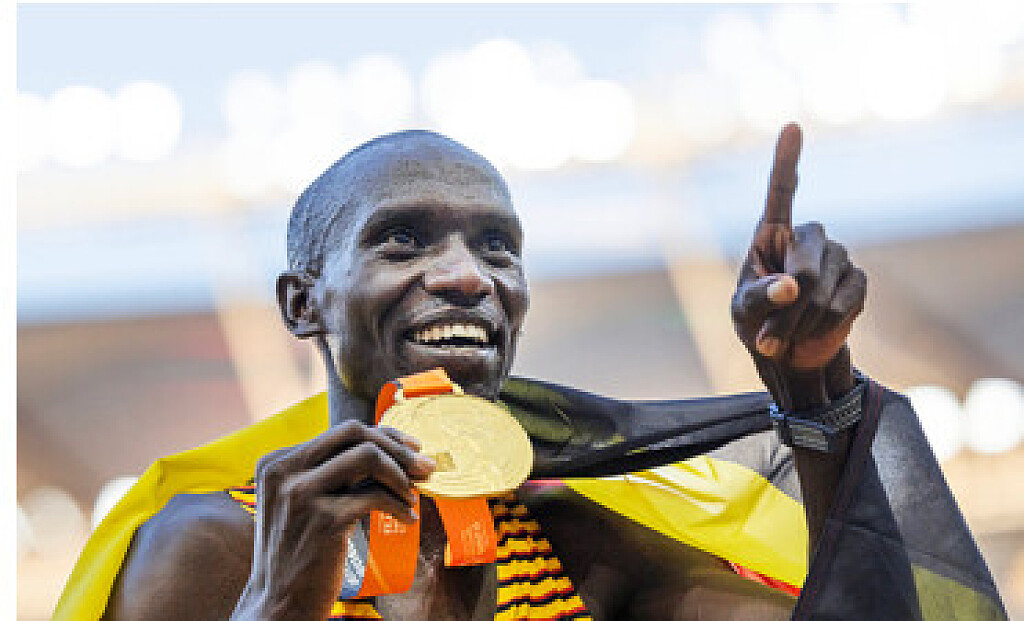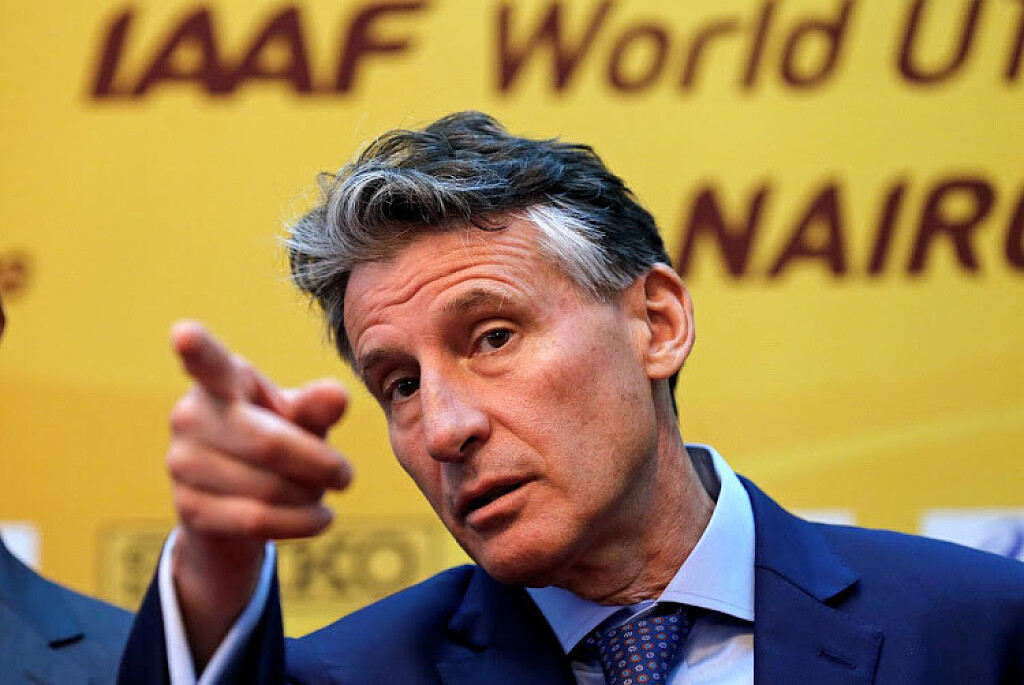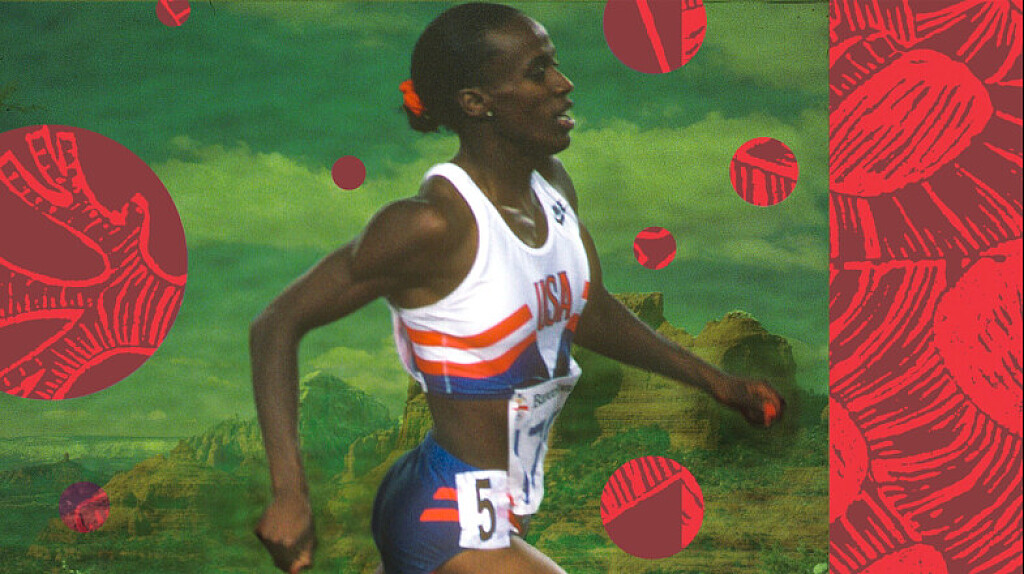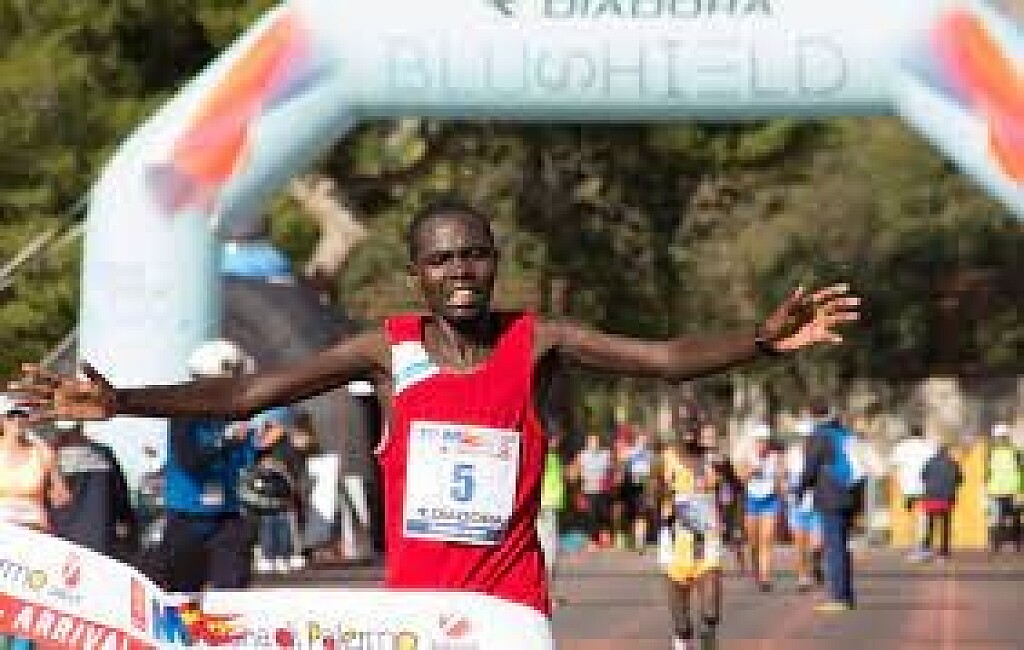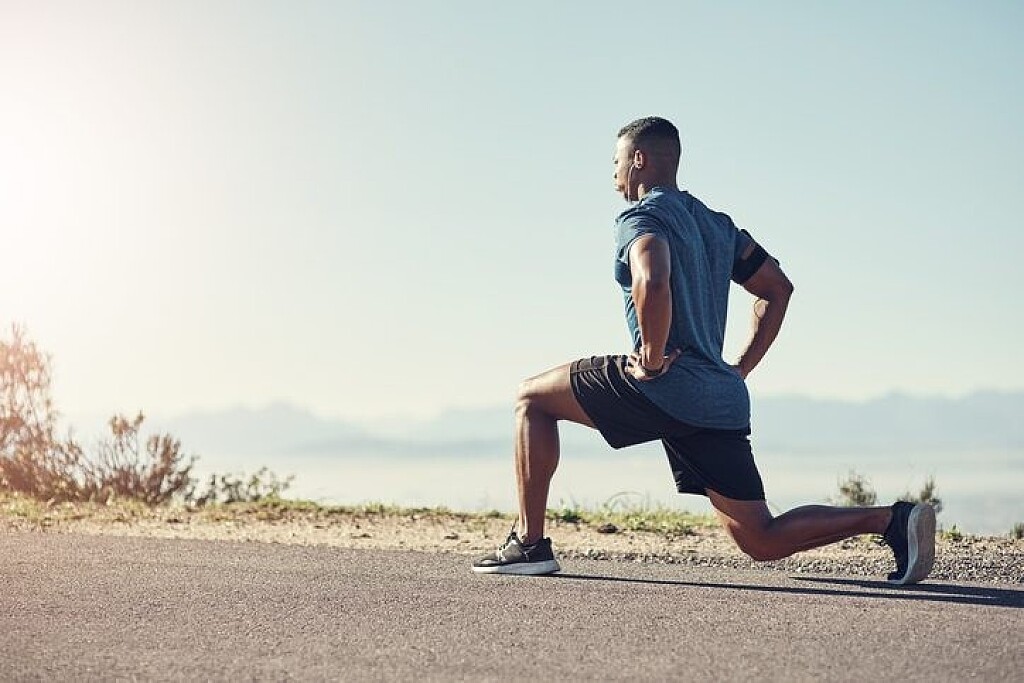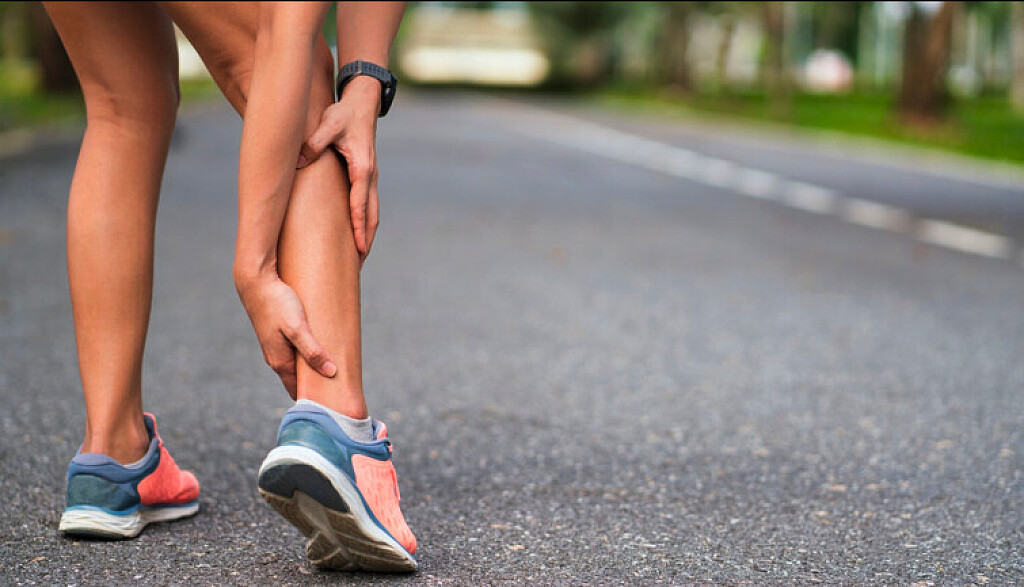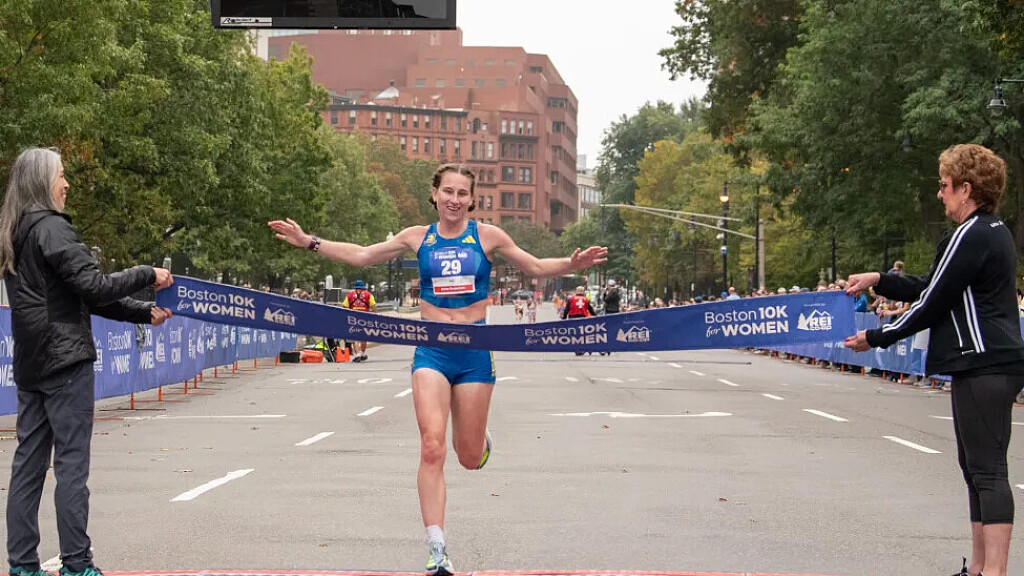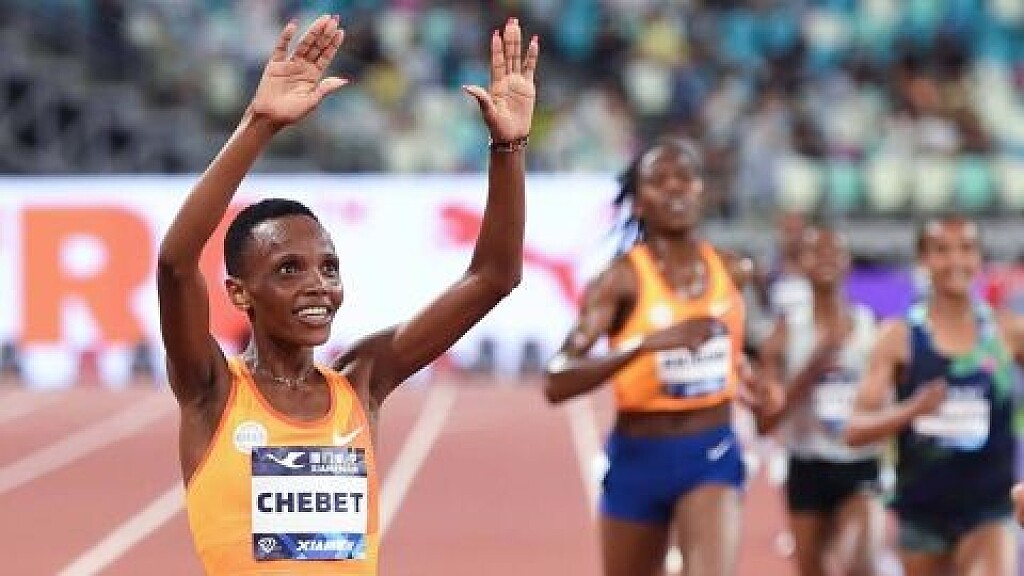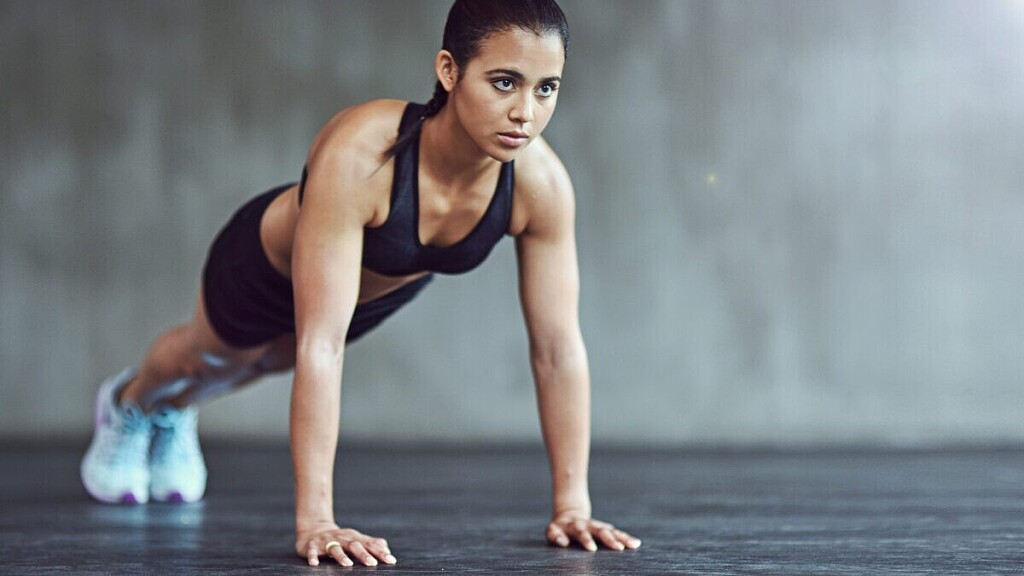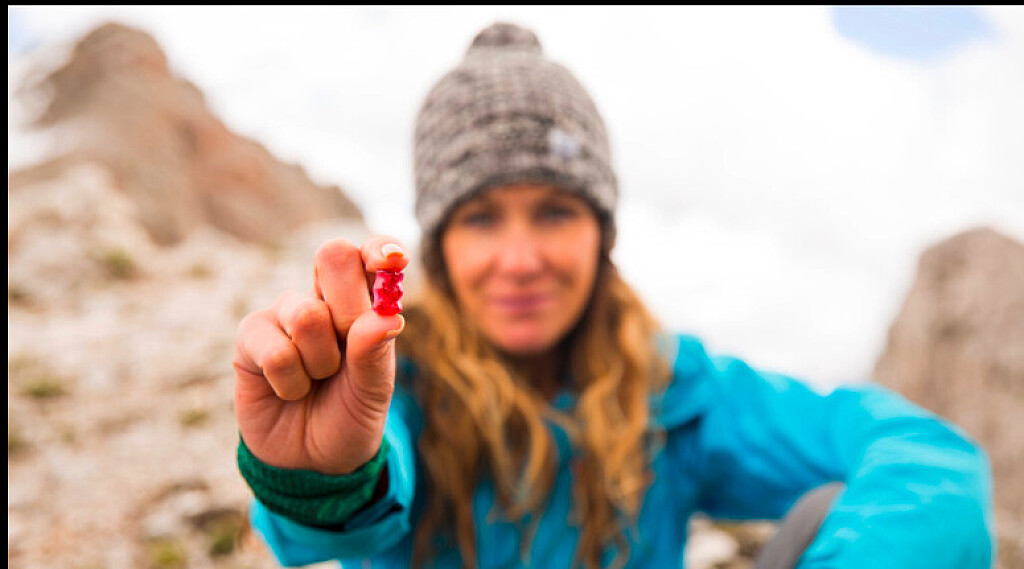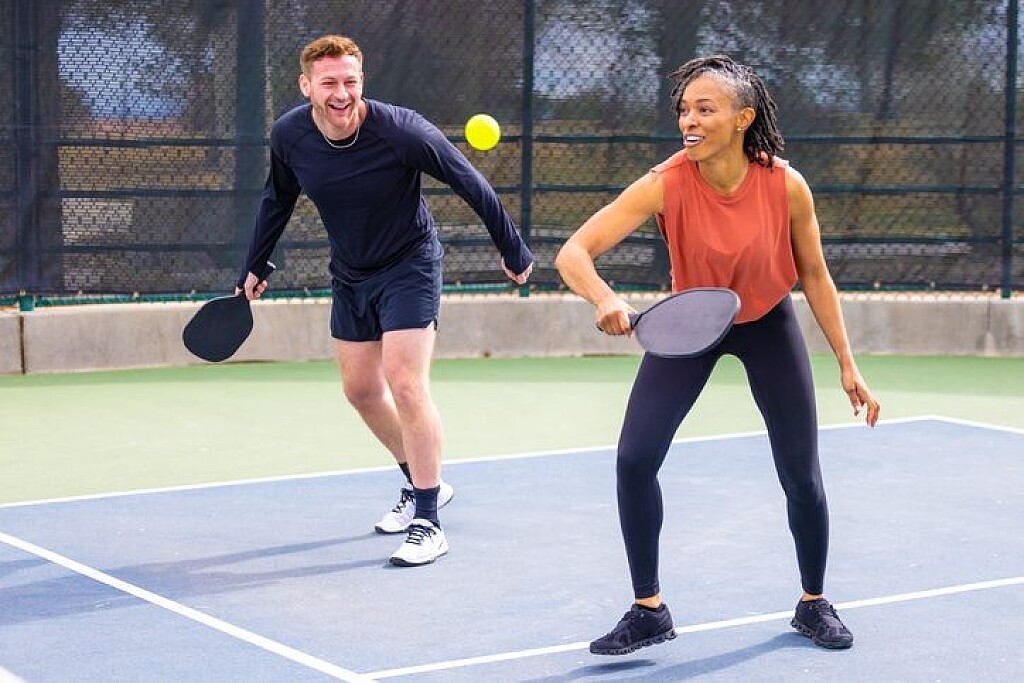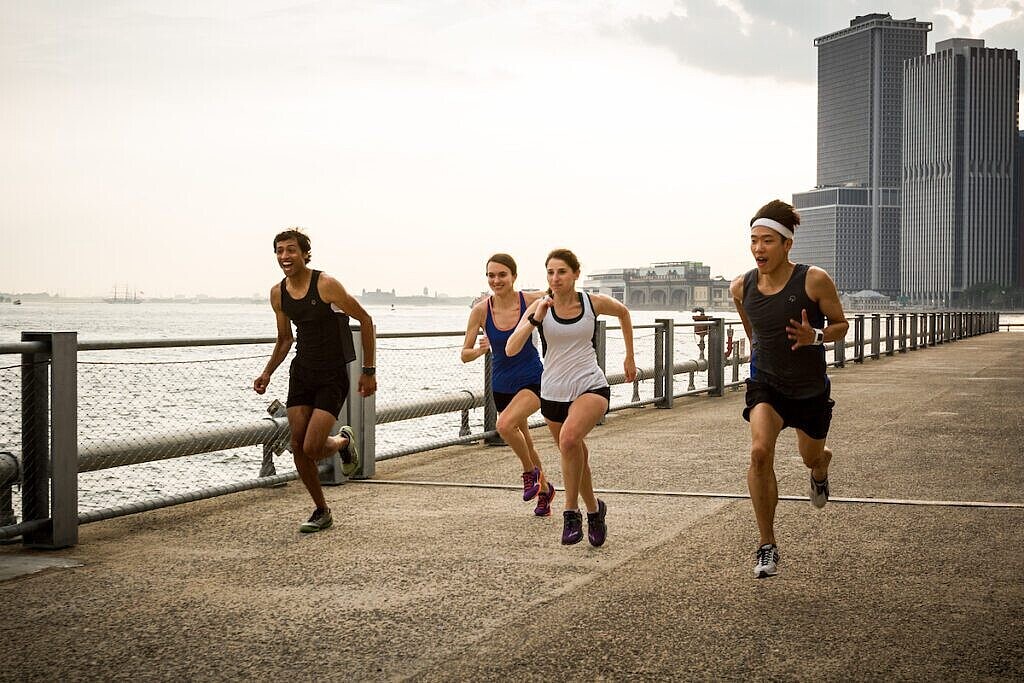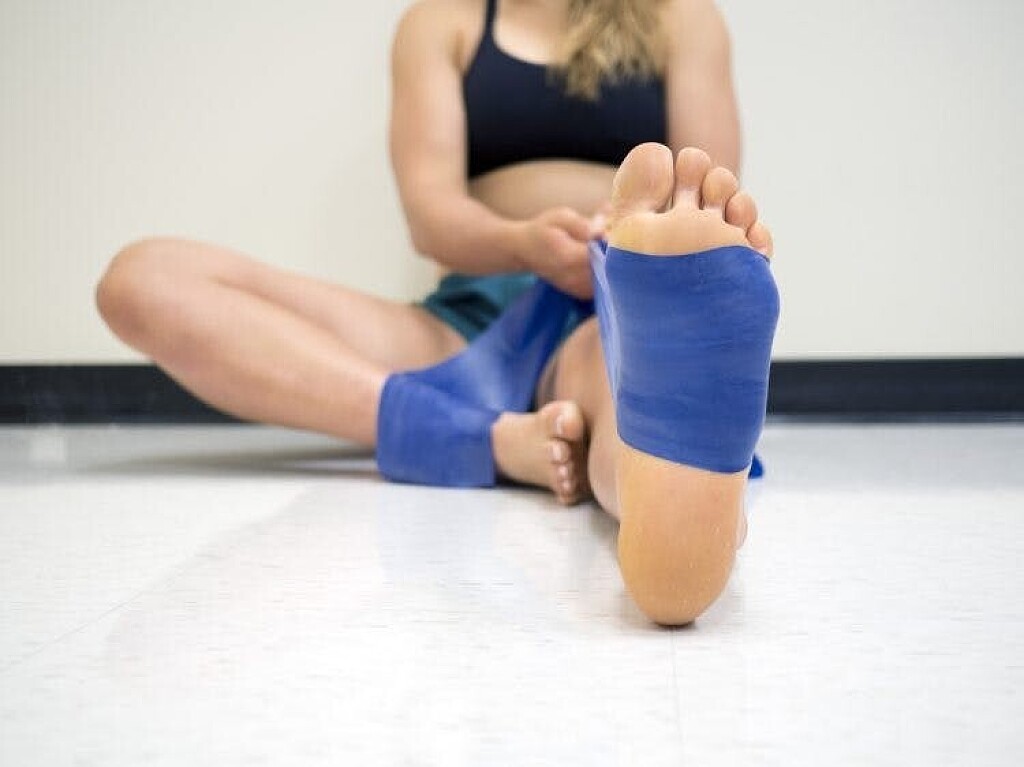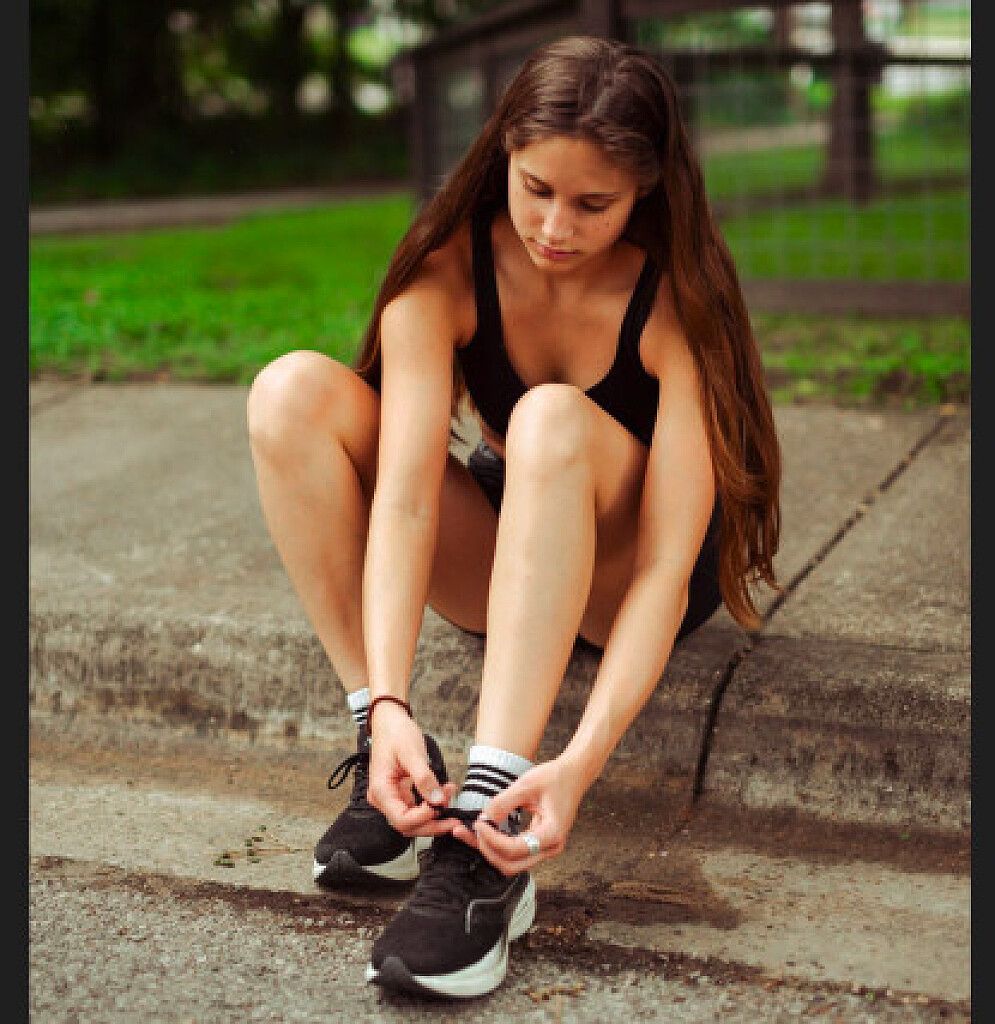Running News Daily
Running News Daily is edited by Bob Anderson. Send your news items to bob@mybestruns.com Advertising opportunities available. Train the Kenyan Way at KATA Kenya and Portugal owned and operated by Bob Anderson. Be sure to catch our movie A Long Run the movie KATA Running Camps and KATA Potato Farms - 31 now open in Kenya! https://kata.ke/
Index to Daily Posts · Sign Up For Updates · Run The World Feed
Articles tagged #IOC
Today's Running News
Kenya’s Olympic Reset: Can NOCK’s New Leadership Spark a Golden Era for Runners?
Kenya’s long-distance running legacy is unmatched. From record-breaking marathons to Olympic podiums, the nation’s athletes have long defined global excellence. Yet behind the scenes, organizational chaos—from the Rio 2016 fiasco to logistical stumbles at Paris 2024—has held runners back.
Now, change is in motion.
At a ceremonial handover August 8 at the National Olympic Committee of Kenya (NOC-K) headquarters in Nairobi, outgoing president Dr. Paul Tergat—a former Olympic silver medalist—passed the baton to Shadrack Maluki. The new leadership promises more than a symbolic shift. For many athletes, it’s a chance to finally be heard.
“We must ensure this institution doesn’t remain strong but underutilized,” Maluki declared in his inaugural speech.
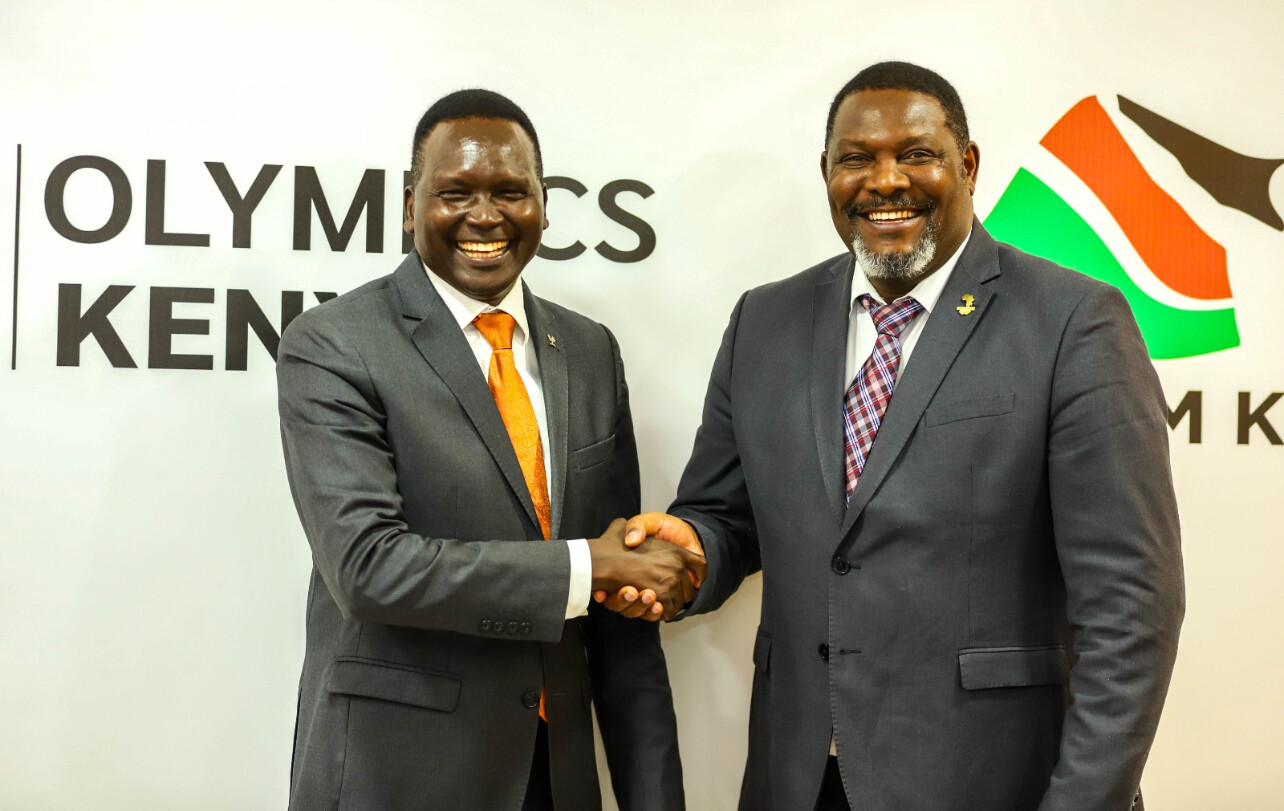
“To our sportsmen and women: we hear you, we see you, and we are here for you. Your welfare, training environments, and post-competition careers are top priorities.”

Paris Lessons, LA Dreams
Kenya’s runners delivered once again in Paris, particularly in the middle- and long-distance events. But that success came despite—rather than because of—the system. Delayed travel, unpaid allowances, and chaotic planning marred preparations.
With the Los Angeles 2028 Olympics just three years away, runners and fans alike are hoping this new leadership shifts Kenya from reactive fixes to long-term strategy.
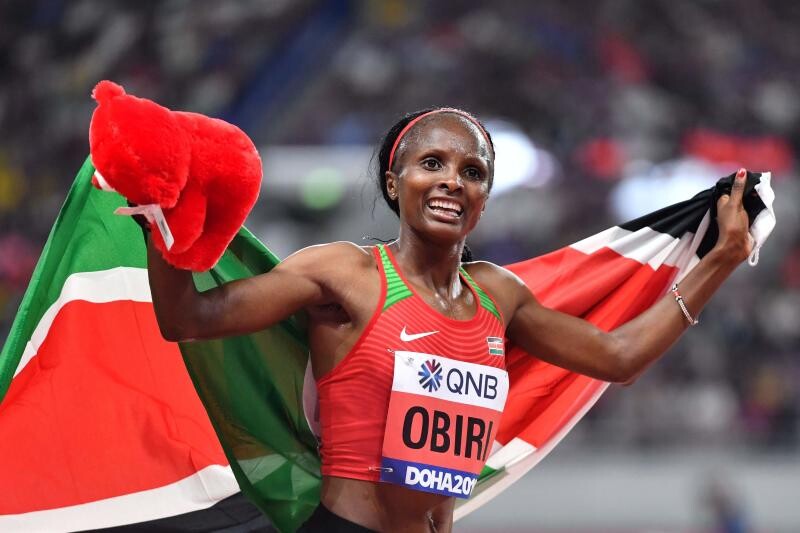
Maluki says the focus will be on structure, inclusivity, and excellence. As one former elite marathoner told My Best Runs, “Athletes don’t need promises. They need systems that work.”
Barnaba Korir: A Voice from the Track
A key figure in this transition is Barnaba Korir, now First Vice President of NOCK. Known for his role as Director of Youth Development at Athletics Kenya (AK), Korir has helped shape the careers of many emerging talents.
“This is not about power,” Korir said. “It’s about turning sport into an industry. Our athletes should chase medals—but also earn livelihoods, build legacies, and inspire the nation.”
Korir’s grassroots focus has already produced results—several Paris Olympians came through AK’s youth system. His appointment signals a stronger bridge between elite runners and the Olympic bureaucracy.
Tergat’s Legacy: Progress, But Not Perfection
Dr. Tergat, who helped stabilize NOCK during his tenure, reflected on his leadership with pride.
“This is the delivery secret behind our transformation of NOCK into a respected and enviable institution,” he said, while acknowledging that more needs to be done.
He thanked corporate partners like Nike, IOC, Safaricom, and Kenya Breweries—and reminded the country that athletes remain Kenya’s “most successful international brand.”
Still, critics argue that reforms under Tergat moved too slowly—especially around athlete support and coordination with federations.
Not Just a Ceremony—A Mandate
The official handover included Olympic charters, financial instruments, and office keys. But the moment wasn’t just ceremonial—it was a mandate.
“There is no reinventing the wheel,” Maluki said. “Only oiling and reinvigorating the parts that drive our momentum.”
Athletes are now watching to see whether these words turn into action.
What Kenya’s Runners Expect
For the thousands training daily across Kenya’s highlands, this isn’t politics—it’s personal. The hope is simple:
No more last-minute chaos. No missing uniforms. No unpaid dues.
Athletes want elite coaching, consistent support, clean sport policies, and long-term investment. As global rivals close the gap, Kenya must evolve—or risk being outpaced.
The Baton Has Been Passed. Can They Run With It?
Kenya’s runners continue to carry the nation’s Olympic dreams. Now it’s up to NOCK’s new leadership—anchored by Maluki and powered by Korir—to return the favor.
From the heartbreak of Rio to the high points of Paris, Kenya stands at a pivotal moment. The goal ahead is clear: build a system worthy of its champions—and make the road to Los Angeles 2028 one of purpose, preparation, and pride.
by Robert Kibet :
Login to leave a comment
Kirsty Coventry Becomes First Female IOC President in a Controversial Election
In a historic and contentious election, Kirsty Coventry has been elected as the first female and first African president of the International Olympic Committee (IOC). The election, held in Costa Navarino, Greece, saw Coventry secure 49 out of 97 votes in the first round, defeating other high-profile candidates, including Juan Antonio Samaranch Jr. and Lord Sebastian Coe.
Her victory marks a significant milestone in the IOC’s 131-year history, but it has not come without controversy. While she is celebrated as one of the greatest Olympic athletes from Africa, her political ties to Zimbabwe have raised concerns about how she will lead the Olympic movement into the future.
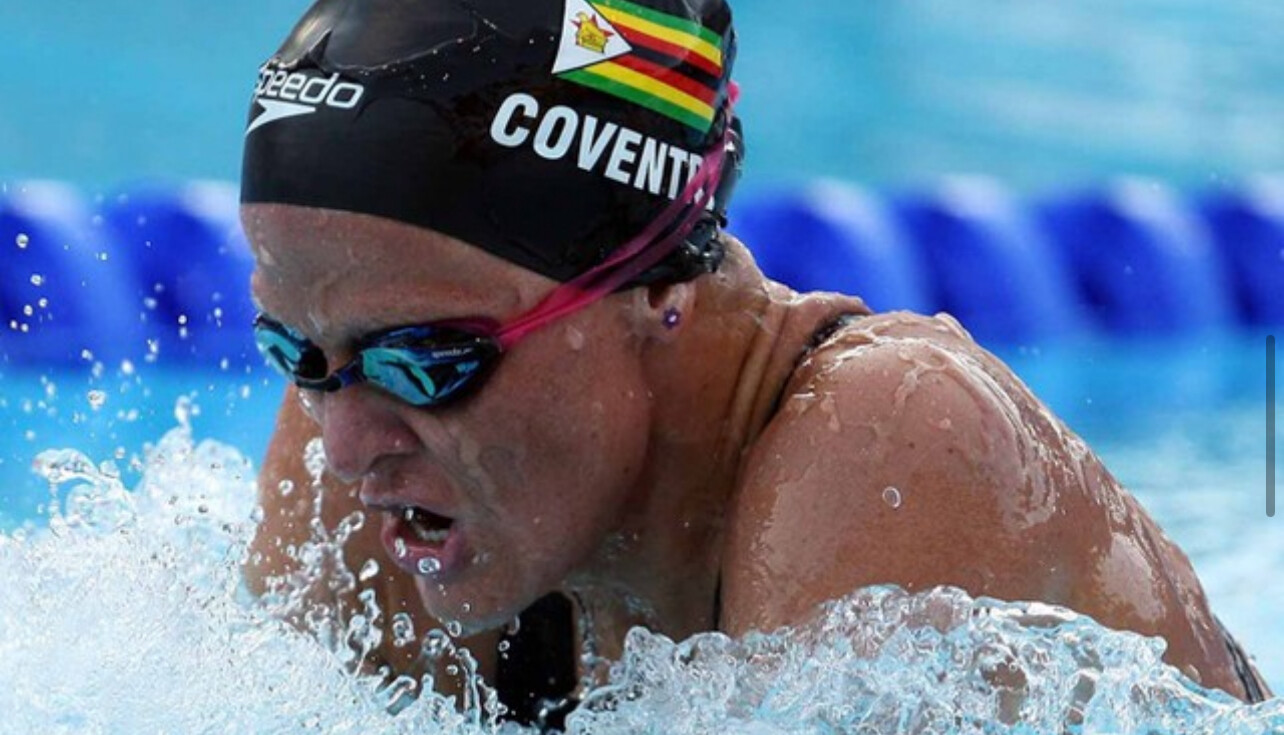
Kirsty Coventry: An Olympic Champion Turned Global Sports Leader
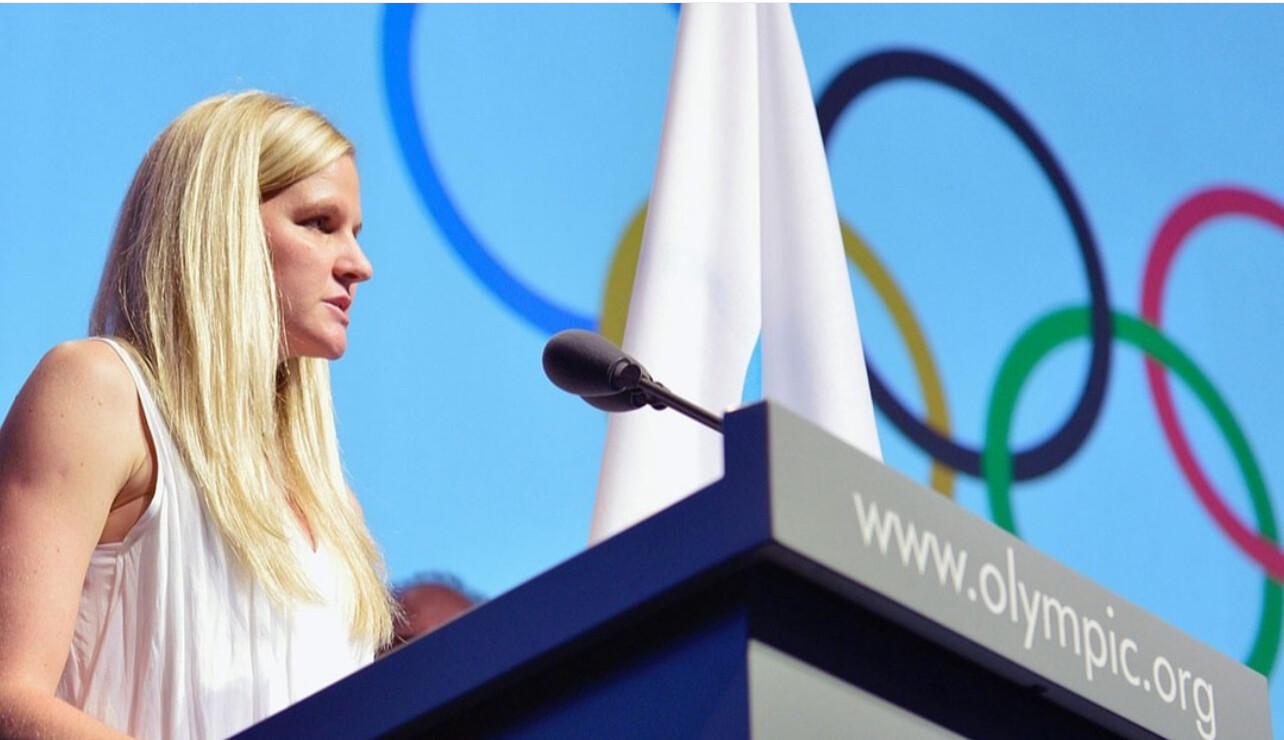
Before stepping into sports administration, Kirsty Coventry was a dominant force in competitive swimming. Born in Zimbabwe, she became one of the greatest backstrokers of all time, earning seven Olympic medals across five Olympic Games.

Her breakthrough moment came at the 2004 Athens Olympics, where she won gold in the 200m backstroke, along with silver and bronze medals in other events. Four years later, at the 2008 Beijing Olympics, she added four more medals to her collection, solidifying her reputation as Africa’s most decorated Olympian.

Beyond her success in the pool, Coventry set multiple world records, won two World Championship titles, and became a role model for young athletes across the African continent. After retiring from competition, she transitioned into sports governance, serving as Chair of the IOC Athletes’ Commission and playing a key role in Olympic policy-making.
However, her political involvement in Zimbabwe—where she served as Minister of Youth, Sport, Arts, and Recreation—has generated criticism. Some view her efforts as beneficial for youth sports development, while others argue that her association with a government accused of human rights violations could impact the IOC’s credibility.
Unexpected Results and IOC Power Struggles
Coventry’s election defied many expectations. Sebastian Coe, the two-time Olympic gold medalistand president of World Athletics, was widely seen as a frontrunner. However, he received only eight votes, a shocking defeat that underscores the complex political dynamics within the IOC.
Coe’s supporters believed his leadership in global athletics and Olympic advocacy would make him the ideal candidate, but the vote suggests that power within the IOC is shifting in new directions. Coventry’s victory signals a desire for a fresh perspective, though questions remain about how she will navigate the challenges ahead.
Challenges Ahead for Coventry’s Leadership
As she prepares to take office on June 23, 2025, Coventry faces several pressing issues that will shape her presidency:
• Financial and Sponsorship Issues – The IOC’s business model is under scrutiny, with shifting audience engagement and declining sponsorship deals requiring new revenue strategies.
• Doping and Fair Play – Strengthening anti-doping policies and restoring trust in fair competition remain major concerns.
• Inclusion and Political Tensions – The debate over transgender athletes, athlete activism, and geopolitical tensions around upcoming Games demand careful navigation.
• Upcoming Olympic Games – With the 2028 Los Angeles Olympics and 2032 Brisbane Games ahead, Coventry must oversee event planning, sustainability efforts, and global participation.
The Future of the IOC Under Coventry
Kirsty Coventry’s election is both a groundbreaking achievement and a contentious decision. As the first woman and first African to lead the world’s most powerful sports organization, she carries the weight of expectation, scrutiny, and Olympic tradition.
Will she modernize the Olympic movement and steer it into a new era of inclusivity and transparency? Or will her political controversies and IOC power struggles overshadow her leadership?
One thing is certain—Coventry’s presidency will shape the future of the Olympic Games in ways never seen before.
For more updates on this developing story and the world of Olympic sports, stay tuned to My Best Runs.
by Boris Baron
Login to leave a comment
LA 2028 Summer Olympics Games
Discover how the Los Angeles Candidature Committee describes their vision for the Games and the legacy they plan to leave behind: For centuries, people have been following the sun to California – to a coastal paradise of beautiful weather, inspiring landscapes and an ocean of possibilities. Since it was first settled, LA – the City of Angels – has built...
more...Sebastian Coe Advocates for Olympic Rescheduling and Tackles Online Abuse
In light of escalating global temperatures, Lord Sebastian Coe, President of World Athletics and a prominent candidate for the International Olympic Committee (IOC) presidency, has proposed a reevaluation of the traditional summer scheduling of the Olympic Games.
He suggests that, by 2040, it may be necessary to adjust the global sports calendar to accommodate these climatic shifts. Drawing parallels to events like the 2022 FIFA World Cup in Qatar, which was held successfully in November and December to avoid extreme heat, Coe emphasizes the need for flexibility in scheduling major sporting events. He questions the feasibility of hosting events like the World Athletics Championships in cities such as Budapest or Paris during August, given the rising temperatures.

In addition to climate concerns, Coe has expressed a strong commitment to combating online abuse directed at athletes. He has labeled the perpetrators of such abuse as “pond life” and underscored the necessity for more robust measures to protect athletes, especially women, from harassment on social media platforms.

Highlighting incidents involving athletes like Emma Raducanu and Eilish McColgan, Coe has pledged to engage with tech industry leaders, including Elon Musk and Mark Zuckerberg, to enhance safeguards against online abuse. He also proposes the establishment of a task force dedicated to protecting female athletes from gender-based violence.

These initiatives reflect Coe’s broader vision for the future of global sports, emphasizing adaptability in the face of environmental challenges and a proactive stance against the misuse of digital platforms to harm athletes.

Upcoming Summer Olympics
• 2028: Los Angeles, United States, from July 14 to July 30, 2028.
• 2032: Brisbane, Australia, from July 23 to August 8, 2032.
These dates and locations have been confirmed by the International Olympic Committee.
Additionally, Coe has proposed bold ideas, such as potentially moving some indoor sports from the Summer Olympics to the Winter Games, to modernize the event and address challenges posed by climate change.
While these proposals are not directed specifically at the Los Angeles 2028 or Brisbane 2032 Games, they reflect Coe’s broader vision for the future of the Olympics.
Login to leave a comment
Doping Dilemma: How WADA's Policies Are Failing Our Sport
I am alarmed by how the World Anti-Doping Agency (WADA) is policing our sport. It's disheartening to see athletes win races only to be stripped of their titles months later due to delayed doping allegations. This approach undermines the integrity of athletics and, in the long run, does more harm than good.
Having dedicated my life to running—I ran my first mile on February 16, 1962, and I discovered my passion for our sport after clocking a 2:08.5 in a 880-yard race JUne 1, 1963—I've witnessed the sport's evolution firsthand. As the founder and publisher of Runner’s World for 18 years and, since 2007, the editor and publisher of My Best Runs, I am concerned about the professional side of athletics.

The Flaws in WADA's Zero-Tolerance Policy
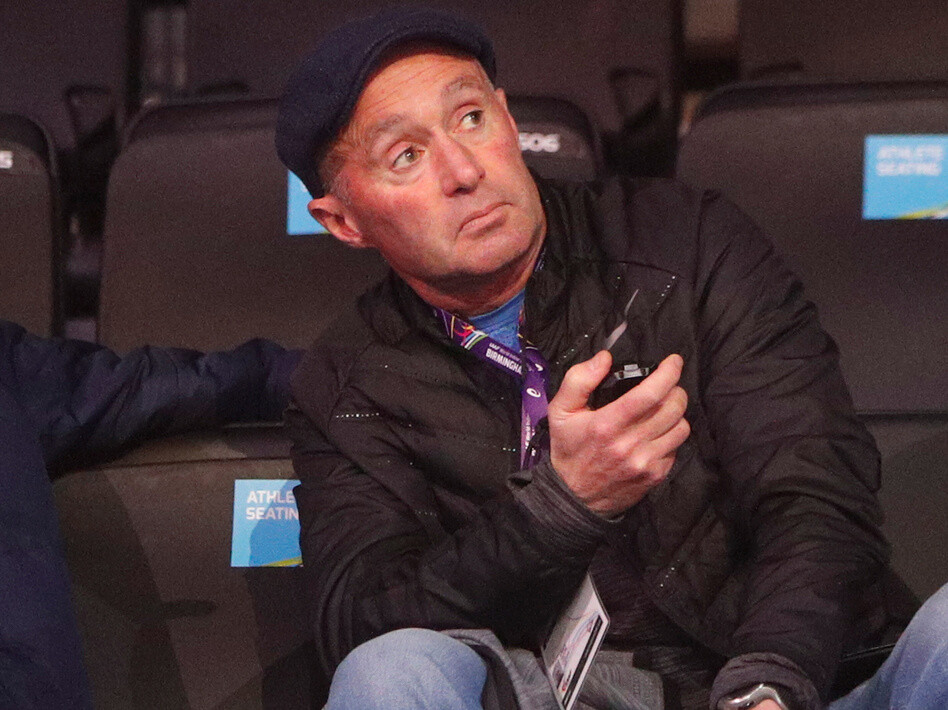
WADA's strict liability standard holds athletes accountable for any prohibited substance in their system, regardless of intent. This has led to controversial sanctions, such as the four-year ban of American runner Shelby Houlihan. She tested positive for the steroid nandrolone, which she attributed to consuming a pork burrito. Despite her defense, the ban was upheld, raising questions about the fairness of such rigid policies.
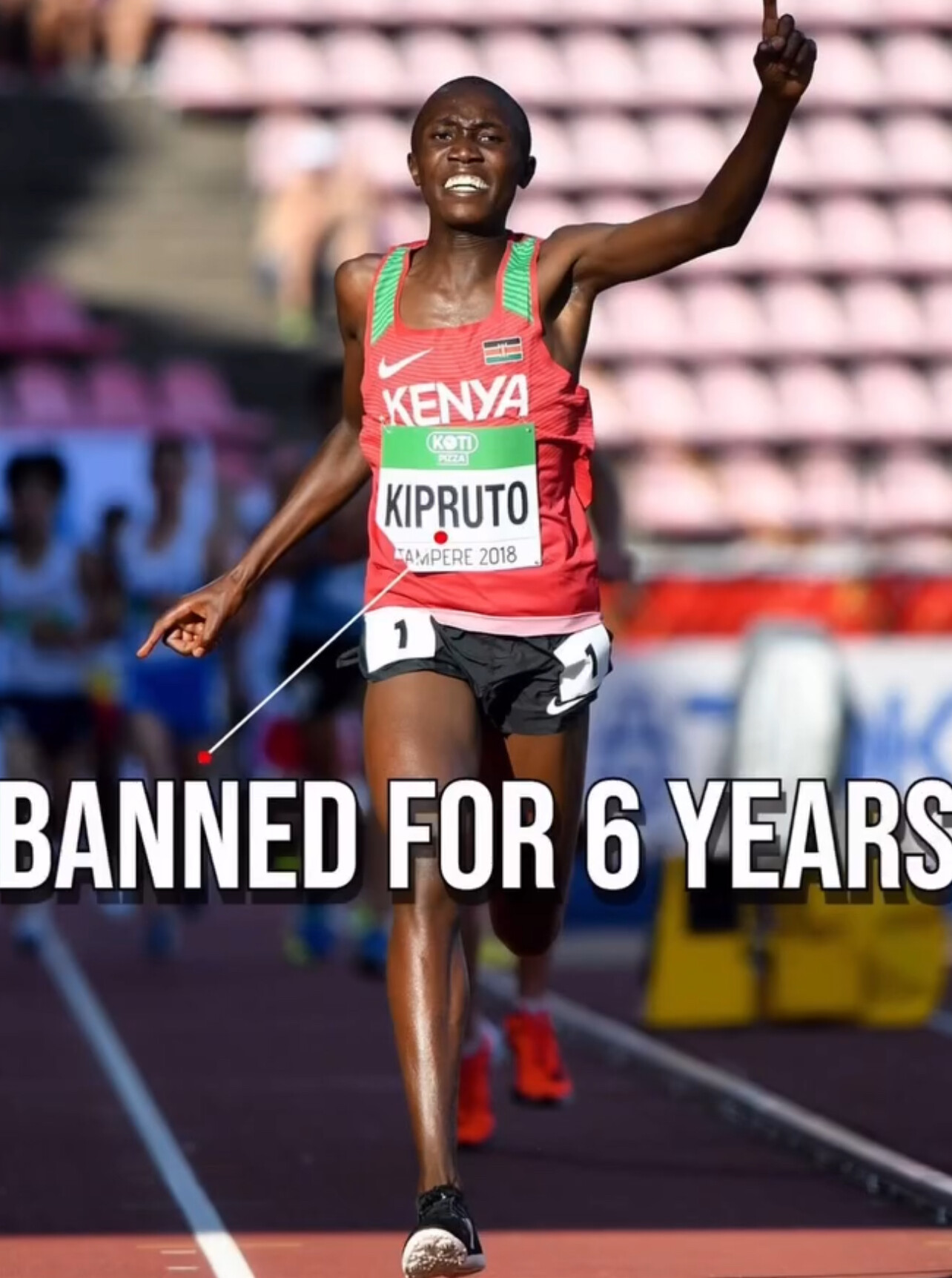
Overhauling the Banned Substances List
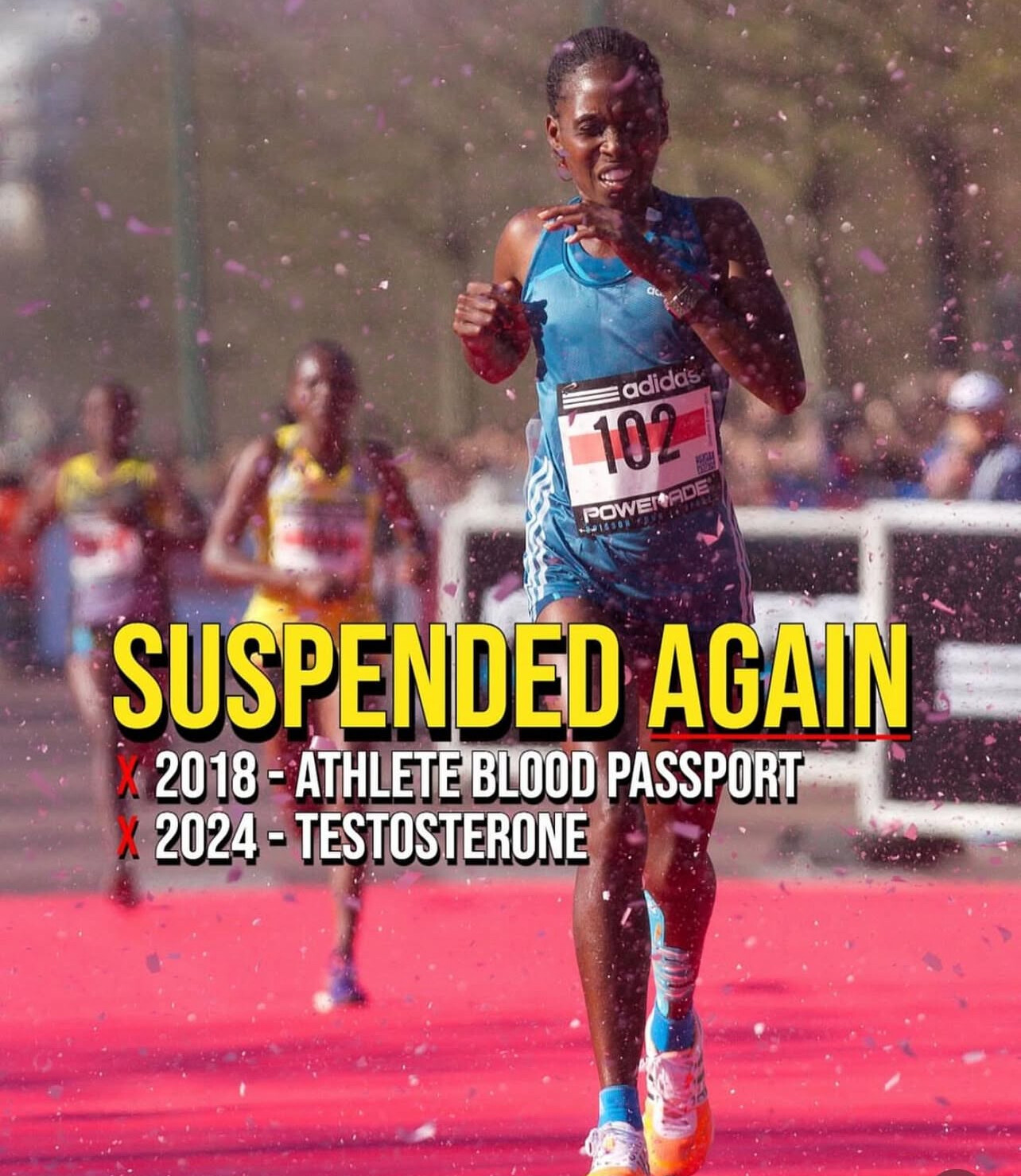
The extensive list of prohibited substances maintained by WADA includes compounds with minimal or no performance-enhancing effects. By focusing on substances with proven performance benefits, we can prevent athletes from being unjustly penalized for trace amounts of inconsequential substances.

The Problem with Retroactive Disqualifications
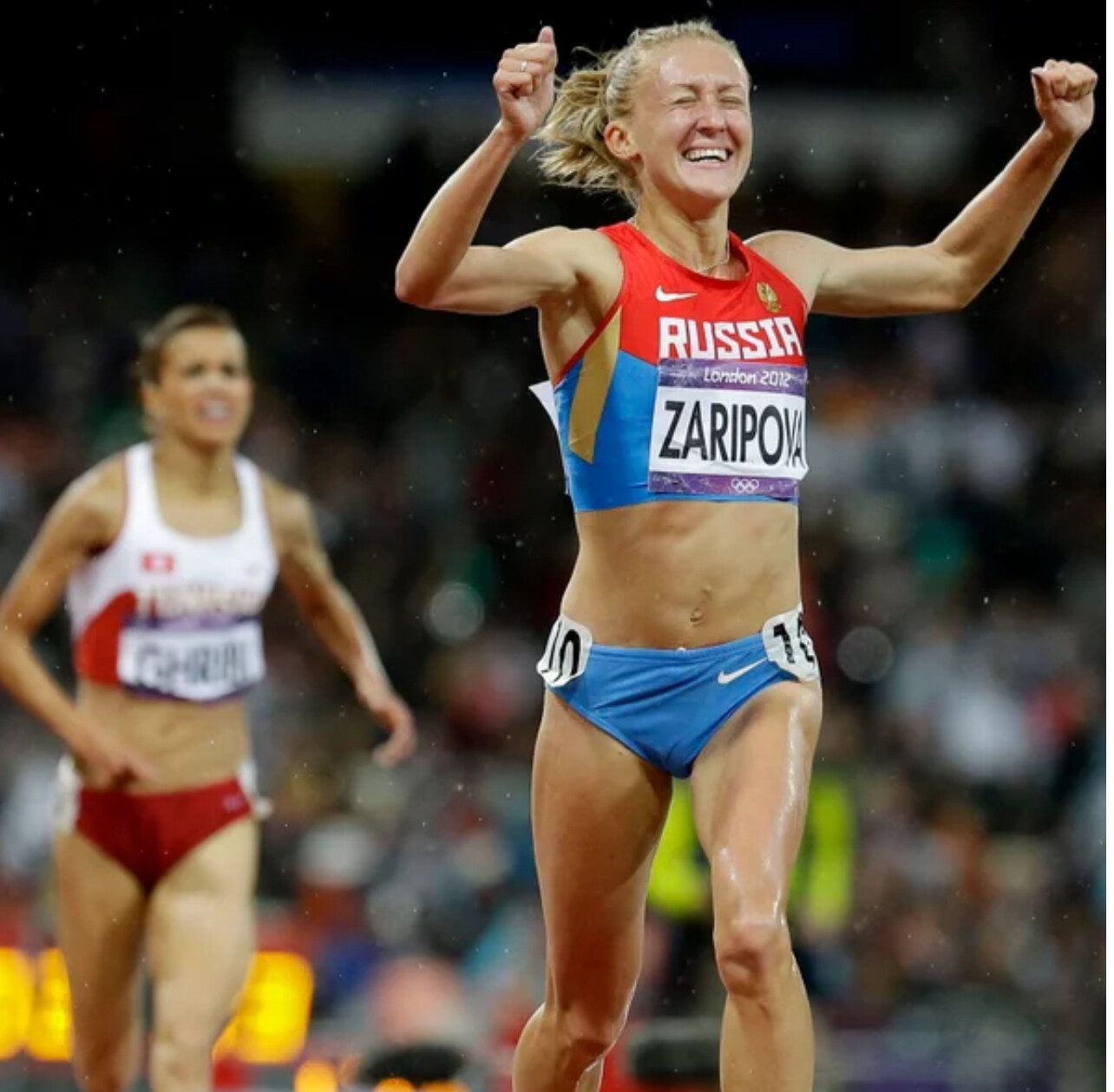
Delayed disqualifications due to retroactive positive tests cause significant disruptions. Athletes are stripped of titles months or even years after competitions, leading to uncertainty and diminished trust in the sport. Investing in faster, more sensitive testing methods is crucial to detect violations promptly, ensuring that competition results are reliable and fair.
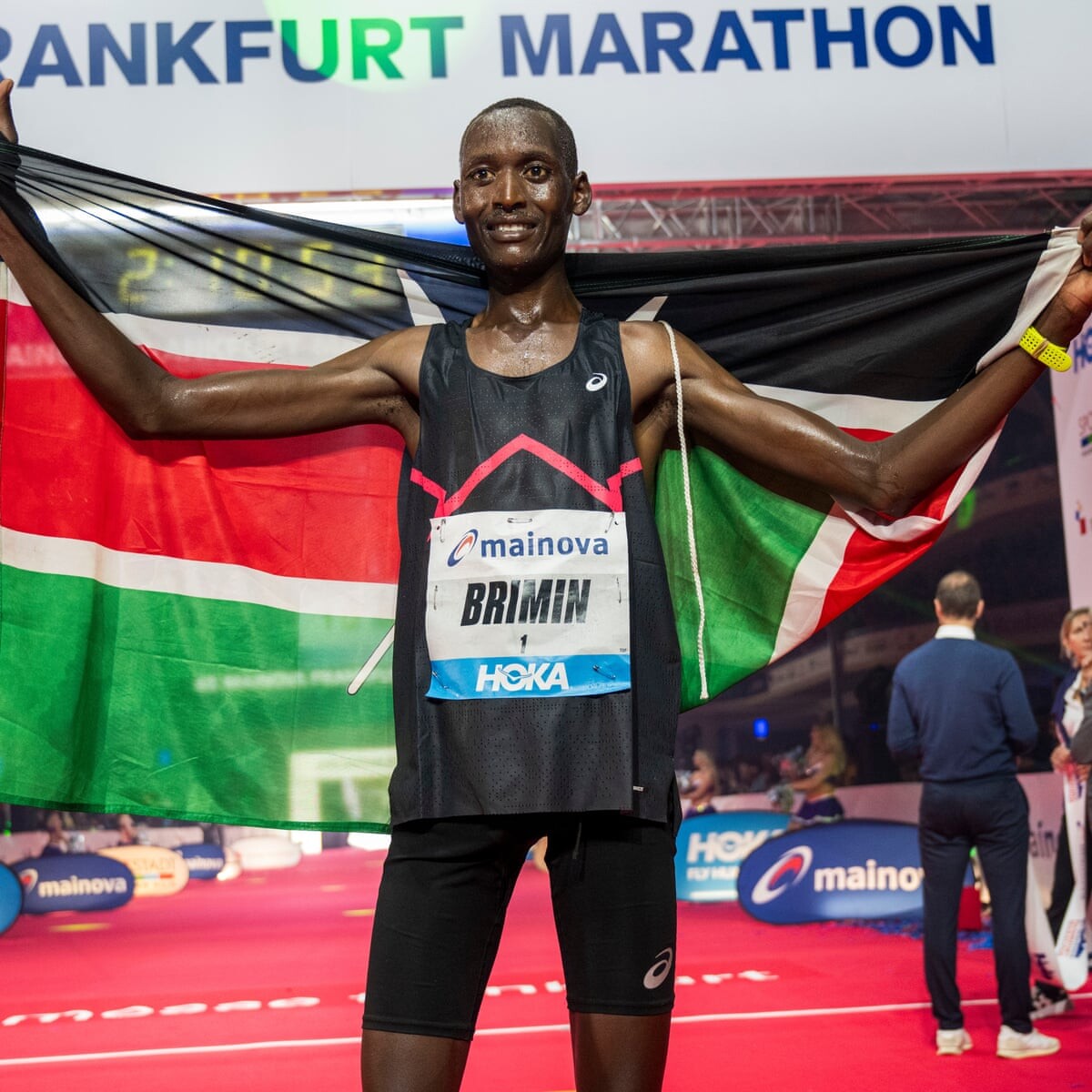
Rethinking the "Whereabouts" Requirement
WADA's "whereabouts" rule mandates that athletes provide their location for one hour each day to facilitate out-of-competition testing. This constant monitoring infringes on athletes' privacy rights and imposes an unreasonable burden. Reevaluating this policy could help balance effective anti-doping measures with respect for personal freedoms.
Understanding Blood Doping and Its Implications
Blood doping, which involves increasing red blood cells to enhance performance, poses significant health risks, including blood clots, stroke, and heart attack. While it's linked to deaths in sports like cycling, there is no documented case of a runner dying directly from blood doping.
Interestingly, many doping violations involve substances like erythropoietin (EPO), which, despite health risks, haven't been directly linked to fatalities among runners. In contrast, alcohol—a legal substance—is responsible for approximately 3 million deaths worldwide annually. This disparity raises questions about the consistency of current substance regulations in sports.
The Business of Anti-Doping
Established in 1999 with an initial operating income of USD 15.5 million, WADA's budget has grown significantly, reaching USD 46 million in 2022. This increase reflects the expanding scope of WADA's activities, including research, education, and compliance monitoring.
Funding is primarily sourced from public authorities and the sports movement, with the International Olympic Committee (IOC) being a major contributor. Notably, in 2024, the United States withheld over USD 3.6 million—about 6% of WADA's annual budget—due to disputes over the agency's handling of doping cases.
EPO's Prevalence in Doping Cases
Erythropoietin (EPO) has a history of abuse in endurance sports due to its performance-enhancing capabilities. For example, Kenyan marathon runner Brimin Kipkorir was provisionally suspended in February 2025 after testing positive for EPO and Furosemide. This suspension adds to a series of high-profile doping cases affecting marathon running, especially among Kenyan athletes.
Adapting Governance and Policies to Maintain Trust
High-profile doping scandals have exposed flaws in the governance of athletics. The case of coach Alberto Salazar illustrates the challenges in enforcing anti-doping regulations. Salazar, who led the Nike Oregon Project, was initially banned for four years in 2019 for multiple anti-doping rule violations, including trafficking testosterone and tampering with doping control processes.
In 2021, he received a lifetime ban for sexual and emotional misconduct. His athlete, Galen Rupp, never tested positive for banned substances, yet his reputation suffered due to his association with Salazar. This situation underscores the importance of independent and transparent governance in maintaining the sport's integrity.
The banned drug list
The World Anti-Doping Agency (WADA) maintains a comprehensive list of substances and methods prohibited in sports to ensure fair competition and athlete health. This list is updated annually and includes categories such as:
· Anabolic Agents: These substances, including anabolic-androgenic steroids, promote muscle growth and enhance performance.
· Peptide Hormones, Growth Factors, and Related Substances: Compounds like erythropoietin (EPO) and human growth hormone (hGH) that can increase red blood cell production or muscle mass.
· Beta-2 Agonists: Typically used for asthma, these can also have performance-enhancing effects when misused.
· Hormone and Metabolic Modulators: Substances that alter hormone functions, such as aromatase inhibitors and selective estrogen receptor modulators.
· Diuretics and Masking Agents: Used to conceal the presence of other prohibited substances or to rapidly lose weight.
· Stimulants: Compounds that increase alertness and reduce fatigue, including certain amphetamines.
· Narcotics: Pain-relieving substances that can impair performance and pose health risks.
· Cannabinoids: Including substances like tetrahydrocannabinol (THC), which can affect coordination and concentration.
· Glucocorticoids: Anti-inflammatory agents that, when misused, can have significant side effects.
Additionally, WADA prohibits certain methods, such as blood doping and gene doping, which can artificially enhance performance. It's important to note that while substances like alcohol are legal and widely consumed, they are not banned in most sports despite their potential health risks.
In contrast, substances like EPO, which have not been directly linked to fatalities among runners, are prohibited due to their performance-enhancing effects and potential health risks. This raises questions about the consistency and focus of current substance regulations in sports..
Regarding the percentage of doping violations involving EPO, specific statistics are not readily available. However, EPO has been a focal point in numerous high-profile doping cases, particularly in endurance sports. For detailed and up-to-date information, consulting WADA's official reports and statistics is recommended
Blood Doping Across Sports
Blood doping is prohibited across various sports, particularly those requiring high endurance. The International Olympic Committee (IOC) banned blood doping in 1985, and since then, numerous sports organizations have implemented similar prohibitions. Cycling has been notably affected, with many major champions associated with or suspended for blood doping.
In conclusion, while the fight against doping is essential to maintain fairness in athletics, the current methods employed by WADA may be causing more harm than good. It's imperative to develop more nuanced, fair, and effective anti-doping policies that protect both the integrity of the sport and the rights of its athletes.
by Bob Anderson
Login to leave a comment
World Athletics president pushing cross country for 2030 Olympics
It’s no secret that World Athletics president Seb Coe has ambitions to take over the International Olympic Committee (IOC) president position in the organization’s 2025 election. He looks to succeed Thomas Bach, who has served as president of the IOC for 12 years. Coe’s presidential manifesto pledges a clean and fair Olympics, and potentially the addition of some traditional summer and fall sports to the Winter program—including cross country.
During Coe’s year-end meeting with the media, he alluded to the need for the Winter Olympics to become “more accessible and open to new ideas.” The highest participation for the Winter Games was 93 countries at the 2018 Games in PyeongChang, South Korea, whereas the Paris 2024 Summer Games saw athletes from over 200 nations.
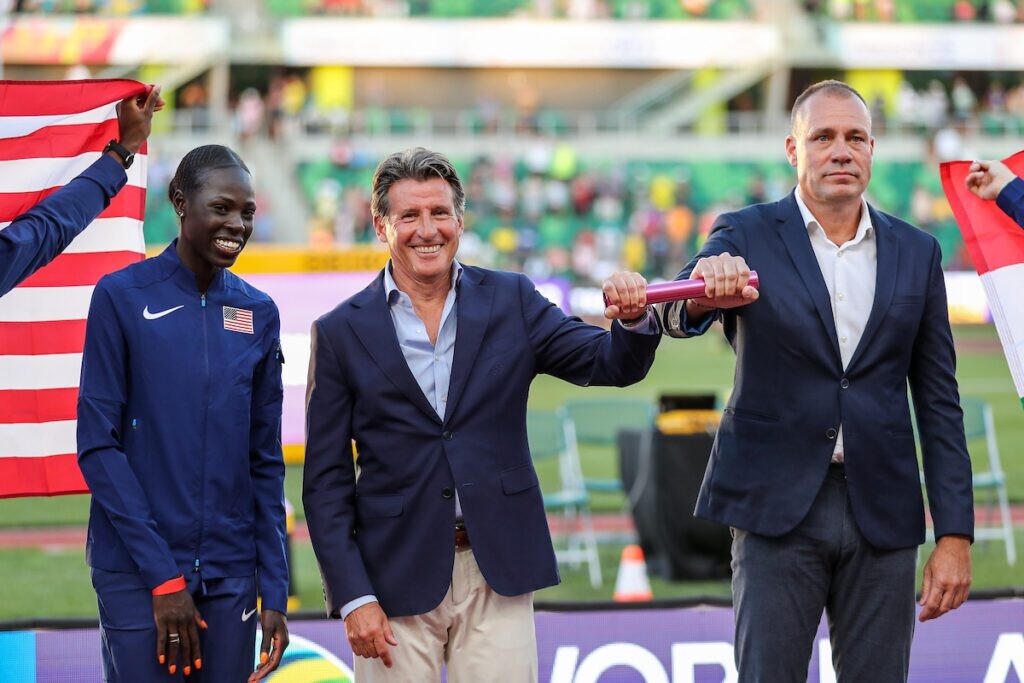
To expand the global audience, Coe believes the addition of fall or indoor sports into the Winter program could attract athletes and viewers from regions of the world that might not have snow. Cross country (running) and cyclo-cross (cycling) are at the forefront of this push, offering the opportunity to expand the Winter Games without straying too far from its profile or mission.
Cross country has faltered on the World Athletics calendar since the pandemic. The 2023 championships held in Bathurst, Australia, were too late in the season (February, two months after the cross-country season), which made it a lengthy commitment of time and travel for any athlete. The 2024 meet, originally scheduled for Croatia on Feb. 10-11, was reassigned to Serbia on March 30 when it emerged that Croatia was not ready to host. Although Serbia did all it could on six months’ notice, the event was heavily criticized for its course, spectator-friendly experience, and timing, as it was held (again) well after the cross-country season.

Coe has made it clear, on multiple occasions, that he believes there is a place for cross country in the professional running calendar, but there needs to be a way to make it more attractive to fans. “I’m a great adherent of cross country, and I think it’s a really important part of the endurance paradigm,” said Coe. “But it needs help… it needs space.”
The program for the 2026 Winter Olympics in Milan-Cortina D’Ampezzo, Italy is already set, but Coe is targeting the inclusion of the two sports by the 2030 and 2034 Olympics, which were awarded to the French Alps and Salt Lake City earlier this year.
If Coe is elected as the next president of the IOC in March 2025, he will vacate his current position as the head of World Athletics. The 68-year-old has served as World Athletics president since 2015 and was re-elected to a third (and final) four-year term in 2023. Coe was a two-time Olympic gold medalist during his own career and delivered the immensely popular London Olympics as chairman of the local organizing committee.
by Marley Dickinson
Login to leave a comment
'Something has to change'-American sprint legend on protecting women athletes in Kenya
An American sprint legend has raised concerns over women athletes' safety in Kenya, advocating for cultural change and systemic reform.
American sprint icon Allyson Felix has expressed deep concern over the safety of women athletes, describing violence against female competitors as a "real problem" that demands urgent attention.
Felix, the most decorated track and field athlete in history with 20 World Championship medals and 11 Olympic medals, spoke passionately about the challenges facing women in sports, particularly in light of recent tragedies in Kenya.
“There has to be a change in the culture. Something is not right, and it does make me worry,” Felix said during an interview with BBC 100 Women.
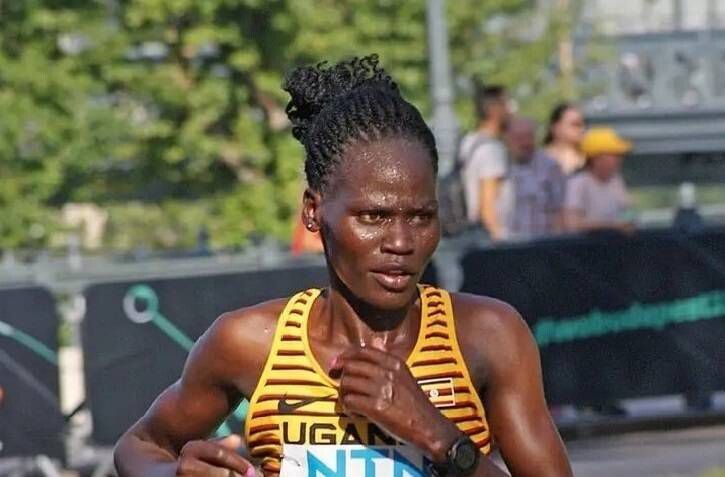
Her comments come few months of the devastating death of fellow Olympic athlete Rebecca Cheptegei, who was set on fire by her boyfriend earlier this year.
Cheptegei’s death marked the third killing of a female athlete in Kenya in the past three years.
Felix, recently elected to the International Olympic Committee (IOC) Athletes' Commission, pledged to prioritize addressing violence against women athletes.
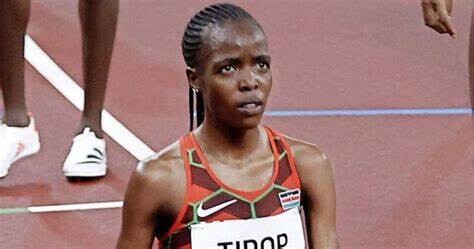
“The consequences have to be severe, but I think there has to be more than that,” she emphasized.
“I think we have to rally around the sports community and come together.”
The alarming trend of violence against female athletes in Kenya highlights the urgent need for change, Felix noted, adding her voice to growing calls for stricter penalties and cultural shifts to ensure women’s safety.
Her advocacy for women’s rights, both on and off the track, has become a defining feature of her legacy since retiring from competitive athletics in 2022.
Felix’s commitment to advocating for women goes beyond addressing violence.
She has been a trailblazer in fighting for maternal health rights and equal treatment for female athletes.
In 2018, after surviving a harrowing experience with severe pre-eclampsia during her pregnancy, Felix exposed systemic inequities when her former sponsor, Nike, threatened to slash her pay due to motherhood.
Her powerful op-ed in The New York Times led to groundbreaking changes in maternity protections for sponsored athletes, with Nike and other athletic apparel companies introducing policies to safeguard pay and bonuses for 18 months around pregnancy.
“I was terrified what the consequences would be,” Felix admitted.
“It just wasn’t in my nature. And so it was really difficult to be able to just be vulnerable.”
In Kenya, where cultural barriers and economic challenges compound the issues facing women athletes, Felix’s story resonates deeply.
Many athletes have struggled to find support systems to navigate the demands of sports and family life. Felix’s advocacy offers a blueprint for addressing these issues.
Through her leadership role with the IOC Athletes' Commission, Felix aims to amplify the voices of athletes and promote systemic reforms globally.
She has also launched Always Alpha, a management firm dedicated to women’s sports, to ensure female athletes receive tailored representation.
Felix’s advocacy extends to maternal health, particularly for Black women in the United States, where they are three times more likely to die from pregnancy-related causes than white women, according to the Centers for Disease Control and Prevention (CDC).
Her efforts recently secured a $20 million grant from Melinda Gates to improve maternal health outcomes, and she is exploring ways to extend her work internationally, including in Africa.
“I want [my children] to always know that you should have an impact, that you should help others, that you should stand up for what you believe in,” she concluded.
by Festus Chuma
Login to leave a comment
'My gold medal is peeling'- Tara Davis-Woodhall stuns fans as Paris Olympics medal quality concerns grow
Olympic and Paralympic medalists raise concerns about the rapid deterioration of their recently awarded medals, sparking widespread athlete frustration.
Olympic gold medalist Tara Davis-Woodhall has sparked a storm of controversy after revealing that her prized gold medal is peeling, joining the growing concerns of fellow athletes, including Paralympic bronze medalist Allison E. Lang.
What should be an enduring symbol of their achievements is, instead, tarnishing—both literally and symbolically—just weeks after the medals were awarded.
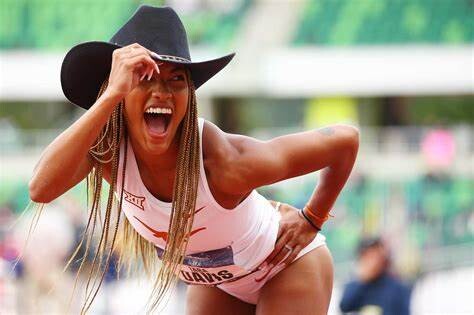
Davis-Woodhall’s revelation came after Lang, who secured bronze in the recent Paris Paralympic Games, expressed her frustration on Threads.
Lang shared a photo of her rapidly deteriorating medal, showing visible signs of oxidation and peeling.
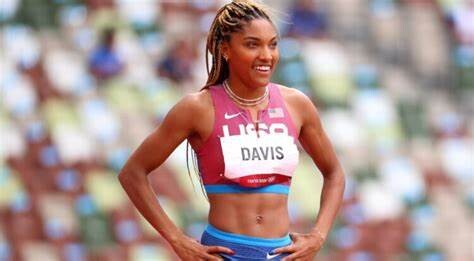
“I’m kind of disappointed. My Bronze Medal from Paris is already oxidizing and looks like it’s peeling/rusting like what’s going on @paralympics? I’ve only had it for less than a month!!” Lang posted.
Initially, some social media users dismissed Lang’s concerns, with one commenter stating, “Gold does not tarnish by the way,” but Davis-Woodhall quickly came to her defense with a stunning admission: “Actually… it does ? my gold medal is peeling.”
The long jump athlete’s candid response added fuel to the fire, shifting the spotlight from a single case to a potential widespread issue.
The idea that gold and bronze medals—symbols of lifelong dedication and effort—could deteriorate so quickly has shocked athletes and fans alike.
In the wake of the revelations, several athletes have started to inspect their own medals. Some, like Lang and Davis-Woodhall, are reporting similar problems, while others have claimed their medals remain in pristine condition.
This inconsistency has only deepened the mystery, raising questions about the materials and manufacturing processes behind these prestigious awards.
Tessa Axsom, the director of CNC at Fictive, a San Francisco-based company that specializes in custom mechanical parts, has weighed in on the issue.
According to Axsom, the problem may lie in the materials used in the medals, particularly copper oxidation.
“This year’s bronze medal is actually 97% copper, 2.5% zinc, and a half a percent tin,” Axsom explained as reported by The Sport Rush.
“Copper oxidation is natural, and it reaches stability when it forms oxides and salts. So, when you have sweaty athletes wearing these medals, getting salt on them, you’re going to get oxidation. The metal should have been protectively coated.”
Despite some media reports attributing the issue to the use of recycled metals—a sustainable practice championed by the Olympic and Paralympic committees—Axsom was quick to refute those claims.
She emphasized that using recycled metals is not the cause of the peeling and rusting. Rather, it is the lack of a proper protective coating that has left these medals vulnerable to the elements and wear.
As of now, neither the International Paralympic Committee (IPC) nor the International Olympic Committee (IOC) has issued an official statement addressing the situation.
However, whispers of cost-cutting measures have begun circulating, with speculation that the medals may have been produced under tighter budget constraints, potentially leading to the quality issues now being reported.
For athletes like Lang and Davis-Woodhall, the peeling medals are more than just a cosmetic problem. They represent the culmination of years of hard work, dedication, and perseverance.
Seeing their hard-earned medals deteriorate so quickly has left them and their fans questioning the lasting value of these symbols.
by Festus Chuma
Login to leave a comment
Paris bans plastic bottles from races
On Monday, Paris City Hall announced a ban on single-use plastic in all its races, including the Paris 20 km in mid-October and the Paris Marathon.
Didn't get to crisscross the Paris asphalt during the Paris 2024 Olympics' Marathon pour Tous ("Marathon for Everyone")? You'll have a chance to make up for it on October 13, with one of the many races taking place in the capital, the 46th annual Paris 20-kilometer race.
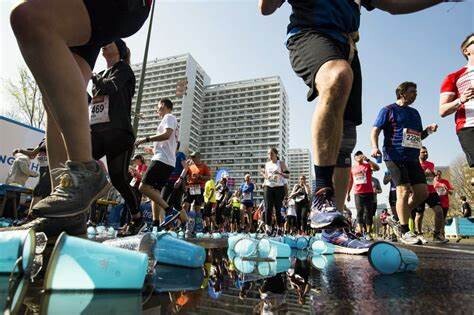
But don't forget your water bottle. At the press conference presenting the event on Monday, September 23, Pierre Rabadan, deputy mayor of Paris responsible for sports, confirmed that the ban on single-use plastic bottles would come into force.
"In Paris, you won't be able to organize a race if you use plastic bottles, it's as simple as that," assured the 44-year-old former rugby player, in remarks reported by sports paper L'Equipe. "It was one of the objectives of the Olympic legacy. We have to reduce the use of single-use plastic in our daily lives, and sport has to get on board. It's an evolution, and even a revolution for the organizers."

No fewer than 13 races will be held in Paris between now and December 31, for a total of some 50 events a year – including the Paris Marathon and Half Marathon, which attract around 50,000 runners. In these races, particularly the longer ones, over a million bottles are used each year to rehydrate runners – "who generally only take two or three sips before throwing it away.
I know because it's happened to me too when I used to take part in races," insisted Rabadan. So that's the end of the individual bottles cans, or cartons, which are to be replaced instead by reusable water bottles and reusable cups. The City of Paris has invested in a stock of 100,000 of these cups, which it can lend to race organizers.
Target 'zero single-use plastic' for the Olympics
During the Olympic marathon, however, competitors were granted a dispensation to continue using bottles – to avoid the risk of contamination, or even doping, according to the organizing committee – and elite athletes could continue to benefit from such policies. "It's all about the masses and all the other participants who aren't gambling their season on a race," said Paris's deputy mayor for sports.
Drawing inspiration from initiatives in Munich, Amsterdam and San Francisco, but above all from the refill London campaign (2018) across the Channel and the Brussels 20 km, the city has been working since 2019 to achieve the goal of "zero single-use plastic," for the hosting of the Olympic and Paralympic Games, which have claimed to be the greenest in history. This is a legacy that must live on.
Nevertheless, through the International Olympic Committee's (IOC) game of "world" sponsors, the American giant Coca-Cola – the world's leading "plastic polluter" according to the NGO Break Free from Plastic's 2023 ranking – was entrusted with the exclusive distribution of drinks at the 2024 Olympics. Numerous associations, including France Nature Environnement, Zero Waste France and No Plastic in My Sea, awarded the IOC partner the greenwashing medal.
The soda producer promoted its fountains, returnable cups and glass bottles. But over 40% of the total drinks distributed were poured into an eco-cup from... a plastic bottle. The kind of bottle that should no longer be seen at Parisian races.
by Sports department
Login to leave a comment
Les 20K de Paris
The 20 Kilometers de Paris (Paris 20 km) is an annual road running competition over 20 kilometers which takes place on the streets of Paris, France in October. First held in 1979, the race attracts top level international competitors and holds IAAF Bronze Label Road Race status. The competition was the idea of Michel Jazy, a French runner who was...
more...66-year-old marathoner qualifies for Boston with Stage 4 cancer
The story of 66-year-old Canadian marathoner Dana Fox is one of extraordinary perseverance. Diagnosed with Stage 4 cholangiocarcinoma less than a year ago, Fox completed Ontario’s Georgina Marathon on Sept. 8, in 3:56:50, likely securing a spot for the 2025 Boston Marathon.
In October 2023, Fox and his coach, Joe Chappell, met to discuss Fox’s future marathon goals, but just a week later, he was diagnosed with cancer. Despite a grim prognosis and being given less than a year to live, Fox remained determined. “Dana said almost right away he wanted to treat this like a running injury,” Chappell told Canadian Running. “At one point, he was in so much pain that bending over to tie his shoes was almost impossible.”
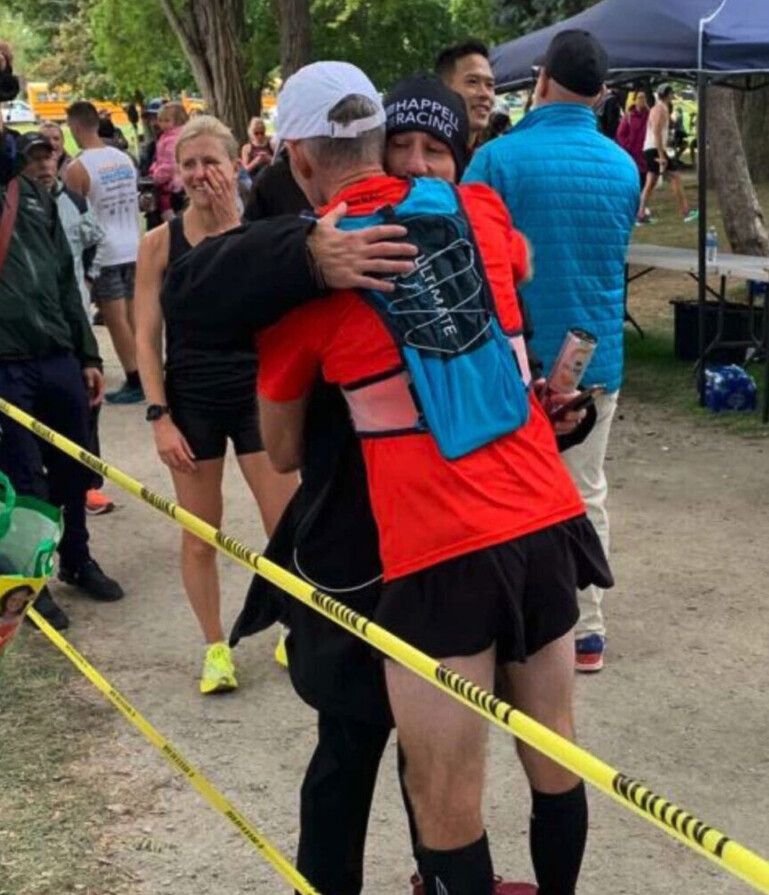
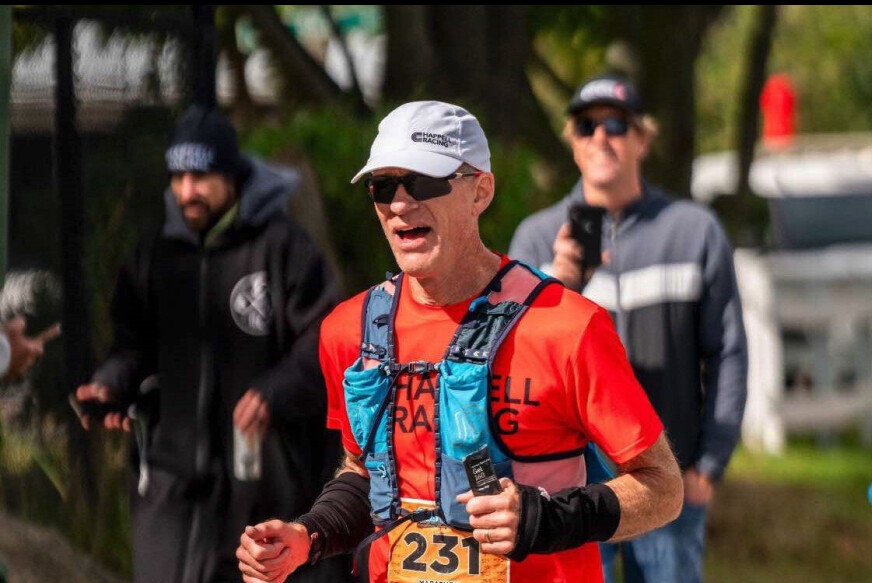
Chappell said they kept in touch during Fox’s chemotherapy. Within a few months, he was able to start slowly walking and indoor riding. In May, Fox reached out to Chappell with ambitions to return to running, as his energy was returning. His goal: the 2024 Georgina Marathon, a last-chance qualifier for the 2025 Boston Marathon.
Against his doctors’ recommendations, Fox began training for the marathon with less than eight weeks until race day—half the typical time most marathoners devote to training. His family and friends from Waterloo and beyond supported him during the race. The men’s 65-69 qualifying time was 4:05:00, but Chappell said they aimed to beat last year’s cut-off of five minutes and 29 seconds.
Fox’s finishing time of 3:56:50 put him eight minutes and 10 seconds under the mark. Canadian marathoner Rachel Hannah paced him for the second half of the race, with family and friends cheering and offering support throughout. He carried a pair of red Adidas spikes gifted by his father in 1971, a symbol of resilience during his journey.
Fox is confident he will be among the few who defeat the cancer. He credits the experience of finishing the Georgina Marathon with his running club as a crucial psychological boost, fuelling his journey to recovery.
On Sept. 15, Fox spoke at the Terry Fox Run in Saugeen Shores, Ont. (He is not related to Canadian athlete and humanitarian Terry Fox.) “We made it for all those people who have cancer and were told they’re not going to make it; this run’s for them. Don’t ever quit,” Fox told Georgina Post. “The hotel’s already booked [for Boston]. I’m in, baby. We’re going. I’m going to live. I’m getting back on the bus. I’m not leaving.”
by Running Magazine
Login to leave a comment
66-year-old marathoner qualifies for Boston with Stage 4 cancer
A year after being told he had less than a year to live, Dana Fox of Waterloo, Ont., ran a Boston Marathon qualifying time at the 2024 Georgina Marathon.
The story of 66-year-old Canadian marathoner Dana Fox is one of extraordinary perseverance. Diagnosed with Stage 4 cholangiocarcinoma less than a year ago, Fox completed Ontario’s Georgina Marathon on Sept. 8, in 3:56:50, likely securing a spot for the 2025 Boston Marathon.
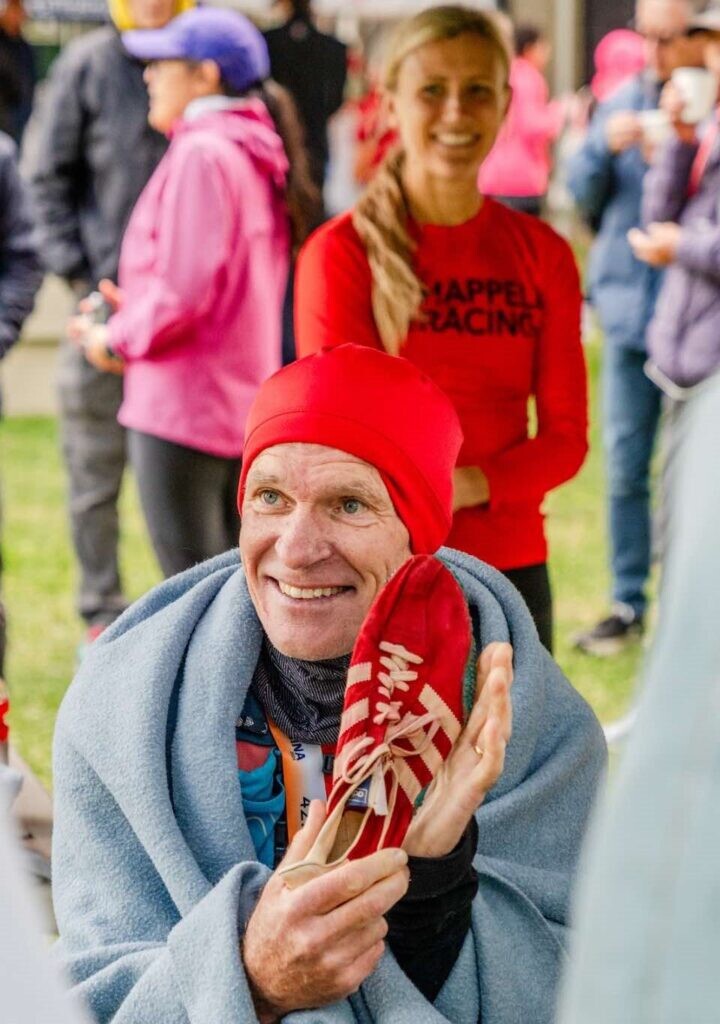
In October 2023, Fox and his coach, Joe Chappell, met to discuss Fox’s future marathon goals, but just a week later, he was diagnosed with cancer. Despite a grim prognosis and being given less than a year to live, Fox remained determined. “Dana said almost right away he wanted to treat this like a running injury,” Chappell told Canadian Running. “At one point, he was in so much pain that bending over to tie his shoes was almost impossible.”
Chappell said they kept in touch during Fox’s chemotherapy. Within a few months, he was able to start slowly walking and indoor riding. In May, Fox reached out to Chappell with ambitions to return to running, as his energy was returning. His goal: the 2024 Georgina Marathon, a last-chance qualifier for the 2025 Boston Marathon.
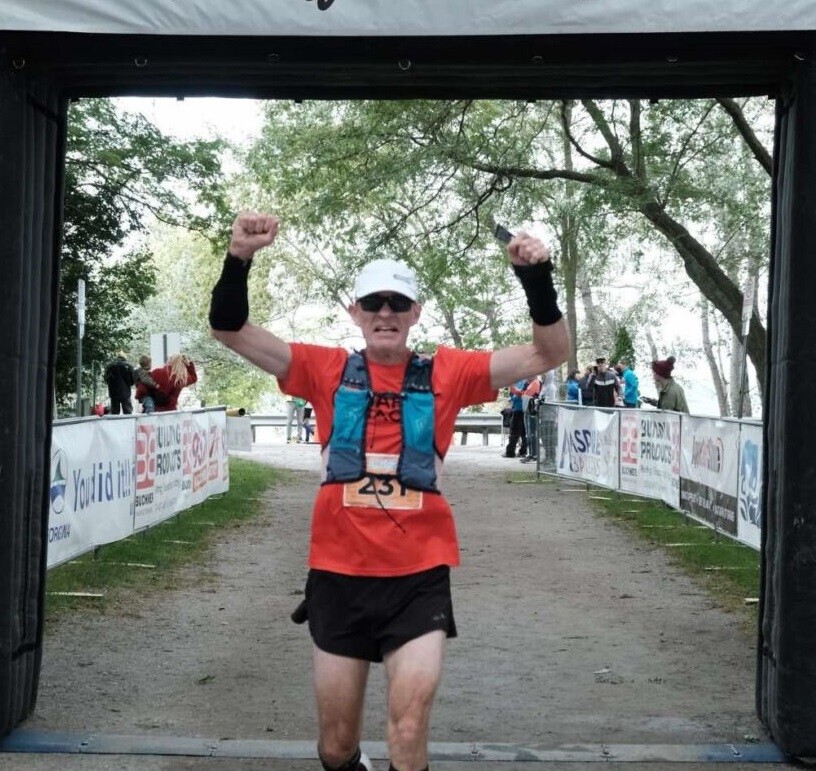
Against his doctors’ recommendations, Fox began training for the marathon with less than eight weeks until race day—half the typical time most marathoners devote to training. His family and friends from Waterloo and beyond supported him during the race. The men’s 65-69 qualifying time was 4:05:00, but Chappell said they aimed to beat last year’s cut-off of five minutes and 29 seconds.
Fox’s finishing time of 3:56:50 put him eight minutes and 10 seconds under the mark. Canadian marathoner Rachel Hannah paced him for the second half of the race, with family and friends cheering and offering support throughout. He carried a pair of red Adidas spikes gifted by his father in 1971, a symbol of resilience during his journey.
Fox is confident he will be among the few who defeat the cancer. He credits the experience of finishing the Georgina Marathon with his running club as a crucial psychological boost, fuelling his journey to recovery.
On Sept. 15, Fox spoke at the Terry Fox Run in Saugeen Shores, Ont. (He is not related to Canadian athlete and humanitarian Terry Fox.) “We made it for all those people who have cancer and were told they’re not going to make it; this run’s for them. Don’t ever quit,” Fox told Georgina Post. “The hotel’s already booked [for Boston]. I’m in, baby. We’re going. I’m going to live. I’m getting back on the bus. I’m not leaving.”
by Marley Dickinson
Login to leave a comment
Boston Marathon
Among the nation’s oldest athletic clubs, the B.A.A. was established in 1887, and, in 1896, more than half of the U.S. Olympic Team at the first modern games was composed of B.A.A. club members. The Olympic Games provided the inspiration for the first Boston Marathon, which culminated the B.A.A. Games on April 19, 1897. John J. McDermott emerged from a...
more...How to distinguish discomfort from pain
In running, some kinds of hurt are good–but when do you draw the line?
Running is a tough sport. It is hugely demanding on your lungs, legs and joints; running-related injuries are not uncommon. Being able to listen to your body to distinguish discomfort from pain is a skill learned only through experience–even professional runners still make the mistake of ignoring signs their body is telling them to stop. In a sport that constantly keeps you hovering on the edge between growth and injury, being cautious will play in your favor.
Discomfort
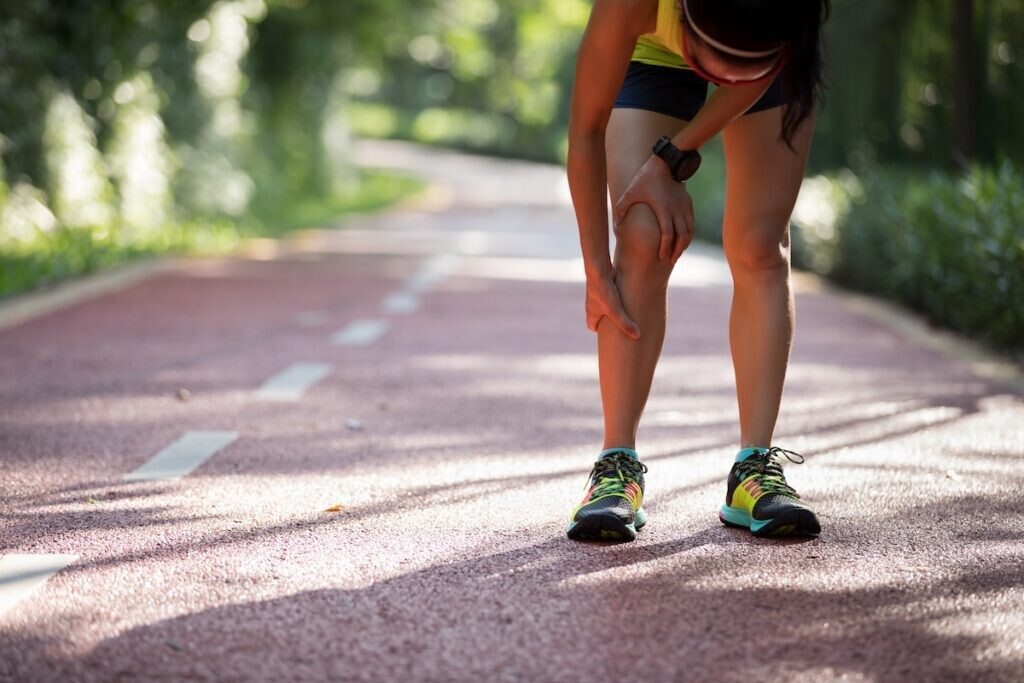
Discomfort is usually OK. By discomfort, we mean a relatively mild, generalized burning or heaviness in your muscles, which signifies you are pushing yourself through fatigue. It is supposed to be difficult–that’s the way to increase your fitness threshold and get better. Sometimes, your body shuts down or just has a bad day, making something feel harder than it usually does. The days that your body feels heavy are the days you try your best and do what you can. One lousy workout won’t make or break your fitness–so don’t overdo it by trying to make up for it elsewhere.
Fighting through discomfort is a testament to your motivation and drive to improve as an athlete and meet your goals. With experience, you will learn what level of hurt is sustainable for you, so you aren’t left incapacitated and unable to work out in the ensuing days.
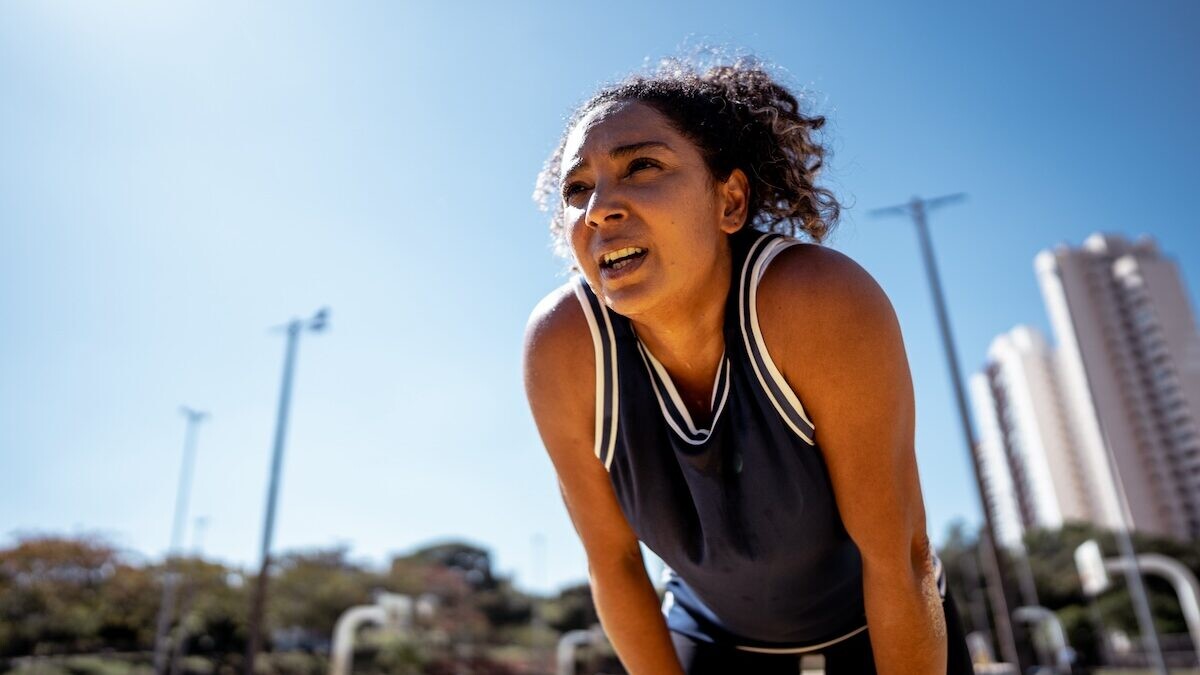
Pain
Pain is not OK. This could be sharp and/or random sensations that make you wince, or intense tightness or discomfort in a localized muscle or tendon that is causing you to alter your gait. If the pain keeps getting worse as your workout or run continues, it’s time to call it a day. (Joint pain is also a big red flag.)
Backing off is better than doing too much–consistency is key. Pushing through pain for a few mediocre workouts just to end up making things worse is not worth it; the recovery time and effects on fitness resulting from a serious injury will be much more significant than taking a few days off or cross-training when new pain arises.
Being able to back up and play it smart is also a testament to your drive as a runner; sometimes, it isn’t easy to call it a day after you did all that work to show up for the workout in the first place. If you have confidence in the work you’ve put in so far, you’ll realize that missing one race or a few workouts to look after your body won’t be detrimental to your fitness in the long term.
by Cameron Ormond
Login to leave a comment
The orphaned refugee planning to make Olympic history
Two months ago, Dominic Lobalu thought he would not be able to compete at Paris 2024, but now he has the chance to make history.
The 25-year-old was ruled out of the Tokyo 2020 Games after claiming asylum in Switzerland, making him ineligible to compete for refugee teams.
After being given clearance by World Athletics to represent his adopted nation in May - despite not holding Swiss citizenship - Lobalu won two medals at the the European Championships the following month.
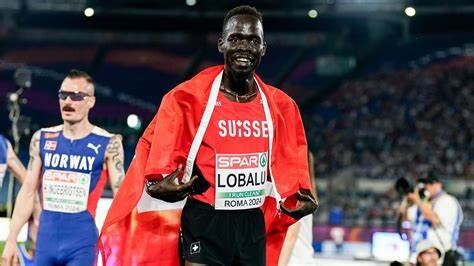
His gold in the 10,000m and bronze in the 5,000m persuaded the International Olympic Committee (IOC) to invite Lobalu to join its Refugee Olympic Team, and the South Sudanese-born runner will compete over the shorter distance in the French capital. “This is what I was dreaming for,” Lobalu told BBC Sport Africa.
“When I started my training, the goal was to go to the Olympics one day. And now I have it I'm so happy.”
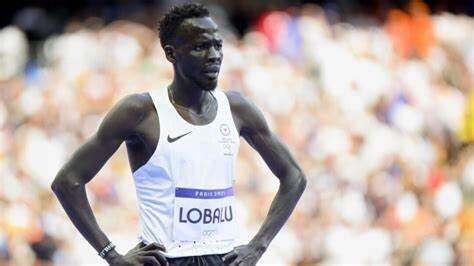
Boxer Cindy Ngamba has already assured the Refugee Olympic Team of its first ever medal, but Lobalu could upgrade her guaranteed bronze.
The first round of the 5,000m begins on Wednesday, but it has been a long journey for Lobalu to reach the start line. It is one that began in Sudan and has taken detours via Kenya and Switzerland. In 1998, Lobalu was born into a country in the middle of a long-running civil war.
He grew up in Chukudum, a small village in south-east Sudan which would become part of South Sudan when it gained independence in 2011.
The conflict, which ended in 2005, is estimated to have killed two million people. But two years after the war Lobalu's home village was raided by soldiers. The family fled but he was separated from his parents.
He wound up in an orphanage and then, at the age of nine, made it across the border to Kenya with the help of an Italian NGO.
The Kakuma Refugee Camp, a sprawling settlement in north-west Kenya run by the UNHCR, became his new home.
Now living in Switzerland, Lobalu is reluctant to talk in depth about his past before a competition, preferring to focus on the future.
However, he admits his experiences at the camp motivate him on the track.
by BBC News
Login to leave a comment
Paris 2024 Olympic Games
For this historic event, the City of Light is thinking big! Visitors will be able to watch events at top sporting venues in Paris and the Paris region, as well as at emblematic monuments in the capital visited by several millions of tourists each year. The promise of exceptional moments to experience in an exceptional setting! A great way to...
more...From Ancient Olympia to Paris 2024
Modern Olympic history is full of victories and defeats but along the way since the revival of the Olympics in 1896, we encountered geopolitics, a shift in women’s rights and the state of global affairs.
From Athens to Rio, in the last 125 years, the games have crossed five continents, added and removed events, resisted boycotts and were only canceled three times due to two World Wars.
In 1894, Pierre de Coubertin launched his plan to revive the Olympic Games, and in 1896 the first Games of the modern era were held in Athens
Origins of the Olympic Games
The history of the Games goes back around 3,000 years, to the Peloponnese in Ancient Greece. Sports contests organized at Olympia back then took place every four years and acquired the name Olympic Games.
The first written evidence of the official Games dates from 776 BC, when the Greeks began measuring time in Olympiads, or the duration between each edition of the Olympic Games.
The four-year interval between the Ancient Games editions was named an “Olympiad” and was used for dating purposes at the time: time was counted in Olympiads rather than years. They were held between August 6 and September 19 during a religious festival honoring Zeus.
The games were named after their location at Olympia, a sacred site located near the western coast of the Peloponnese peninsula in southern Greece.
The games included Chariot races – one of the oldest of Greek sports dated back to the Mycenean Period (1100 B.C) – consisting of 12 laps around a hippodrome (horse track) and 12 times in the opposite direction, with the length varying depending on where the event was held.
There was also kele (riders competing in horseback), footraces (running), wrestling, pentathlon – a five-event combination of long jump, running and wrestling – boxing, and lastly the pankration, which was a combined contest of boxing, wrestling and kicking.
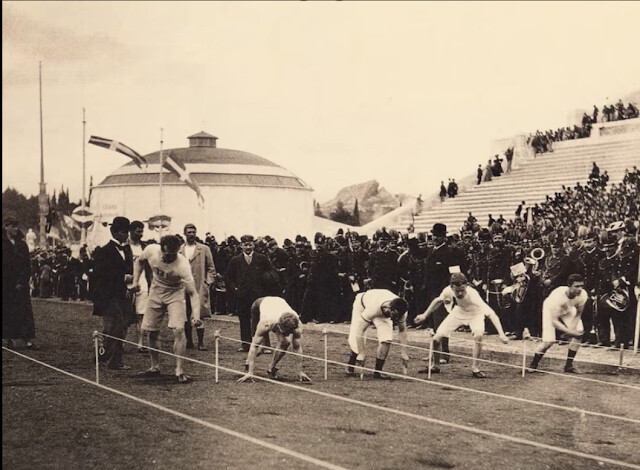
Structure and Traditions of the Ancient Olympics
All free male Greek citizens were entitled to participate in the ancient Olympic Games, regardless of their social status. Orsippos, a general from Megara; Polymnistor, a shepherd; Diagoras, a member of a royal family from Rhodes; Alexander I, son of Amyndas and King of Macedonia; and Democritus, a philosopher, were all participants in the Games.
Married women were not allowed to participate in, or to watch, the ancient Olympic Games. However, unmarried women could attend the competition, and the priestess of Demeter, goddess of fertility, was given a privileged position next to the Stadium altar.
One of the things that is commonly argued about is the question of whether there were amateur athletes in the ancient Olympic games. Ancient Olympic athletes were neither amateur nor professional. The word athlete is a Greek word that means “one who competes for a prize” and is related to two Greek words, athlos meaning contest and athlon meaning prize.
Greek athletes competed for prizes at athletic festivals. Some of the prizes were symbolic, for instance the wreath of olive leaves at Olympia, and others were material prizes worth money, for instance bronze tripods, or amphoras filled with olive oil. There were also cash awards of 500 drachmai (considered to be a fortune) or getting an early pension plan by receiving a free meal every day.
The Significance of Competition
For the ancient Greeks, whose fiercely independent city-states were often at war with one another, athletic contests became a unifying, peacemaking force. During the Olympic games, all hostilities were suspended. City-states sent their best athletes to compete
Decline of the Ancient Olympics
After thousands of years of the Greeks and Romans gathering at the Olympia to celebrate the festival in honor of Zeus, in 393 AD, the Christian emperor Theodosius I forbade the celebration of pagan cults, which included the Games.
Nonetheless, the popularity of sports contests and cultural festivities continued in many Greek-influenced provinces of the Roman empire as late as the 6th century AD.
Following Theodosius’ order, pagan cults began to disappear, and the site of Olympia was abandoned. Earthquakes destroyed the structures and their ruins disappeared gradually under the earth and sand.
Revival of the Olympic Spirit
There were no longer any visible traces of the site. Thanks to the writings of ancient historians, the memory of the Games and their place in the Greek world was not totally forgotten. The Games were known to have existed, but the knowledge of their exact location had been lost.
In 1776, the English traveler Richard Chandler discovered the site of ancient Olympia. The principal research digs were carried out a hundred years later by German archaeologists.
Pierre de Coubertin in re-establishing the Olympics
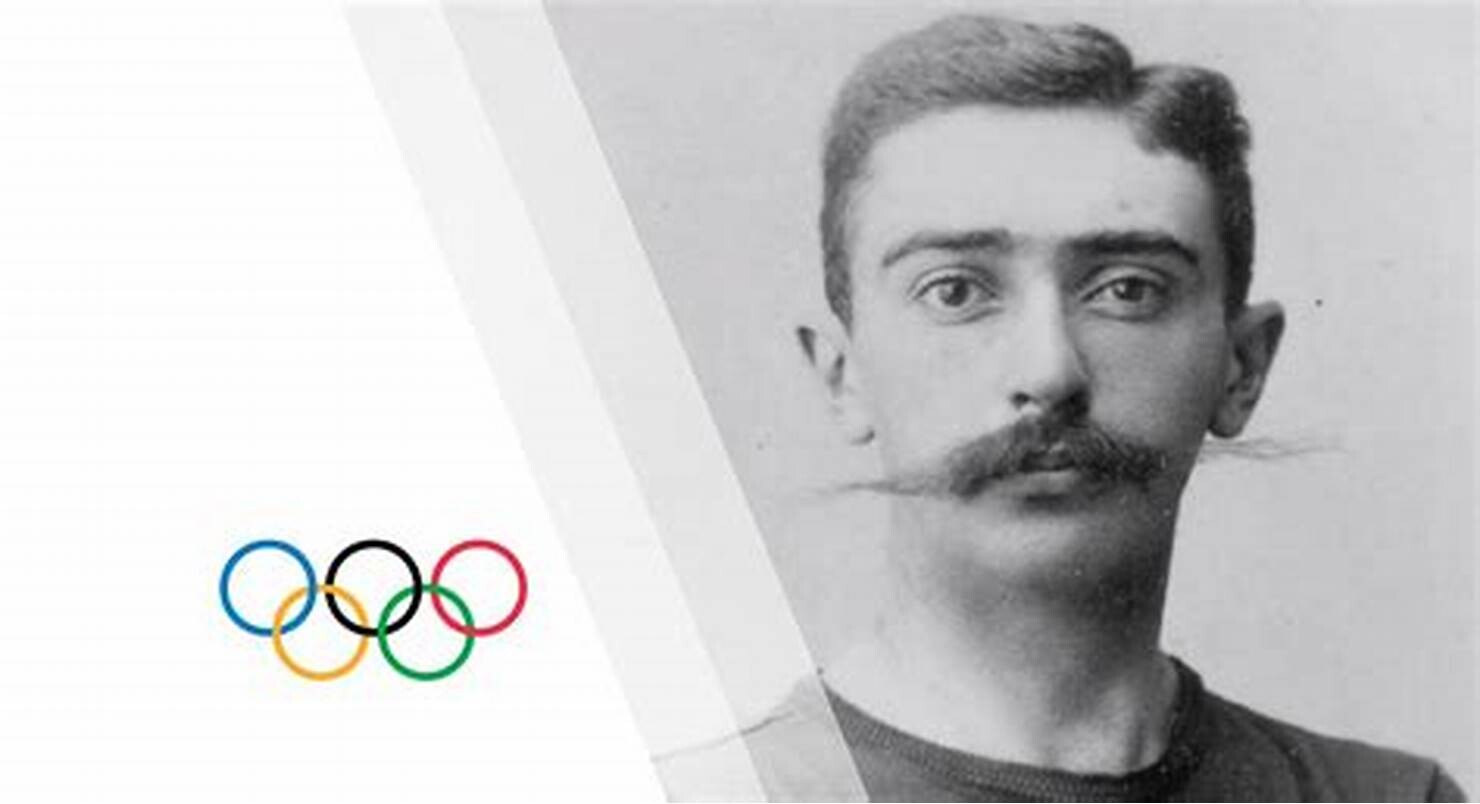
Pierre de Coubertin is widely recognized as the founder of the modern Olympic Games and the International Olympic Committee. Although artefacts suggested that ancient Olympia was prosperous, Coubertin was not put off and in 1894 invited athletes and sports people alike to attend a sports conference where he suggested the revival of the Olympics.
It was then decided on 23 June 1894 that a modern Olympic game should be held every four years and that each game should take place in a different country. It was unanimously agreed that the first modern Olympic games should be held in Olympia Greece.
Pierre de Coubertin was instrumental in establishing many of the Olympic traditions that continue to this day – the five rings, the Olympic flag, the oath and motto. He produced many writings about sport and education – one of his most famous quotes is “The important thing in the Olympic Games is not winning but taking part. Just as in life, the aim is not to conquer but to struggle well.”
The Modern Olympic Games
The International Olympic Committee (IOC) was founded on the initiative of Pierre de Coubertin on 23 June 1894, during the Olympic Congress.
At first Pierre de Coubertin planned to discuss amateur sport during the congress, however, by the time the invitations for the delegates to gather at the Sorbonne University in Paris were being sent, he changed both the programme and the title of the congress.
The event, which was eventually called the “Congress on the Revival of the Olympic Games”, served as an opportunity for de Coubertin to present his proposal to revive the Olympic Games. And thus, the International Olympic Committee was founded.
The 1894 Sorbonne congress was attended by 79 participants from 12 countries and its Opening ceremony featured musical pieces, songs, and poems.
First Modern Olympics (1896)
The first celebration of the modern Olympic Games took place in its ancient birthplace - Greece. The Games attracted athletes from 14 nations, with the largest delegations coming from Greece, Germany, France and Great Britain.
Due to its historical significance, the Greek hosts wanted to win the marathon above all else. Spyridon Louis set off from the city of Marathon and took the lead four kilometres from the finish line and, to the joy of the 100,000 spectators, won the race by more than seven minutes.
Hungarian swimmer Alfréd Hajós won the 100m and the 1200m events. For the longer race, the swimmers were transported by boat out to sea and left to swim the required distance back to shore. Hajós later confessed that his “will to live completely overcame [his] desire to win”.
On 6 April 1896, the American James Connolly won the triple jump to become the first Olympic champion in more than 1,500 years. He also finished second in the high jump and third in the long jump.
Evolution of the Games
The 1900 Summer Games in Paris took place from 14th May to 28th October and were held alongside the Exposition Universelle International which was staged to celebrate the achievements of the past century – the diesel engine (running on peanut oil), escalators, talking films and the telegraphone (the first magnetic audio recorder) were first displayed there.
Held as part of the Paris World’s Fair, the 1900 Games span five months, with 20 events and 24 countries represented. Because events are so spread out, many athletes and officials don't even realize they are competing in the Olympics.
But the 1900 Games introduce several new sports, including rugby, golf, cricket and croquet (the only year croquet is played), as well as equestrian events, archery and soccer. Swimming races take place in the Seine River and five sports—tennis, polo, soccer, rowing and tug of war—include athletes from differing nations playing on the same teams.
It’s also the first-time women participate, with 22 competing (along with 975 men). American Alvin Kraenzlein shines during the Paris Games when he takes gold in four track and field events.
Notable Olympic Events and Milestones
The Olympic flame, a symbol of peace and unity, was first introduced at the Berlin Games in 1936. The torch relay, which carries the flame from Olympia, Greece, to the host city, has become a cherished tradition. This relay not only symbolizes the connection between ancient and modern Games but also promotes the spirit of the Olympics across various nations
The concept of the Olympic Village was first realized during the 1924 Paris Games. This innovation provided a communal living space for athletes, enhancing the experience and fostering hospitality among competitors from around the world. The Village has since become a staple of the Olympic experience, allowing athletes to live and interact together during the Games
The Cold War era saw significant political tensions affecting the Olympics, leading to boycotts of the 1980 Moscow Games by the United States and the 1984 Los Angeles Games by the Soviet Union and its allies.
In response to various global challenges, including the COVID-19 pandemic, the Olympics have shown resilience by adapting their schedules and formats. The Tokyo 2020 Games were postponed to 2021, marking a significant moment in Olympic history as they navigated unprecedented circumstances while still aiming to uphold the Olympic spirit
A Symbol of Peace
As the world looks forward to future Olympic Games, including Paris 2024, we mustn’t forget that the Olympic Games have long served as a powerful symbol of peace, unity, and athletic excellence, transcending cultural and national boundaries. Their legacy is rooted in a philosophy that combines sport with education and cultural exchange, promoting values such as friendship, solidarity, and fair play.
by Juliana Alexandra
Login to leave a comment
Paris 2024 Olympic Games
For this historic event, the City of Light is thinking big! Visitors will be able to watch events at top sporting venues in Paris and the Paris region, as well as at emblematic monuments in the capital visited by several millions of tourists each year. The promise of exceptional moments to experience in an exceptional setting! A great way to...
more...Olympics 2024: Men's triathlon postponed due to Seine water quality and may yet change to duathlon
Swimming in the triathlon at the Olympic Games is supposed to take place in the iconic River Seine, but the event has been plagued by concerns over the water quality, especially now after a rain swept start to Paris 2024; organisers have had to postpone the men's event to Wednesday.
The men's triathlon at the Olympic Games in Paris has been postponed due to water-quality levels in the River Seine.
The event had been set to take place on Tuesday morning, with the women's event to be held 24 hours later.
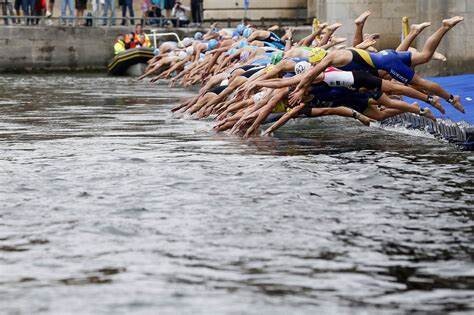
The decision has now been taken to move the men's race to Wednesday as well, but if it is not possible to use the Seine then the triathlons could be postponed further still, or become duathlons and lose the swimming element.
As it stands the men's event has been rescheduled to take place at 10.45am local time (9.45am BST) on Wednesday, after the women's race which is scheduled for 8am (7am BST).

A statement from World Triathlon said Friday remains a contingency day if one or both of the races are unable to go ahead.
"Tests carried out in the Seine today revealed water quality did not provide sufficient guarantees to allow the event to be held," World Triathlon said in a statement released on Tuesday morning.
"Despite the improvement in the water quality levels, the readings at some points of the swim course are still above the acceptable limits."
Training in the river had been cancelled over the weekend and again on Monday due to unsafe levels of pollution caused by the heavy rain that blighted the Olympic opening ceremony on Friday and initial outdoor events on Saturday.
Paris has a combined sewer system, meaning both wastewater and stormwater flow through the same pipes.
When there are periods of heavy rainfall, the pipes can reach capacity and this wastewater - including sewage - overflows into the River Seine instead of being sent to a treatment plant.
Open water swimming and triathlon events were due to take place in the Seine, more than 100 years after swimming in the river was banned in 1923.
Earlier this month, France's sports minister Amelie Oudea-Castera swam in the Seine alongside Paralympic triathlon champion Alexis Hanquinquant, who won gold in the men's PTS4 event at Tokyo 2020, to show people it was clean enough for the Olympic swimming events.
Paris mayor Anne Hidalgo also took a dip, joined by Paris 2024 chief Tony Estanguet, but there was no sign of President Emmanuel Macron who had suggested he would also take the plunge.
Hildago had originally planned to swim in the river in June but was forced to delay after tests indicated the presence of faecal matter 10 times higher than authorised limits.
Paris officials have spent €1.4bn in a bid to improve water quality ahead of the Games.
GB has strong medal contenders in the event. Britain's Alex Yee is one of the favourites for gold in the men's race while Beth Potter is the reigning women's world champion.
What happens if the swim can't go ahead?
Games organisers remain "hopeful" both triathlons can take place on Wednesday, though the event could be pushed further back to Friday or even changed outright to a duathlon (with the run and the cycle, but no swim) if it is still not possible to use the Seine.
Officials blamed extreme weather events for the issues. "We had meteorological events that were beyond our control," Aurelie Merle, executive director of sport competitions Paris 2024, said on Tuesday. "The whole world has seen as witness that it rained heavily in Paris [during the opening ceremony and on the first day of the Games]. The equivalent to July's rainfall fell in just 36 hours.
"The amount of water that has fallen on Friday and Saturday has been humungous so it's taken time for the river to get back to normal.
"We are quite hopeful because as you can see the weather conditions have been quite good.
"We are hopeful that we can organise these two competition events tomorrow."
E.coli in the river is of particular concern, and there is still a chance that further storms and rainfall could have a further impact on the water quality.
But Marisol Casado, the president of World Triathlon, said on Tuesday: "At this point we are quite confident that that will happen tomorrow.
"This is a part of adaptation to climate change we are facing. We are disappointed because we were not able to follow what was planned."
Losing the whole swim from the event is a drastic step but a distinct possibility. But Casado still considers it acceptable.
"I don't think this is unfair, it is just another situation of the competition," she said. "It's the same conditions for everyone."
IOC sport director Kit McConnell said: "It's not uncommon for changes to be made, particularly in outdoor sports.
"The conditions weren't right to put the athletes in the Seine today. There have been significant improvements regarding the Seine.
"We can't control the weather, the weather has had a significant impact."
How to follow the Olympics on Sky
Keep up to date with the action from the Paris 2024 Olympics across Sky Sports' digital platforms and Sky Sports News every day between now and Sunday August 11.
Alongside live news blogs and updates as records are broken and medals won on skysports.com and the Sky Sports app, Sky Sports News will also have dedicated reporters on the scene in Paris during the Games to gather the latest news both inside and outside the arenas in France as well as reaction to the big moments from medal winners, coaches, relatives and pundits.
by Sky Sports
Login to leave a comment
Paris 2024 Olympic Games
For this historic event, the City of Light is thinking big! Visitors will be able to watch events at top sporting venues in Paris and the Paris region, as well as at emblematic monuments in the capital visited by several millions of tourists each year. The promise of exceptional moments to experience in an exceptional setting! A great way to...
more...Four single-leg exercises all runners should try
Single-leg exercises will help you become a faster runner, while keeping injuries away.
Looking to spice up your strength-training routine, or hoping to become an injury-free speedster in just a few extra minutes a week? Cue single-leg strength training! We’ve got the perfect exercises to kickstart your single-leg journey to running stardom.
Focusing on one leg at a time, these exercises boost balance, stability and muscular coordination—crucial for efficient running mechanics. By mimicking the natural gait cycle, these exercises build strength in the exact movement patterns used during runs. Adding single-leg strength training to your routine can lead to more powerful strides, better endurance and fewer overuse injuries, making it a game-changer for runners of all levels.
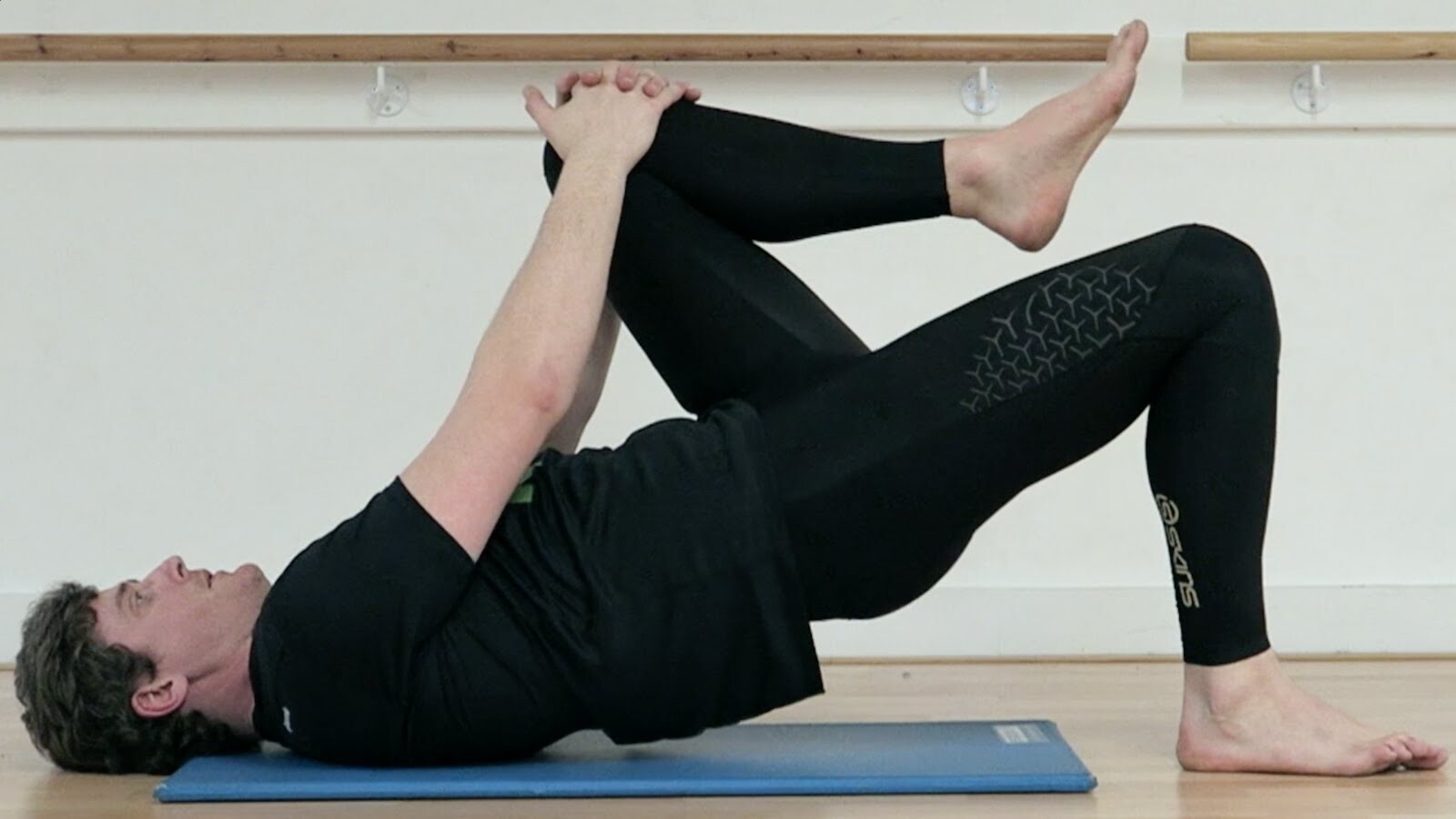
1.-Step-up
What it does: Step-ups target the quads, glutes and calves, building strength and power in the legs. They mimic the climbing motion in trail running, improving uphill running performance.
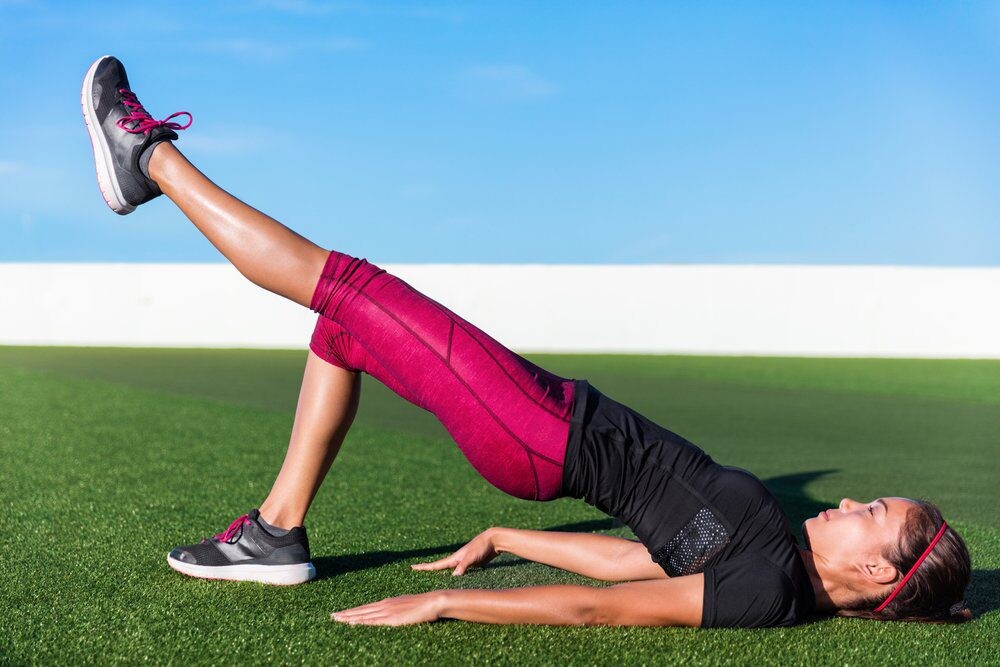
Stand several inches in front of an elevated platform. Place your right foot on the platform, ensuring your whole foot is on it.
Push through the heel of the elevated foot to lift your body onto the platform. Step down with the left foot, returning to the starting position.
2.- Single-leg glute bridge
What it does: Activates and strengthens glutes and core.
Lie on your back with your knees bent and feet flat on the floor. Lift your right leg, extending it straight out.
Press through your left heel to lift your hips toward the ceiling.
Lower your hips back down, and repeat on the left leg (alternatively, do 10 repeats with the right leg before switching to the left leg; repeat 3 sets).
3.- Hip hike
What it does: Strengthens the muscles around the hips and pelvis, helping to prevent injuries such as iliotibial (IT) band syndrome, runner’s knee and hip pain, which often result from weak or imbalanced hip muscles.
Stand on your right foot, keeping your pelvis in a neutral position.
Drop your left hip so it is several inches below the right side of your pelvic bone. Activate your right hip muscle to lift your left side back to a neutral position. Try imagining that your pelvis is a bowl and you’re tilting one side of the bowl down.
Aim for 20-30 repetitions per leg.
4.- Single-leg deadlifts
What it does: Single-leg deadlifts strengthen the hamstrings, glutes and lower back muscles. They improve balance and proprioception, essential for maintaining stability on uneven terrain.
Stand on one leg with a slight bend in the knee. Hinge at the hips, lowering your torso while extending the other leg behind you.
Keep your back straight and core engaged throughout the movement.
Return to the starting position by engaging your glutes and hamstrings.
Repeat 10 times, then switch legs.
For any of these exercises, moving with control and good form is more important than the number of reps you perform. Do fewer repeats if these exercises are particularly challenging or new to you; add sets once you build strength.
by Keeley Milne
Login to leave a comment
Transgender athletes will have more restrictions in Paris
Transgender women must have transitioned before the age of 12 to be eligible for the women’s category, to “prevent any potential biological advantage from male puberty”.
Transgender athletes will face more restrictions at the Paris Olympics compared to previous events. This is due to the recent regulation by numerous international federations that female athletes must have completed their transition before the age of 12 to avoid unfair advantages.
With this decision, the Paris 2024 Olympics has stricter rules and regulations regarding transgender athletes with differences of sexual development (DSD).

There have also been increased regulations for transgender athletes ahead of the Olympics, with many who have previously competed in international events, now unable to do so.
The Olympics in the French capital is set to make history as the first gender-equal games, with 50 per cent of the medals going to women, a first in the history of the event. There has been a rising interest in transgender athletes, with concerns that transgender women have an unfair advantage over fellow competitors, and a number of federations have strict guidelines.
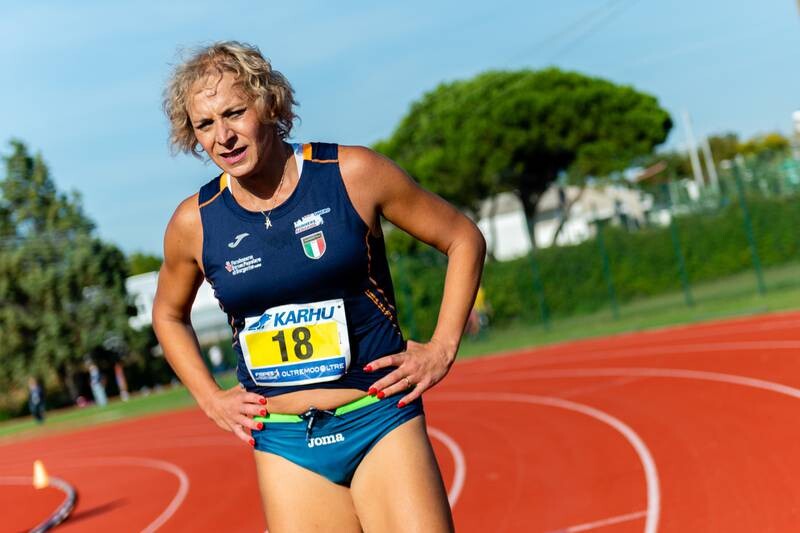
The International Olympic Committee, which oversees the Games, does not have specific rules or regulations and instead includes 10 guiding principles. The governing body also states that “each international federation is responsible for setting eligibility rules for its sport, including the eligibility criteria that determine qualification for the Olympic Games”.
The guidelines require transgender women to have transitioned before the age of 12 to be eligible for the women’s category, to prevent any potential biological advantage from male puberty.
The sports affected by this rules
The guidelines from the IOC have been adopted by World Athletics and Fina, swimming’s governing body.Cycling follow these guidelines for women’s categories but also allow for an “open” category which has replaced the current “men’s category” to allow transgender athletes to compete.
World Rowing allows those who transitioned before puberty to be eligible, and one of their criteria is for the testosterone concentration to be less than 2.5 nmol/L for a period of at least 24 months, while rugby has followed the IOC guidelines. Triathlon, tennis and archery however require testosterone levels to be below a certain limit to allow athletes to compete. Other sports allow transgender athletes to compete on a “case by case” basis.
Transgender and non-binary athletes at the Paris Olympics
Laurel Hubbard competed in the Tokyo Olympics, becoming the first openly transgender athlete to do so, and finished last in her competition group, and also Will be there in this edition. Nikki Hiltz is transgender and non-binary and uses the pronouns “they/them”, but has always competed in the female category, and will be representing USA at the upcoming Olympics. They set a US trials record in the 1500m to earn a place on the Olympic squad.
Quinn, a Canadian non-binary footballer, has also been chosen to represent their nation at the Olympic Games. The midfielder, who plays for Toronto, has always competed in female categories.
But there are other athletes that got out of the Games because of the new rules like the american BMX rider Chelsea Wolfe, who had been hoping to compete in Paris before the UCI, cycling’s governing body, changed its regulations and put an end to her hopes. She had qualified for Tokyo 2020 as an alternate.
Halba Diouf’s dream was also ended by World Athletics’ new regulations, effectively barring the Senegalese-born French sprinter from competing in Paris. Swimmer Lia Thomas became the first transgender athlete to win a US college title in 2022, but lost a legal case against World Aquatics for her right to compete. The American remains barred from competing in the female category.
by Marley Dickinson
Login to leave a comment
Paris 2024 Olympic Games
For this historic event, the City of Light is thinking big! Visitors will be able to watch events at top sporting venues in Paris and the Paris region, as well as at emblematic monuments in the capital visited by several millions of tourists each year. The promise of exceptional moments to experience in an exceptional setting! A great way to...
more...Snoop Dogg to carry Olympic torch at opening ceremony
With the Paris Olympic opening ceremony just days away, popular American rapper Snoop Dogg has been revealed as one of the final torchbearers of the Olympic flame ahead of Friday’s ceremony. Snoop Dogg, whose full name is Calvin Cordozar Broadus Jr., will carry the torch through the neighbourhood of Saint-Denis, according to the town’s mayor, Mathieu Hanotin.
Saint-Denis marks the final stop of the Olympic flame’s journey before it reaches the renowned Eiffel Tower, symbolizing the start of the global event. The rapper has already touched down in Paris, sharing his excitement with fans by tweeting a photo of himself in the Olympic host city on Tuesday, captioned: “U ready? Paris 2024 Olympics ya digggg!”
In addition to his role as a torchbearer, Snoop Dogg will provide regular reports and explore the city’s history and landmarks for prime-time shows on NBC and Peacock. His involvement will undoubtedly add some flair to the U.S. broadcast.

The D.O. Double G has been heavily involved with track and field this summer, also making an appearance at the 2024 U.S. Olympic Trials in Eugene, Ore., last month, where he did some play-by-play commentary on the 3,000m steeplechase and the 100m, plus ran an impressive 200m race in 34.44 seconds.
Snoop Dogg will be joined by French rapper MC Solaar and Ukrainian pole vault legend Sergey Bubka as they carry the Olympic torch around Saint-Denis (home to the Olympic stadium and aquatics centre). The torch relay is a historic Olympic tradition, and the Paris flame was first lit in April during a ceremony in Olympia, Greece, the home to the ancient Games. It’s been relayed across France over the past two months.

After the flame is lit, the opening ceremony will begin on the River Seine, where approximately 10,000 athletes from 206 National Olympic Committees and the IOC Refugee Olympic Team are expected. Canada’s flag bearer(s) have not yet been announced for the opening ceremony. According to the Canadian Olympic Committee, the announcement will come Wednesday morning.
by Marley Dickinson
Login to leave a comment
Paris 2024 Olympic Games
For this historic event, the City of Light is thinking big! Visitors will be able to watch events at top sporting venues in Paris and the Paris region, as well as at emblematic monuments in the capital visited by several millions of tourists each year. The promise of exceptional moments to experience in an exceptional setting! A great way to...
more...Why beginners shouldn’t do running drills
In endurance running, there is less of an emphasis on good biomechanics than there is in sprinting–understandably so, as our races don’t usually come down to the hundredth of a second that separates first and second place. However, good form will only help you run faster while lowering your risk of injury. Drills are basic running exercises that improve speed, agility, balance and coordination; but they may just be overwhelming for beginners.
Even though runners repeat the same forward running movements over and over, it is still important to move through your range of motion in other planes. This will activate different muscles to then support and aid the main muscles and joints that are active while running, giving you an extra boost. As an experienced runner, these are the drills I do in my warmup routine:
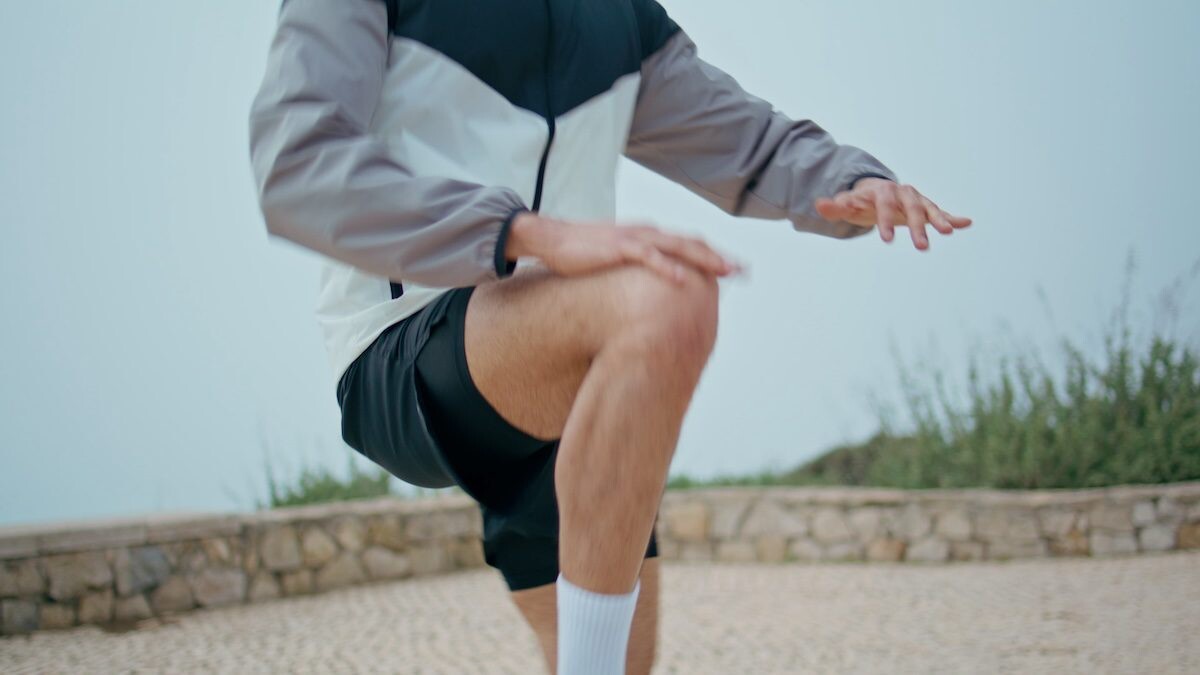
Heel walks and toe walks
Scoops

High kicks
Forward skipping with arm circles
Side skips
Carioca (grapevine)
A-skips
B-skips
Dribbling
High knees
One-foot hops
Two-foot hops
Skater jumps
If these sound like complete gibberish, that’s expected–I didn’t know what they were when I first started out, either.
As a beginner, your main focuses should be showing up and being smart as you introduce running into your fitness regime. If you are just trying to build fitness and endurance, first get the habit of running to really stick before trying out these drills.
You don’t want to add too much to your plate by adding technical exercises that will add more time to your workout and tire you out more quickly. Progressing your runs slowly and focusing on recovery until you build mileage and speed will be the key first steps when starting out.
Eventually, you will find yourself shifting your goals to running faster than you did in your last race–and that is when improving your form and adding an extra bounce to your step will make a significant difference in your results. When you no longer classify yourself as a “beginner,” introducing drills as the next step won’t feel as overwhelming. Keep in mind that these ABCs may be more difficult to learn than the ones you are already familiar with. Being patient, moving slowly and focusing on having good technique, above all, will help you become a stronger and faster runner.
by Cameron Ormond
Login to leave a comment
All the Benefits You Gain from Walking, Even if You Don’t Hit 10,000 Steps
Putting one foot in front of the other can help you live a healthier, happier life.
In the age of biohacking and complicated training protocols, it’s a good idea to periodically circle back to basics and remind yourself that exercise doesn’t need to be complicated to be effective. Sometimes, the best type of movement is the simplest, and it doesn’t get simpler than walking.

Yes, walking—the same physical activity you’ve been performing since toddlerhood. Back then, putting one foot in front of the other and moving your body from point A to point B was a thrill. Truthfully, you may never fully tap into that feeling of unencumbered freedom or primal joy again. Nevertheless, understanding the physical and mental health benefits of walking may inspire you to up your daily step count or squeeze in a quick stroll after dinner.
To convince you to do just that, we looked at the research and chatted with health and fitness experts for their thoughts on the benefits of walking. The next time you bump up against some confusing health advice or feel too overwhelmed to work out, consult this list. Then go for a walk.
1. Blood Sugar Stabilization
Consistently, research has shown that even a leisurely 10-minute stroll after dinner can help regulate blood sugar levels.
“The food that you eat is broken down in the stomach. Some of that gets broken down into different simple sugars and then sent to the bloodstream, and then that can be utilized in the muscles,” Todd Buckingham, Ph.D., exercise physiologist at PTSportsPRO in Grand Rapids, Michigan, tells Runner’s World. “Walking can help stabilize the blood sugar levels and not get that spike immediately after eating because the muscles are being activated and are going to uptake blood glucose.”
While even slow walking will do the trick, there is some evidence that picking up your pace may further mitigate the risks of type 2 diabetes. The findings of a systematic review published in the British Journal of Sports Medicine suggest that the faster you walk, the greater the benefits. According to the included studies, frequently walking at a casual pace (less than two miles per hour) was associated with a disease risk reduction of around 15 percent. A faster “brisk” pace of between three and four miles per hour was associated with a 24 percent lower risk, and an even quicker pace was linked to a 39 percent risk reduction.
2. Better Sleep
Walking, a low-impact exercise you can do daily, is “the single best way to improve sleep quality,” Michael Breus, Ph.D, clinical psychologist, sleep medicine expert, and founder of The Sleep Doctor, tells Runner’s World.
In simple terms, walking tires the body and increases the naturally increasing pressure to sleep throughout the day. Research shows that physical activity also increases melatonin, a sleep-promoting hormone, regulates body temperature, and can help reduce stress, which can negatively affect sleep.
If you’re having trouble falling asleep, Dixon recommends swapping your before-bed scroll sessions for an evening stroll at dusk. “Walking at night can be especially helpful when it comes to falling asleep. Natural light and avoiding screen time tell your body that it’s time to wind down,” he says.
3. Healthy Weight Maintenance
“The amount of calories burned while walking depends on the speed and distance, but any amount of calories burned can help with your goal of maintaining or losing weight,” William Dixon, M.D., co-founder of Signos and Clinical Assistant Professor at Stanford School of Medicine tells Runner’s World
In one study published in the Journal of Exercise Nutrition and Biochemistry, clinically obese women who participated in a 12-week walking program (50 to 70 minutes of moderately intense walking three days a week) lost abdominal fat and showed improvements in their fasting glucose levels. Members of the control group, all of whom maintained a sedentary lifestyle, exhibited no significant changes.
4. Stress Relief and Mood Regulation
There are reasons why taking a walk to “clear your head” actually works. “Walking can help with emotional regulation,” Craig Kain, Ph.D., a psychologist and psychotherapist based in Long Beach, California tells Runner’s World. “At times, our feelings get the best of us, and we find ourselves off-balance emotionally. Walking can increase levels of two neurotransmitters, dopamine, the ‘happy hormone,’ and decrease levels of cortisol, the ‘stress hormone,’ restoring our brains to a state of equilibrium.”
Kain notes that a regular walking routine can provide over-stimulated people a “time-out” for quiet self-reflection or allow isolated individuals to connect with others in their community. “A client of mine was depressed and housebound after COVID. Walking helped them gain confidence and a sense that they fit into the world again,” Kain says. “By just walking through their neighborhood, they began to feel less fear of other people. They loved dogs and began to say hello to the dogs and owners they saw along the way. Soon, their depression began to lift, and they looked forward to their walks, which became a daily practice, and [it inspired] the feeling of belonging in society.”
5. Reduced Risk of Dementia
Some research shows that getting in your daily steps—right under 10,000 is ideal—is associated with a reduced risk of dementia. But even less than half that amount could make a positive effect, according to a study published in the Journal of Alzheimer’s Disease.
The authors of the cross-sectional study found that participants who walked at least 4,000 steps a day exhibited better cognitive functioning and had thicker medial temporal lobes (a part of the brain associated with memory) than individuals who accumulated fewer steps. Exactly how physical activity influences brain health isn’t entirely clear, but the authors suggest that the theory of “adaptive capacity model” may be at play.
“This model suggests that during aging, the brain responds adaptively by diminishing capacity so as to reduce energy costs, leading to age-related regional brain atrophy and associated function,” they write. “Engaging exercise in late life can adaptively increase capacity, thus reducing the impacts of cognitive aging.”
“As a therapist who is very aware of the toll dementia takes on individuals, families, and extended families, 4,000 steps seems one of the best preventative mental health actions one can take,” Kain says.
6. Boosted Recovery
While walking is accessible, beginner-friendly, and appropriate for older adults, it can also benefit athletes and individuals who enjoy intense exercise.
“Personally, I like to use walking as a recovery tool,” Buckingham says. He explains that walking helps facilitate blood flow, which can help clear the byproducts of a tough workout and promote the repair of damaged muscle fibers. Walking can also help reduce postworkout swelling.
Dixon notes that some avid exercisers, especially those who prefer high-intensity activities, are often inactive (or even sedentary) during the other 23 hours when they’re not in the gym. “Walking is an easy way to increase your exercise when you might be too tired for another tough workout,” he says.
7. Inspiration to Move More
In and of itself, walking is an excellent use of your time, as evidenced by all the aforementioned benefits. But you may find that consistently hitting your daily step target leads to setting (and conquering) even more ambitious goals.
“I think one of the biggest [benefits of walking] is that it just gets people used to committing to physical activity,” Dixon says. “Often this encourages them to choose behaviors we know are healthy in other aspects, like sleeping more and making healthier diet choices.”
8. Easy to Stay Consistent
Compared to other types of exercise, walking has very few barriers to entry. It doesn’t require an expensive gym membership or sports equipment. You don’t need any special skills or training, and even those new to exercise or navigating health challenges can usually walk. “It’s low-impact, so you’re not going to get stress on the knees, ankle, and other joints that you might with running,” Buckingham says.
To get started with walking, all you really need is a pair of comfortable shoes. “Heck, you don’t even need a pair of shoes. You can walk around barefoot. Go for a walk on the beach,” Buckingham says. New walkers can start with a leisurely walk around the block and gradually add distance or pick up the pace.
Finally, unlike other workouts, you can easily incorporate walks throughout your day—every walk doesn’t have to feel like a workout. You can walk while you take a phone call or during a lunch break. If you don’t have time for one 30-minute walk, you can split it up into two 15-minute walks or three 10-minute walk breaks.
With a little planning, walking can become part of how you connect with friends, family, or pets. “I take my dog for a walk around the block, and we go for a walk around the block with family after dinner just to talk and get outside,” Buckingham says.
Login to leave a comment
Anti-Doping Agency reveals details leading to suspension of top Brazilian athlete caught in Kenya
The Anti-Doping Agency of Kenya has detailed how a top Brazilian athlete training in Kenya was nabbed over the use of a prohibited substance before she was suspended.
Anti-Doping Agency of Kenya (ADAK) has explained how Brazilian athlete Graziele Zarri was caught cheating in the country before she was provisionally suspended.
Zarri was among five athletes suspended by ADAK over various doping offences last month, the others being Kenyans Samuel Kimani Wanjiru, Panuel Mkungo, Brian Kiptoo and Victor Kiptoo.

The Brazilian was nabbed for using prohibited substances S1.1 Anabolic Androgenic Steroids (AAS)/Testosterone with tests conducted while she was in the country.
“I confirm that ADAK collected a sample from the athlete on 23rd January 2024,” ADAK’s Head of Legal Services Bildad Rogoncho said in a response to Pulse Sports.
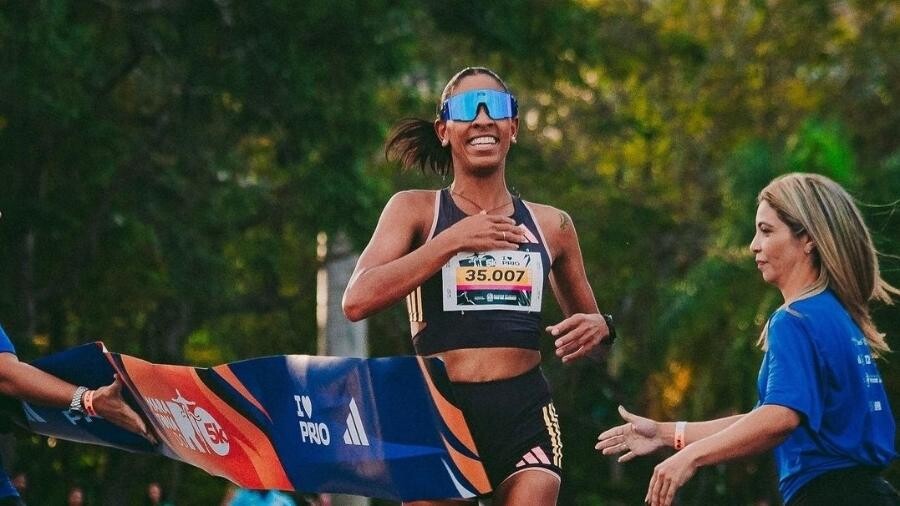
“The sample was transported to and analyzed by a WADA accredited laboratory in Stockholm, Sweden; that is the Doping Control Laboratory - Karolinska University Hospital.
“The Sample tested positive for Anabolic Androgenic Steroids (AAS)/ Pregnanediol, Androsterone, Androstane, Ketoetiocholanolone, Androstanediol, Etiocholanolone, Adilos, Epitestosterone and Testosterone.
“The athlete’s case was then referred to the Brazilian National Anti-Doping Organization for processing.”
ADAK says the athlete had been training in Eldoret when the sample was collected but when contacted, she denied having used the prohibited substance and claimed to have used a supplement acquired in Kenya.
She, however, failed to produce proof of the supplement and could not also recall its name, leaving ADAK with no option but to act.
“The athlete alleged to have bought and used some supplement which are suspected to have been contaminated with the substance found in the athlete's system. This matter is now being dealt with by the Brazilian National Anti-Doping Organization,” added Rogoncho.
Zarri is a long-distance runner who recently won the 5k race in Rio de Janeiro, Brazil and had been training in Kenya, alongside her husband Daniel Nascimento, in a bid to make Brazil’s Olympics team.
Nascimento is the South American marathon record holder and the only Brazilian qualified for the marathon at the upcoming Paris Olympics.
by Joel Omotto
Login to leave a comment
ADAK suspends highest number of Kenyan athletes since January last year
The Anti-doping Agency of Kenya has unveiled the highest number of athletes banned for violating various doping rules.
The Anti-doping Agency of Kenya has banned 33 Kenyan athletes for violating the various doping rules as per the Athletics Integrity Unit.
The list includes 26 runners with the remaining coming from basketball, rugby and handball. In road running, one of the most shocking athletes to have made the list of shame is Joshua Belet, the 2023 TCS Amsterdam Marathon champion.

According to reports, this marks the highest number of suspended athletes since January last year, when Kenya was on the verge of being banned by World Athletics. However, it is a move that was anticipated since there has been increased testing.
Belet, a 26-year-old long distance runner, has been suspended for the presence of Anabolic Androgenic Steroids, Testosterone, Adiol, Pregnanediol, Androsterone and Etiocholanolone. Belet was a promising talent who even made his national team debut at the World Championships in Budapest, Hungary but did not finish the race.
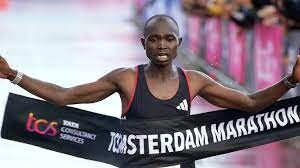
Dorcas Kimeli has also been suspended and she was also a promising athlete who had represented Kenya in a couple of events including the 2020 World Half Marathon championships where she finished 11th. As reported by Nation Sport, Jepchumba has been suspended for tampering with any part of the doping control.
Meanwhile, upcoming sprinters Duke Osoro and Joan Jeruto have also been added to the list of shame with the 2012 World Under-20 5000m champion David Bett also making the list.
Brian Wahinya, a former Kenya Sevens player has also found himself in hot soup alongside fellow players Charlton Mokua and Zeden Lutomia. The trio has been suspended for the presence of Cannabinoids, linked to cannabis sativa.
The basketball players who have gotten themselves in the list of shame include Alex Ramazani, Albert Onyango and James Mwangi Maina.
by Abigael Wuafula
Login to leave a comment
Kenyan Josephine Chepkoech provisionally suspended by the Athletics Integrity Unit
A Kenyan marathon runner has been provisionally suspended by the Athletics Integrity Unit over alleged use of prohibited substances.
The Athletics Integrity Unit (AIU) has provisionally suspended Kenyan marathoner Josephine Chepkoech following allegations of doping involving the prohibited substance, testosterone.

In a statement, the AIU said Chepkoech had been served with a Notice of Allegation for violating Article 2.1 and Article 2.2 of its anti-doping regulations.
"The AIU has provisionally suspended Josephine Chepkoech (Kenya) for Presence (Testosterone Metabolites)/Use of a Prohibited Substance (Testosterone)," the AIU confirmed.
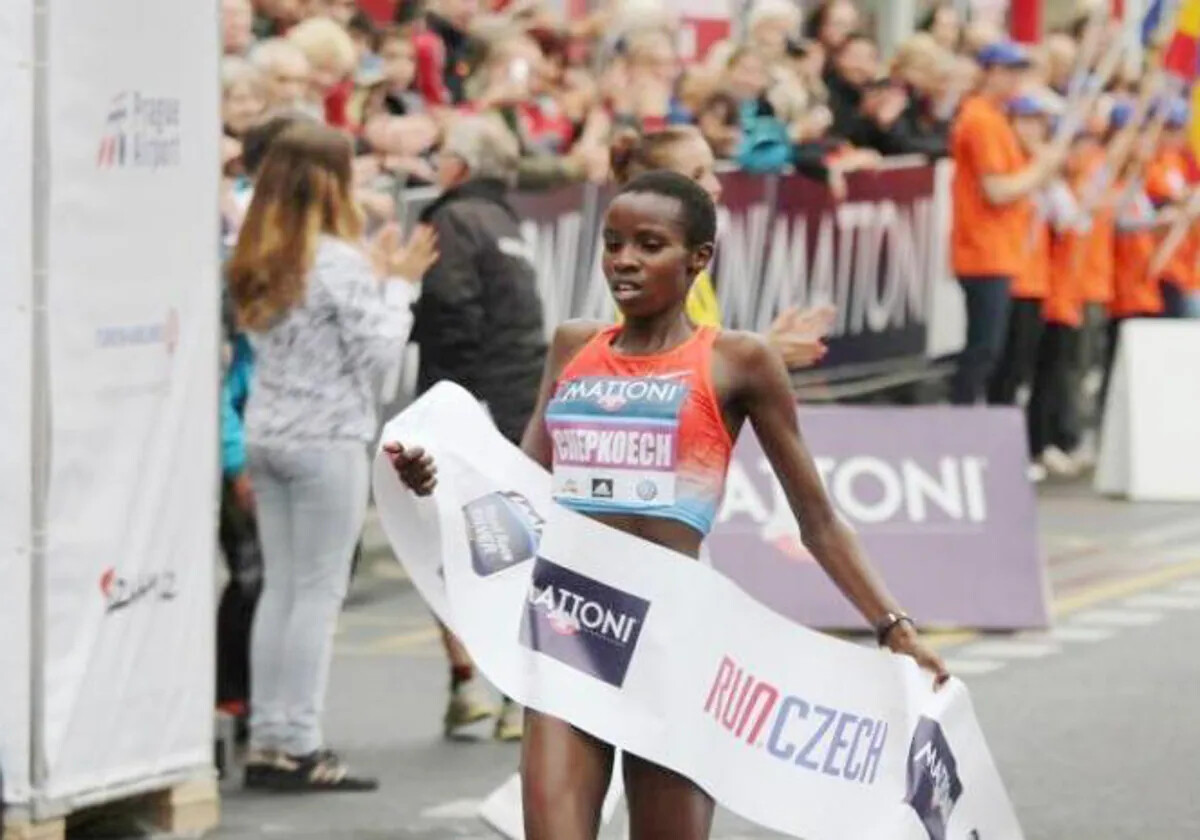
Chepkoech, 35, set her personal best marathon time of 2:22:38 in February at the Seville Marathon.
She had made her marathon debut in 2018 at the Nairobi Marathon, dominating the women's race with a winning time of 2:33:11.
Chepkoech's provisional suspension means she cannot participate in any competition until a final decision is reached which could result in an acquittal or a formal ban.
This is part of the AIU's crackdown on prohibited substances in athletics which has seen a rising number of Kenyan athletes penalized.
Notably, former youth world champion Jackline Wambui was also provisionally suspended in February due to a violation involving 19-Norandrosterone and 19-Noretiocholanolone which are also prohibited substances.
She faces a two-year ban pending a Court of Arbitration for Sport (CAS) appeal.
Wambui's achievements include winning gold at the 2017 under-18 world championships and becoming the 2019 African junior champion.
by Festus Chuma
Login to leave a comment
How Emil Zátopek helped create the Prague International Marathon
Founder of Prague International Marathon Carlo Capalbo opens up about meeting in 1995 that changed everything
This weekend’s Prague International Marathon will be the 29th edition of the event and, courtesy of organizers RunCzech, has become one of Europe’s fastest-growing road races.
It was founded back in 1995 by Carlo Capalbo, alongside 1988 Olympic men’s marathon champion Gelindo Bordin and quadruple Olympic gold medalist Emil Zátopek.
Zátopek, nicknamed the “Czech Locomotive”, is one of the country’s greatest ever athletes. He is best known for being the only person in history to claim three Olympic gold medals over the 5000m, 10,000m and the marathon in the same Games, at Helsinki 1952.
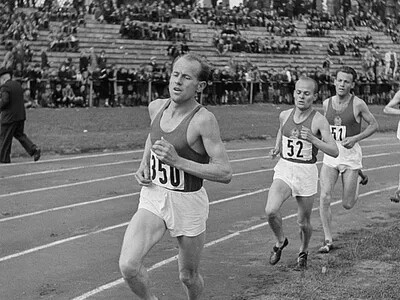
Incredibly, Zátopek’s gold in the marathon came in his first ever race over 26.2 miles.
The Czech athlete was also the first runner in history to go sub-29 minutes in the 10,000m and went undefeated in his first 38 races over the distance from 1948 through to 1954.
Zátopek’s legacy isn’t just defined by his athletics achievements though. The 8000-plus runners that will take to the streets on Sunday (May 5) for the Prague International Marathon – starting and ending around the Old Town Square – can thank Zátopek, Capalbo and Bordin for their vision back in 1995.
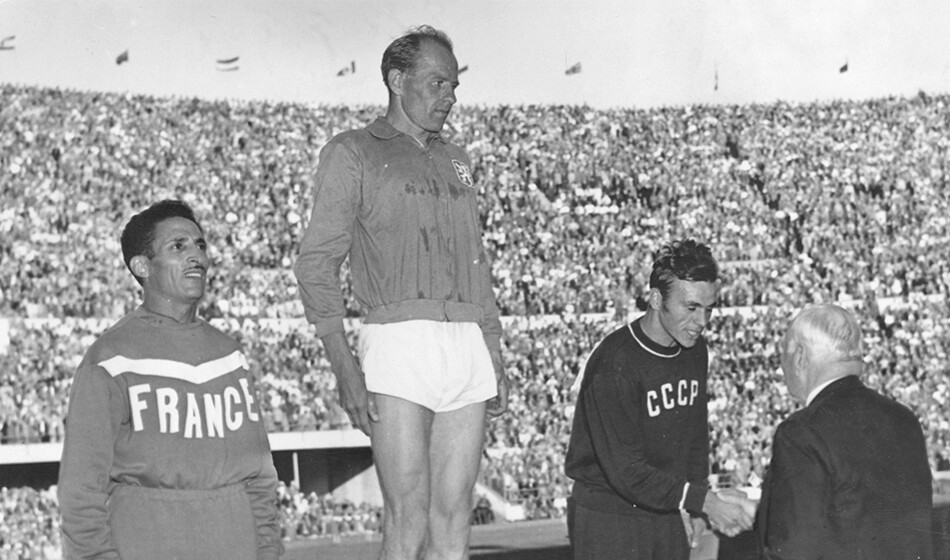
“You know, nearly 30 years ago I had this simple and beautiful dream,” Capalbo tells AW. “A friend of mine [Bordin] said to me that we should organize a marathon. So we went to see Mr Zátopek. That was the start of everything.
“When we went and met Mr Zátopek, we started off with a coffee and bábovka. At the end we tasted some lovely brandy that Mr Zátopek had. After that, we’d devised the marathon but we needed to work out where the people would run.
“So Mr Zátopek decided to draw the course for the Prague International Marathon on a napkin. The rest is history.”
The elite winners in the inaugural year of the event were Ethiopian Turbo Tummo (2:12:44) and Ukrainian Svetlana Tkach (2:38:33).
Since then, the course records have plummeted and are currently held by Alexander Mutiso (2:05:09 – 2023) and Lonah Salpeter (2:19:46 – 2019), although sadly Zátopek did not live to see the recent races as he died in 2000 aged 78.
Prague is a historically quick meet and the fact that the IOC have extended the qualification period for the Olympic marathon past the April 30 date, to include the Prague International Marathon, says a lot.
It means runners from a multitude of continents have flocked to the Czech Republic to meet the standard.
“The Prague International Marathon is a very prestigious event for both the IOC and World Athletics,” Capalbo says.
“There are so many people running to get the standard. The Olympics is the pinnacle of sport and it’s a celebration.”
Capalbo is also keen to stress of the importance of the masses. He states that running is much more than just one individual and his mission is to create sports events to make “people happy and healthy”, plus making the sport “more watchable for the general public”.
“This is not a normal job and running is not a normal sport,” he adds. “It’s a little bit specific. We wanted to give the perception that the winners of running are those who finish the race, not just those first across the line. The marathon is a fantastic advertisement for the city and it’s great for people’s mental health.
“We are a small country in the Czech Republic and many people come from abroad to the marathon. It’s a great income for Prague. This generates happiness and love for an event which is a tradition for us.”
There will also be the added element of “Battle of the Teams”. Successfully introduced last year, the idea is that both masses and elites are split into teams. It means that the placing of every runner matters.
This year, there will be four teams: Team Mattoni, Team Prague Airport, Team Turkish Airlines and Team Volkswagen.
“There is still the elephant in the room,” Capalbo says. “The masses don’t know the name of the winners. It’s why we’ve done Battle of the Teams so the people taking part in the marathon can look at the names of the elite athletes.
“We want to get the people close to the elite athletes. They also need European legends like Paula Radcliffe, Sebastian Coe and Rosa Mota to look up to. When you go to watch a football match you go crazy for your team and that’s what I need to see in running.”
by Tim Adams
Login to leave a comment
Prague Marathon
The Volkswagen Prague Marathon, established in 1995, has evolved into a premier event on the international running calendar, renowned for its scenic course through one of Europe's most picturesque cities. The marathon's route meanders through Prague's historic streets, offering runners views of iconic landmarks such as the Charles Bridge and Old Town Square. The predominantly flat terrain provides an excellent...
more...Why toe spreaders may be your next great recovery tool
Inexpensive, small and simple to use (albeit funny-looking), toe spreaders are commonly associated with pedicures and bunions—but these small devices are now also hailed as essential tools for enhancing foot function and performance. Here’s why runners are increasingly turning to toe spreaders (also called spacers) for better foot health and improved foot flexibility.
Toe spreaders, usually made from silicon, can be purchased for $10 (or less) online, and are usually intended to gently realign the toes and restore their natural spacing. They can be worn while exercising and walking around, or only used when doing foot exercises and strengthening drills—and some research suggests they can lead to performance benefits for athletes, with enhanced efficiency, improved balance and proprioception and an increase in explosive output.
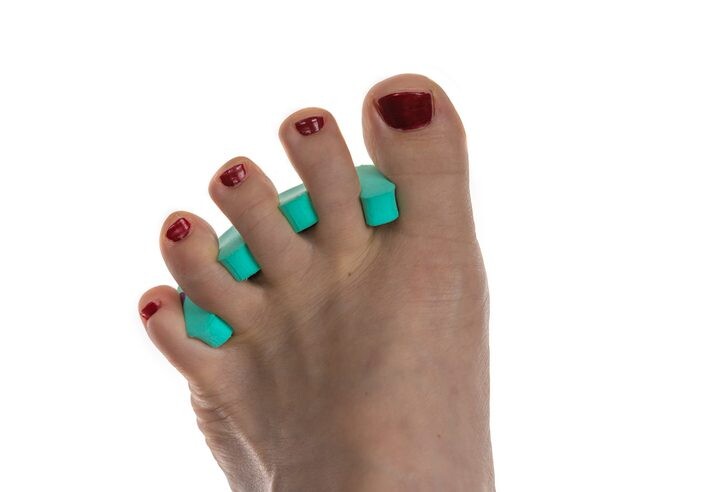
Enhancing foot functionality
In a recent article in The Wall Street Journal, Dr. Dennis Cardone, a sports medicine specialist at NYU Langone Health in New York City, explains that our feet should act like small tripods, with the centre of the heel, ball of the big toe and base of the baby toe all supporting our weight equally. When our feet are squeezed into tight shoes, the tripod becomes uneven and narrow, leading to balance problems and painful injuries like bunions and hammer toes. Runners and other active people may have more potential for injury.
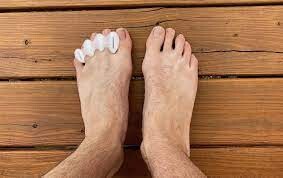
A new foot fad?
While Cardone says that wearing toe spreaders won’t prevent deformities, they can help relieve the pain and are a cheap and easy aid when contrasted with surgery or physical therapy. The simple gadgets can be purchased online from Amazon and other websites—and runners aren’t the only ones sporting them. Celebrities like model Ashley Graham are jumping on the bandwagon, posting photos of their toes in spreaders or while wearing toe-spreader socks.
Improved circulation for happier feet
As we walk, we should feel our toes (especially the big ones) press into the ground, Courtney Conley, founder of web-based foot health resource Gait Happens, explains to the WSJ. Strengthening the muscles of the feet and toes can lead to better overall foot stability and balance during running. Besides building strength and boosting alignment, spacers can also improve blood circulation by creating space between the toes, which promotes healing and reduces the risk of inflammatory conditions like plantar fasciitis. Toe spacers can also be beneficial for athletes with foot fatigue.
The rising popularity of toe spreaders is encouraging people to take better care of their feet. Many people aren’t aware that their toes should be able to move individually, similar to fingers. When slipping toe spreaders on for the first time, the sensation may feel quite intense or uncomfortable, and experts suggest gradually increasing the time wearing the spacers as you watch TV or do chores. Adding a few foot and toe exercises, spaced throughout the day (with or without toe spreaders on), can make wearing the tools less uncomfortable, while giving foot function an extra boost.
by Keeley Milne
Login to leave a comment
Kenya's Celestine Chepchirchir issued with three-year ban for doping offence
Kenyan runner Celestine Chepchirchir has been banned for three years after testing positive for a prohibited substance, forfeiting all recent titles and awards
Kenyan road runner Celestine Chepchirchir has been banned for three years from competing after being found to have violated World Athletics anti-doping rules.
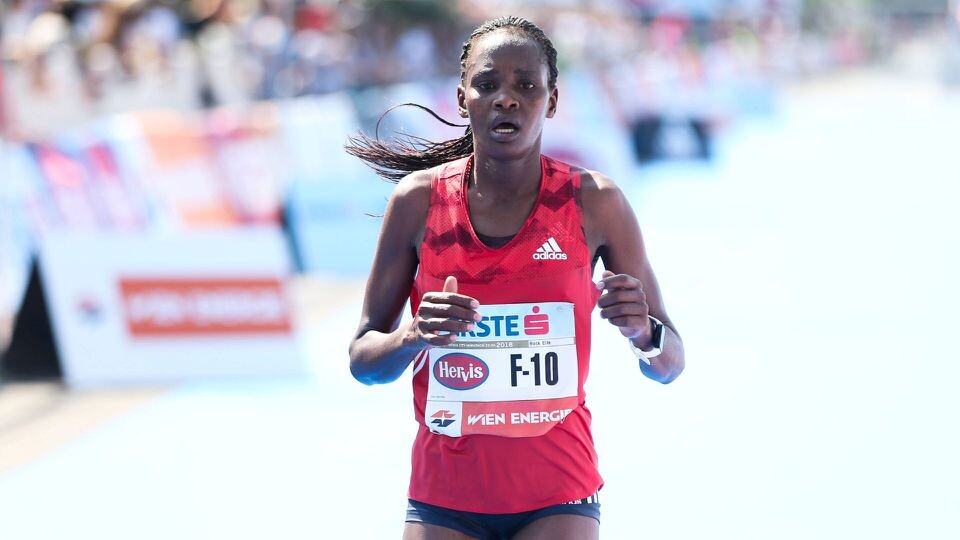
The 28-year-old athlete provided a urine sample out-of-competition in Kapsabet on February 9, 2024 which tested positive for exogenous testosterone and its metabolites.
According to the official AIU statement, the laboratory in Lausanne, Switzerland, identified the presence of testosterone and its metabolites—Androsterone, Etiocholanolone, 5α-androstane-3α,17 diol, and 5β-androstane-3α,17 diol—as being of exogenous origin.
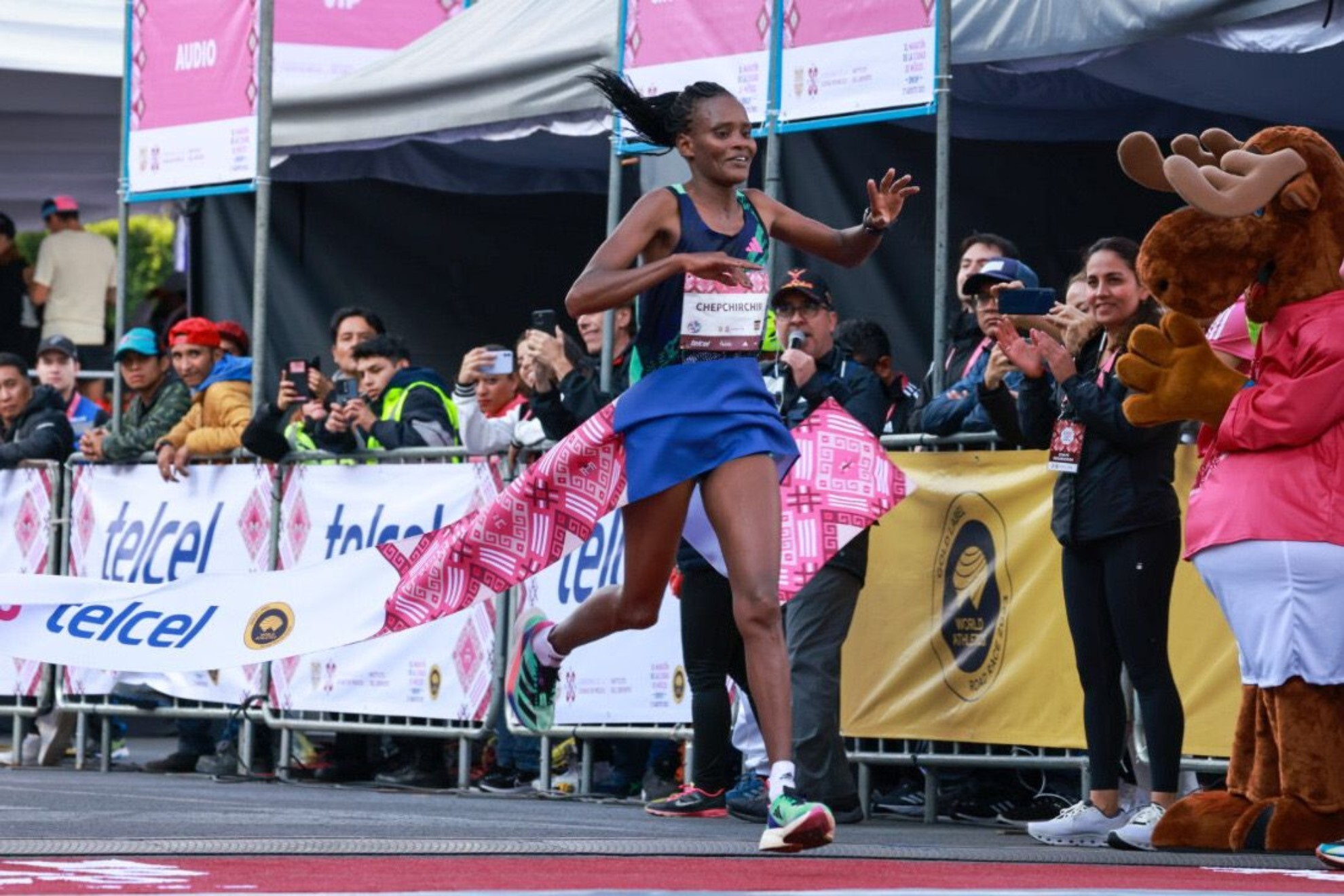
"Ms. Celestine Chepchirchir did not have a Therapeutic Use Exemption that would justify the presence of these substances," the AIU confirmed.
The ruling added that there was no departure from the International Standard for Testing and Investigations or the International Standard for Laboratories that could explain the adverse finding.
The athlete faced a mandatory four-year period of ineligibility for such a violation under the World Anti-Doping Agency (WADA) guidelines.
However, Chepchirchir's prompt admission of the violations and her acceptance of the consequences enabled her to benefit from a reduced three-year ban.
"The athlete did not reply within the initial deadline but subsequently signed an Admission of Anti-Doping Rule Violations and Acceptance of Consequences Form," the AIU reported.
Celestine Chepchirchir's ban will commence from March 26, 2024, the date on which her provisional suspension was first imposed.
Moreover, all her results post-February 9, 2024, will be disqualified, with all consequent titles, awards, medals, points, prizes, and appearance money forfeited.
Rights of appeal against the decision are available to WADA and the Anti-Doping Agency of Kenya (ADAK), which could potentially take the matter to the Court of Arbitration for Sport in Lausanne, Switzerland.
The AIU has confirmed that this decision will be publicly reported on their website as part of their commitment to transparency and fairness in the handling of doping cases in athletics.
This case marks another in a series of doping incidents involving Kenyan athletes a troubling pattern that has drawn global attention to the nation's sports programs.
by Festus Chuma
Login to leave a comment
Should trail running be an Olympic sport?
Did you know that off-road running was part of three historic summer Olympic Games, including the 1924 Olympics in Paris? One hundred years on, runners from four different clubs in Britain have come together to launch a campaign to bring trail running (as we now call it) back to the Olympics. The next Games to include new sports is Brisbane 2032, and the group of passionate trail runners feel strongly that trail running deserves a spot.
“At Paris 2024, four new sports are being added that include breakdancing, surfing, skateboarding and sport climbing,” runner Jimi Harrison said in an interview with British media outlet The Star. “We feel that new Olympic sports should reflect the trends and popularity of the current day and believe the time has come for trail running to be adopted at future Olympics.”
To raise awareness for the cause, Harrison and the group ran a relay of more than 455 km, from London to Paris. Their feat ended on Sunday in the French capital.
Backed by running shoe brand Merrell, the group are calling on Olympic decision-makers. They have written an open letter to representatives of the International Olympic Committee (IOC) and International Trail Running Association (ITRA) to support their cause. (Merrell recently signed Olympian Alexi Pappas to its athlete roster. Pappas, who raced the 10,000m at Rio in 2016, setting a national record for Greece, ran two big trail ultras in 2023: the Black Canyon 100K and the Leadville 100.)
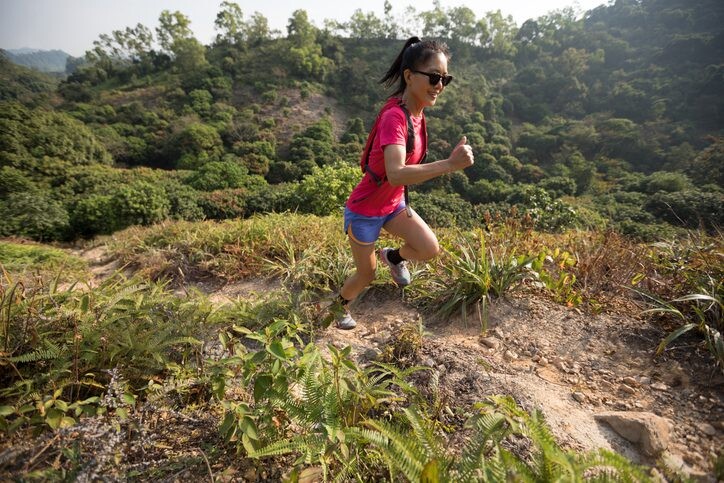
Some would argue that cross-country running is a more obvious fit for inclusion in the Olympics. With shorter, looped, spectator-friendly courses, cross-country could be more attractive to broadcasters, thus generating more interest. And cross-country usually features track runners. There is less crossover between track and trail running, though it’s not unheard of for track runners to transition to trails, as we have seen.
This is not the first attempt to bring trail running to the Olympics. In 2021, a trail running company from Spain launched its own campaign to bring it to the 2028 Olympics in Los Angeles. (They were not successful.)
Trail running has increased significantly in popularity in recent years, thanks partly to events like the Barkley Marathons, UTMB (Ultra-Trail du Mont-Blanc) and the Golden Trail Series, which make international news headlines.
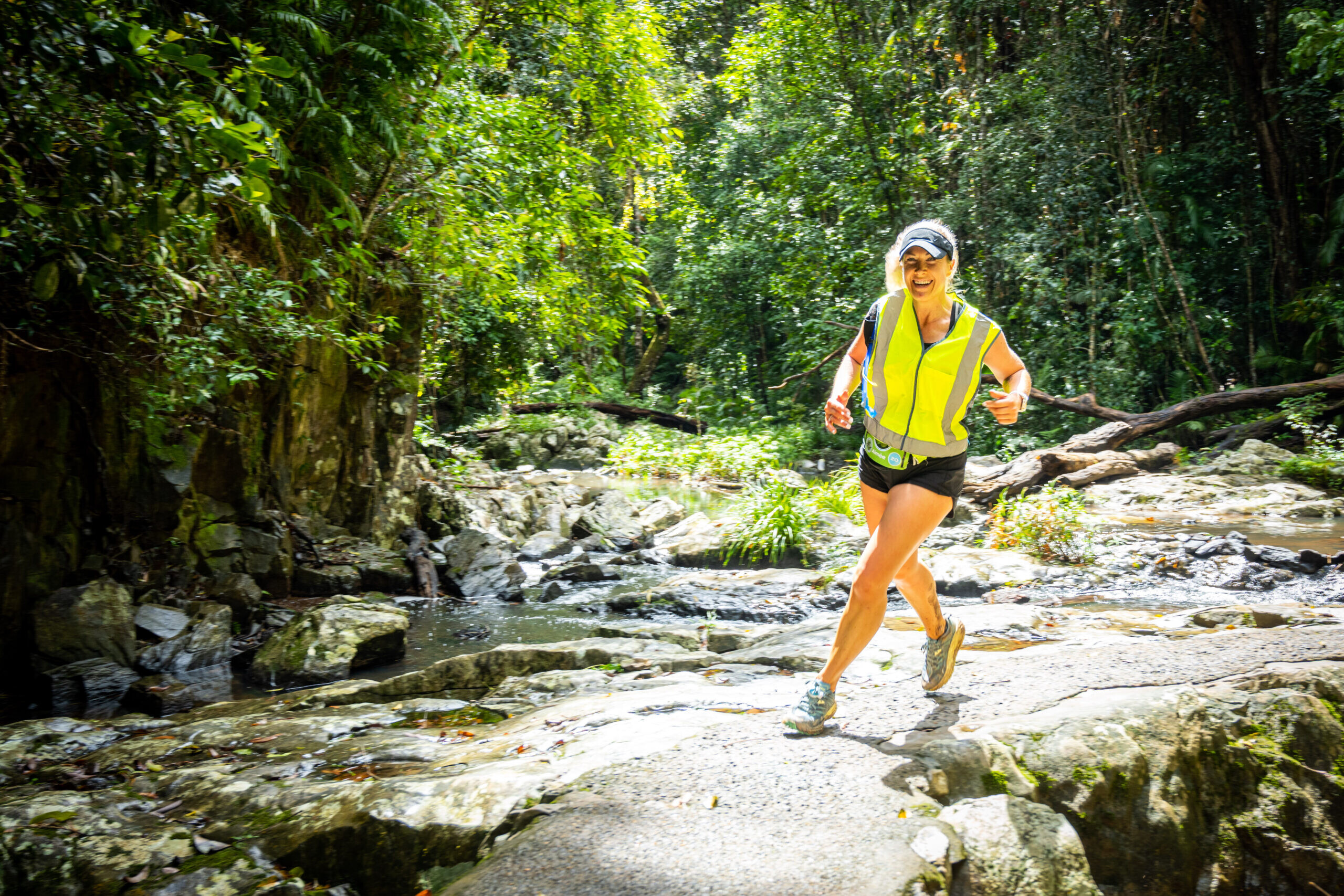
by Claire Haines
Login to leave a comment
Pamela Jelimo set to receive Olympic silver after Ekaterina Guliyev's doping ban
South Africa's Caster Semenya has been elevated to gold with Kenya's Pamela Jelimo set for silver after doping reshuffle in 2012 Olympics 800m.
Former Olympic 800 champion, Pamela Jelimo, is poised to be awarded the 2012 London Olympic 800m silver, marking a significant shift in the event's final standings due to doping violations.
This development comes after the Russian Athletics Federation (RusAF) announced a four-year ban for Ekaterina Poistogova-Guliyev for historic doping offences, leading to a reshuffle of the medal positions from the London games.
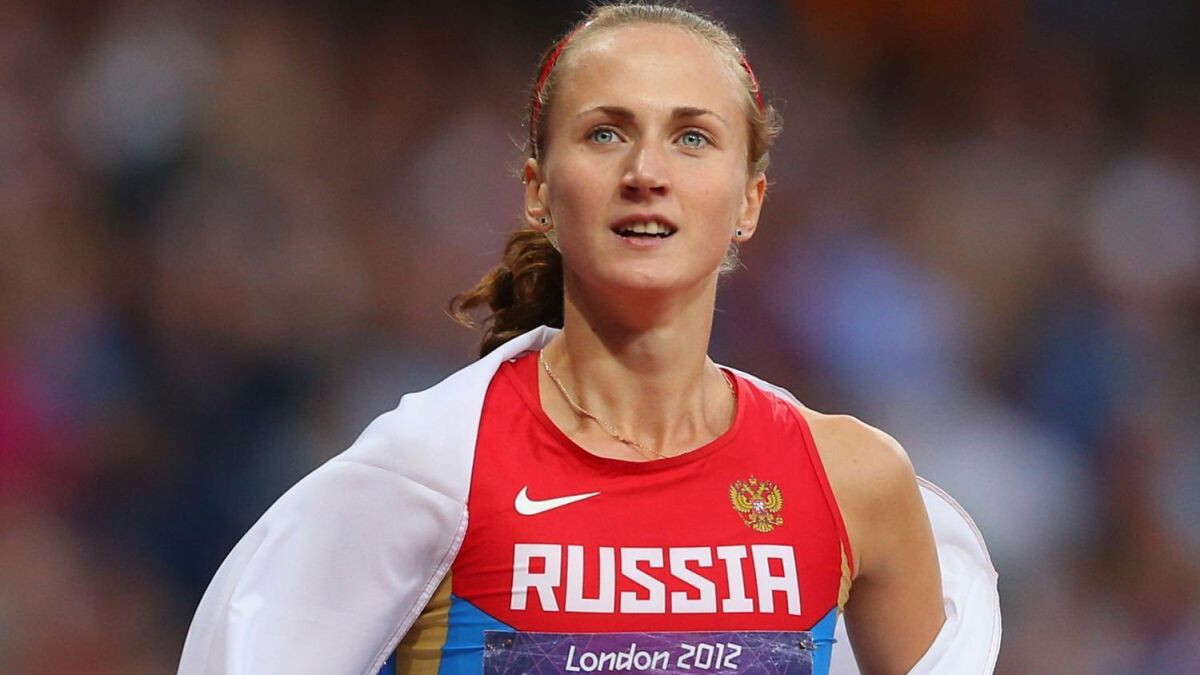
The ban, which results from violations between July 2012 and October 2014, voids all of Poistogova-Guliyev's results from that period, according to a RusAF statement.
The athlete, who initially competed for Russia before switching allegiance to Turkey, was implicated in the use or attempted use of banned substances, with evidence drawn from the Moscow anti-doping laboratory.
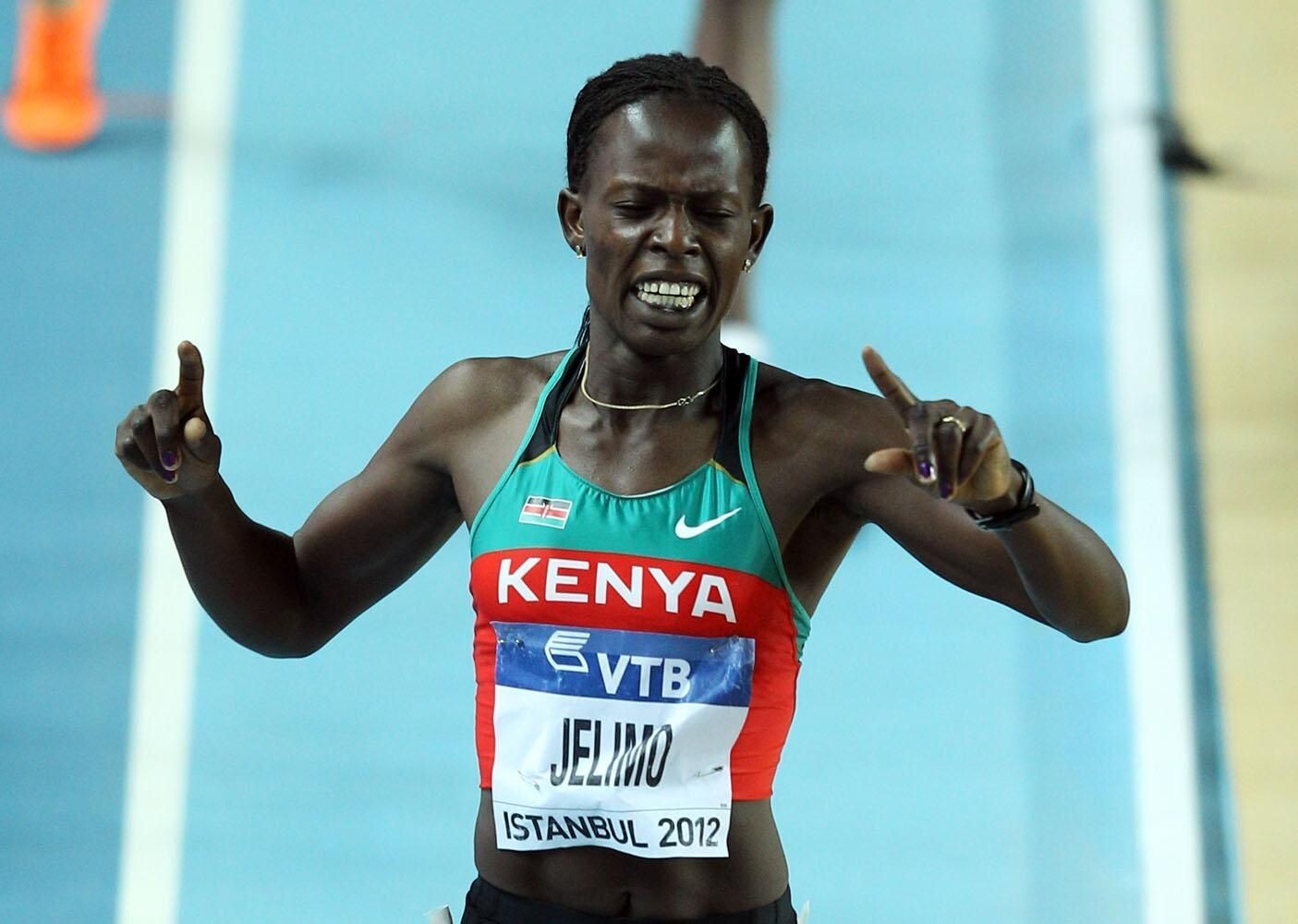
The case has had far-reaching implications, not only for Poistogova-Guliyev but also for other athletes in the 2012 Olympic 800m event.
Pamela Jelimo, the London Olympic bronze medallist, will be elevated to silver, and American Alysia Montano, who finished fifth, is set to inherit the bronze, pending official confirmation.
This adjustment stems from a broader investigation into systematic doping within Russian athletics, spearheaded by the World Anti-Doping Agency (WADA).
WADA had initially recommended a lifetime ban for Poistogova-Guliyev in 2015, alongside the stripping of her London medal, as part of its findings on state-sponsored doping.
Although the Court of Arbitration for Sport (CAS) imposed a two-year ban on Poistogova-Guliyev in 2017, her results were initially voided only back to October 2015, allowing her to retain her Olympic medal temporarily.
The recent decision by RusAF to extend the voiding of her results to July 2012 effectively strips her of the medal, subject to final approval by the International Olympic Committee (IOC).
The women's middle distance events at the London Olympics have been notably affected by doping, with three runners in the 800m final, including Poistogova-Guliyev, Mariya Savinova, and Elena Arzhakova, having their results voided due to doping offences.
Jelimo's elevation to the silver medal position comes after a long wait; it took 10 years for her to be awarded the bronze medal for the same event, following the disqualification of Maria Savinova for doping violations.
The reallocation of medals in cases of doping violations is a complex and often slow process, involving multiple organisations including WADA, CAS, RusAF, and the IOC.
The final decision on the redistribution of medals from the 2012 Olympics will be closely watched by the athletics community and represents a critical step in the ongoing fight against doping in sport.
Poistogova-Guliyev's ban, which lasts until 2026, reflects a deduction for the time served under her previous CAS-imposed sanction.
In addition to her case, RusAF has announced a two-year and six-month ban for 3,000m steeplechaser Nikolay Chavkin for similar doping offenses.
by Festus Chuma
Login to leave a comment
Four exercises to build bulletproof knees
We know that running doesn’t wreck your knees (and might even make them stronger) but newer runners or those making a comeback occasionally experience some soreness, and the knee is one of the most common areas of injury for runners. The easiest way to keep knee pain at bay is to beef up the muscles around the knee joint.
Adding a handful of simple exercises to your routine will help your legs provide better support and alignment, giving your legs the oomph they need to keep going strong while preventing common injuries such as patellofemoral pain syndrome and runner’s knee. We have four exercises to help you get started.
Single-leg glute bridge
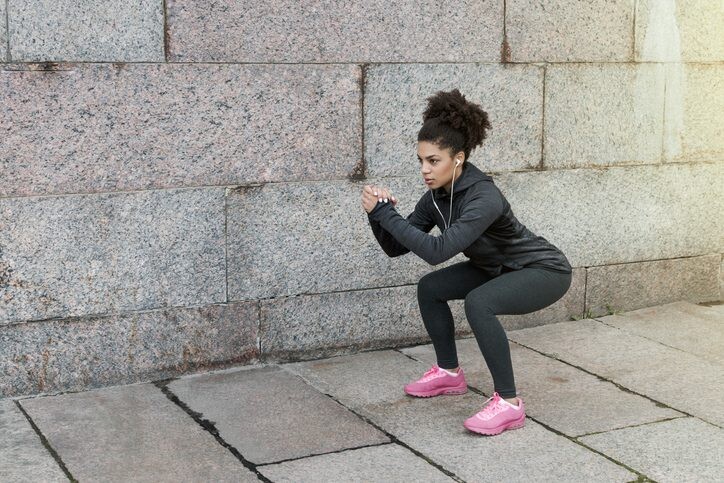
This exercise strengthens the glutes, hamstrings, and core while also improving hip stability and alignment.
Begin lying on the floor with your knees bent and hands by your side.
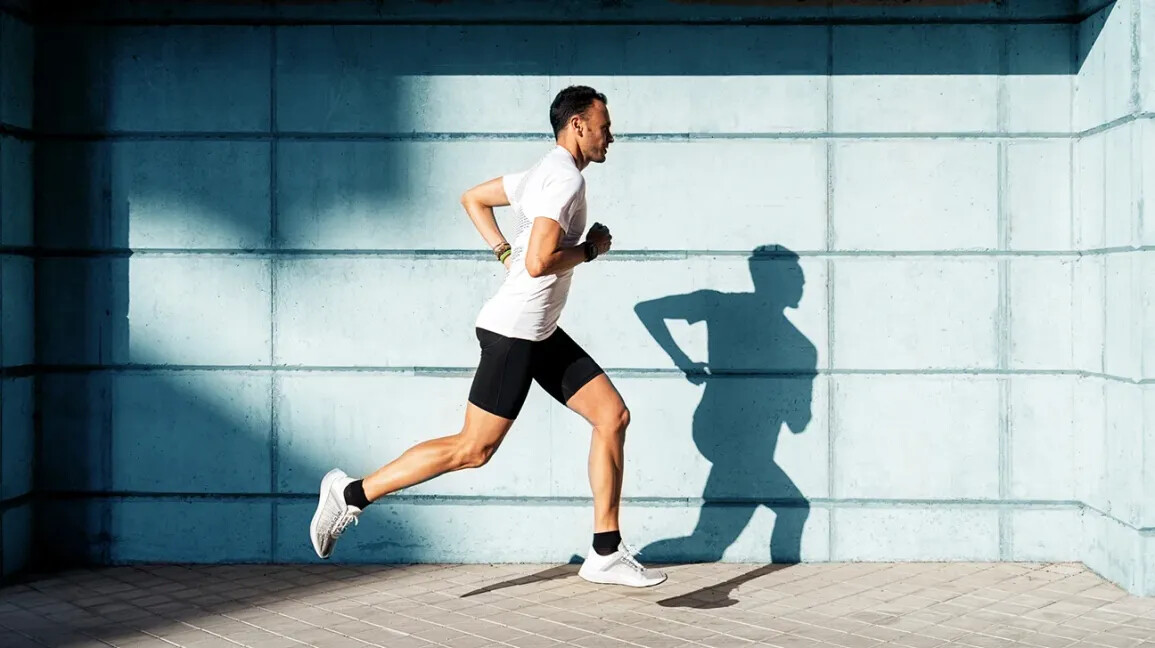
Engage your core and lengthen one leg out, keeping one foot on the floor. Push through your foot, slowly lifting your hips into a bridge position and keeping your one leg extended.
Single-leg glute bridge
This exercise strengthens the glutes, hamstrings, and core while also improving hip stability and alignment.
Begin lying on the floor with your knees bent and hands by your side.
Engage your core and lengthen one leg out, keeping one foot on the floor. Push through your foot, slowly lifting your hips into a bridge position and keeping your one leg extended.
Hold for a second at the top, squeezing your glutes and engaging your core muscles. Gently to the starting position. Aim for 10 repetitions, and then repeat on the other side.
1.- Forward lunges
Lunges engage the quadriceps, hamstrings, glutes, and calf muscles, and activate stabilizing muscles such as the hip abductors and adductors. They improve overall stability and reduce stress on the knees.
Stand with your feet hip-width apart.
Take a step forward with one leg and lower your body until both knees are at a 90-degree angle, hovering the back knee just above the ground.
Push off the front foot to return to the starting position and repeat with the other leg. Aim for five to 10 repeats to start. You can build resistance by adding sets, or by holding weights once you become comfortable.
2.- Step-ups with knee drive
Step-ups strengthen the muscles responsible for supporting the knee joint during weight-bearing activities like running and enhance the knee’s ability to withstand repetitive stress and maintain proper alignment, reducing the likelihood of overuse injuries.
Stand with feet hip-width apart, facing a step, box, or bench.
Step up with the right foot onto the box, and then drive the left knee up toward the chest. Aim for your hip and knee to form a 90-degree angle. Step back down and repeat on the other side. Aim for 3 sets of 10 reps on each side.
If you want more of a challenge, hold a light weight in the hand that is on the side doing the step-up (if you’re stepping up with your right leg, hold a weight in your right hand).
3.- Squats
Squats strengthen the quadriceps muscles which directly connect to the knee. Strong quadriceps provide the knee with more stability, thus reducing and preventing injury. Start with two to three sets of eight to 12 repetitions.
Stand with your feet shoulder-width apart, toes slightly turned out, and your chest up.
Lower your body by bending your knees and pushing your hips back as if you’re sitting in a chair, keeping your weight on your heels.
Lower until your thighs are parallel to the ground, then push through your heels to return to the starting position, squeezing your glutes at the top.
As strength improves, you can gradually increase the number of sets, repetitions, or resistance (such as adding weights) to continue challenging the muscles and promoting knee strength.
4.- Single-leg mini squat
This exercise mimics the motions of running, engaging all the major muscle groups involved in running to build strength and stability while It also challenges balance and building proprioception skills.
Begin by standing on one leg with your knee slightly bent. Keep your chest up, shoulders back and core engaged for balance.
Slowly lower your body by bending the knee of the leg you’re standing on, imagining that you’re sitting back in a chair. Keep your back straight, and go as low as you can (doesn’t need to be far!) while maintaining control.
Hold for a few seconds to challenge your balance and stability, and then push through the heel of the standing leg to return to the starting position. Try five-10 reps on each side to start.
As with any new activity, use caution and patience as you incorporate these into your routine. Feel free to modify by reducing the number of repetitions if you are struggling; if you’re very comfortable with lower-body strength training, add resistance by holding weights as you do the exercises.
by Keeley Milne
Login to leave a comment
Kenyan athletes Lagat Ivyne and Rutto Asbel secure the victories in women and men's category at the Run Rome The Marathon
The marathon of Rome, which took place today among the wonders of the eternal city, was a record-breaking event and dedicated to water. The Acea Run Rome the Marathon, in fact, is the first marathon dedicated to water and water saving. The 2024 edition was won by the Kenyans Asbel Rutto, in the men's competition, and Ivyne Lagat, in the women's competition.
The men's podium was completed by the other two Kenyans Brian Kipsang and Sila Kiptoo, while the Kenyan Lydia Simiyu and the Ethiopian Emebet Niguse finished second and third. Deputy general manager operations Giovanni Papaleo presented the award for Acea.
This year the Marathon has chosen "run for water" as its hashtag, to underline the profound connection that unites sport and water and the importance of water resources in protecting people's health and the health of planet Earth.
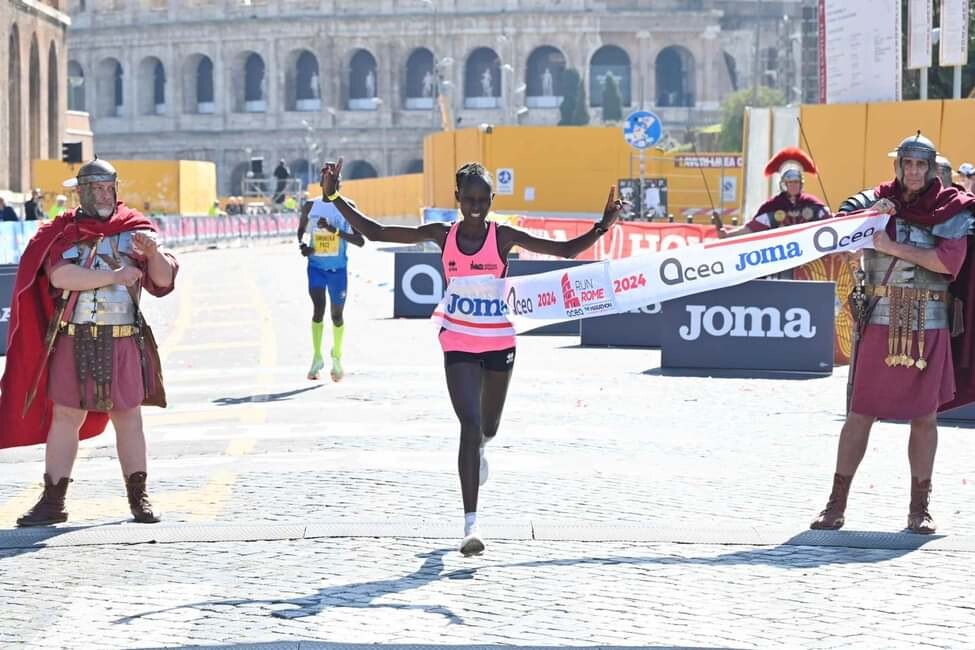
Along the over 42 kilometers of the race, Acea guaranteed many refreshment points, with around 60 thousand liters of water available to the athletes and over 100 thousand biocompostable glasses, with a view to the circular economy. It was a record race for the number of participants, for the number of foreigners and blessed by the record of the route.
The Rome marathon took place in one of the richest cities in the world in history and art but also in fountains and aqueducts, therefore an ideal place to affirm water as the identifying theme of one of the most important running events at a national level and international.

At the starting line this morning, over 19 thousand registered for the marathon alone, more than 40 thousand people who also ran the "Acea Run4Rome" solidarity relay and the 5 kilometer "Fun Run" city race. Four records have been achieved since the 2024 edition: record number of participants for an Italian marathon, record number of foreign participants, over 10, the record number of official pacers in the race, 200 of which over 100 foreigners from 15 nations and finally the record number of group training sessions, Get Ready, which were 5 in Rome and over 30 around the world, including the United States and Canada. A race route over 42 km long, renewed compared to last year, which from the historic center, starting and finishing on Via dei Fori Imperiali, crossed various points of the capital, among the wonders of the city.
Last kilometer, the arrival is thrilling, tears and heart pounding, the time needed to complete the Colosseum tour for the second time, which the marathon runners have achieved a spectacular finish line on the Imperial Forums with the Colosseum behind them which will also dominate in a unique souvenir photo in the world.
Login to leave a comment
Run Rome The Marathon
When you run our race you will have the feeling of going back to the past for two thousand years. Back in the history of Rome Caput Mundi, its empire and greatness. Run Rome The Marathon is a journey in the eternal city that will make you fall in love with running and the marathon, forever. The rhythm of your...
more...Conquer Your Longest Distance Yet With These 9 Tips
Ultrarunners and coaches share their best advice for building mileage without getting injured.
Whether you want to progress from a 5K to a half marathon or a marathon to an ultra, a few general rules on how to run longer can help you get there.
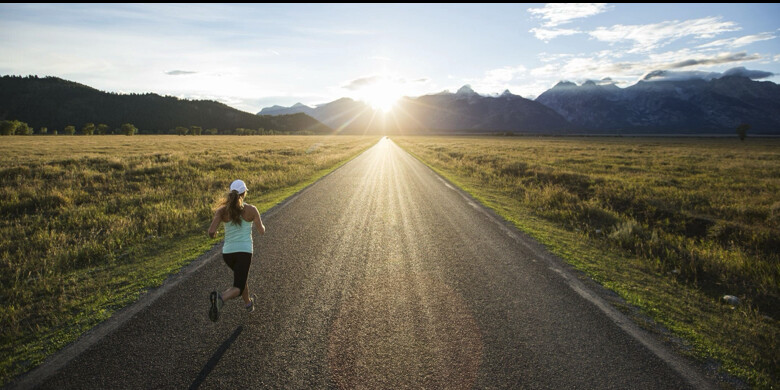
While building mileage and time on your feet is paramount, the key to doing it successfully involves patience and persistence. “As much as volume matters—volume is king—too much volume too soon can get you on the sidelines,” Bertrand Newson, RRCA-certified run coach and founder and team captain of Too Legit Fitness, based in San Jose, California, tells Runner’s World.
Follow these tips from Newson and other coaches and ultramarathoners to successfully increase your mileage, avoid injuries, and crush your longest distances.
1. Build a Base, Then Keep It Consistent
“I steadily built up to running 250-mile races over many years, but I started by running one mile at a time,” says Sarah Ostaszewski, pro ultrarunner with Tailwind Nutrition who won the 2023 Ouray 100-Mile Endurance Run. “Build a strong base and try to keep a consistent running routine, so then adding a little extra here and there won’t seem so daunting.”
Base training typically requires about four to eight weeks (before following a race training schedule) to strengthen your cardiovascular system and your muscles, but the longer you can regularly run and set a foundation, the better. Your base work should involve mostly easy runs, low mileage, and maybe low-key speedwork (depending on your fitness level), like ending a run with strides. This part of your training is all about consistency, rather than actually building mileage.
Ultrarunner Mirna Valerio stays consistent by focusing on time on her feet, rather than distance. “This has been mentally freeing,” the author of A Beautiful Work in Progress tells Runner’s World.
“I have a standing appointment with my treadmill a couple times a week,” says Valerio, who will aim to run a minimum of 12 hours a day over six days at the Lululemon Further event, an ultramarathon for women in March. “I just get it done, which incidentally is one of my mantras.”
2. Find Your Best Approach to Building Volume
If you’re new to running and want to run longer, add another day of a short, easy run to your schedule, suggests Stefanie Flippin, an ultrarunner, Lululemon ambassador, and doctor of podiatric medicine, who has earned a first-place finish at several 100-milers.
Maxed out on available days of the week? Add to your long-run mileage, which is what Leah Yingling, ultrarunner and biochemical engineer who will see how far she can run in 24 hours at Lululemon Further, does first when aiming to build volume. The general rule is to increase your weekly mileage by about 10 percent each week, adding to that long run. For example, if you currently clock 17 miles per week with three four-mile runs during the week and a long run of five miles on the weekend, you would keep your midweek mileage the same, but kick up your long run to about seven miles next weekend.
Yingling, and many other pros, also do two runs a day. While this won’t work for everyone, if you don’t have a significant single block of time, clocking some miles in the morning and again in the evening and resting between can help you clock more mileage. One must-do to make it work: Tame the intensity on at least one of those runs.
Charlie Lawrence, 50-mile world record holder, views his second run of the day as a sort of active recovery. He often goes for double digits in the mornings, then runs for about four miles (at minimum) in the evening, keeping the effort light.
No matter what, testing out strategies to see what works for your schedule is the best way to run longer. “That might be adding a walk a few days a week in addition to your daily runs, or maybe you’re adding back-to-back long runs,” says Yingling. “Whatever you do, find something that is sustainable.”
3. Follow a Progressive Training Plan
A good training plan will slowly build mileage to decrease your risk of getting sidelined, as research shows taking on too many miles too soon is one of the biggest risk factors for overuse injuries.
When choosing your training plan, you have to be realistic about the time you have to build up to the distance you want to conquer—and where you’re at now, says Newson. For example, if you have your sights set on a half or full marathon, think about what you can comfortably run today. Then, following the loose rule of adding 10 percent more miles each week, how long do you need to train? If you currently run five miles without stopping and feel good after, and can comfortably clock 12 miles per week, you can probably conquer a 10-week half marathon plan.
Another important factor to look for when it comes to mileage on a training plan: recovery weeks. Newson explains you’ll typically see this as three weeks of building, then a week in which you back off mileage a little to give your body time to recover and actually make gains from all the work you put into your plan. This will also keep your body strong and help you sidestep aches and pains, he adds.
4. Keep Easy Runs Easy
You’ve heard it before but it’s especially true when trying to run longer: Don’t overdo your low-effort days.
“It’s important for me to always run my easy runs, short or long, at a conversational, aerobic rate of perceived exertion. This means that I can easily chat with a training partner for the duration of my runs without becoming out of breath,” Flippin says, who also clocks her heart rate to make sure she’s in an easy zone.
Don’t worry about what shows on Strava, either. “I think a lot of runners run their easy runs too hard and that is because of ego and they don’t want people to think they are slow,” says Devon Yanko, ultrarunner who’s placed first in several 100-mile races and will aim to conquer her longest distance over six days at the Lululemon Further event. “I delight in the idea that people may look at my Strava and think I am too slow, because on race day that won’t be the case!”
More generally, applying the 80/20 rule to your training overall can also help you record more low-intensity runs, Newson says, as it means 80 percent of your workouts should happen at a low intensity, and 20 percent at a hard effort.
It’s these easy runs that will help keep you running consistently—the key that unlocks higher mileage. “A B+ average of consistent runs, strength work, and recovery measures stacked over weeks, months, and years will always trump sporadic A+ weeks followed by a total drop-off,” Flippin says.
5. Master the Long Run
For most people, the long run will make up the bulk of your weekly mileage, but it doesn’t just help you clock more time on your feet. It also teaches you mental stamina, how to deal with fatigue, and it can help you get comfortable with being uncomfortable. With years of practice, this is what many pros say pulls them through farther distances.
Even though Lawrence can deal with being uncomfortable for long periods of time, he still turns to mind games to mentally check off miles. For example, he often breaks a race down into small, manageable chunks, often focusing on the next fuel stop (typically about every four miles) as a check point. If he’s struggling to get to the next four-mile marker, he may tell himself he’ll feel better in 10 to 15 minutes and checks in again then.
In addition to breaking your long run up into segments, Newson also suggests dedicating each mile to someone else, which takes it outside of yourself and gives you another reason to keep going, and says to focus on the mile you’re in, simply putting one foot in front of the other.
Finally, the long run is the perfect time to practice your fueling and fluid intake, Newson says, considering you need energy to clock longer miles. Aim to take in carbs when going for 90 minutes or longer, and go for about 30 to 60 grams per hour after the first hour.
6. Schedule a Few Harder Workouts
To build endurance, you want to run long, but you can also add intervals and speed work into your schedule.
Lawrence gets on the track for VO2 max-specific workouts at least once a week. VO2 max is the amount of oxygen you can take in while running and is a major marker of fitness—the better this metric, the easier running will feel, which will help you go longer with less effort. Focusing on VO2 max intensities on runs means going for about 90 to 100 percent of your max heart rate or about 5K pace, and it could involve intervals like 400-meter repeats.
You could also focus on lactate threshold training. Your lactate threshold is the point at which your body produces lactate at a rate you can no longer clear, leading to fatigue. To help you prolong that side effect—helping you go faster for longer—practice running at your threshold pace. (Here’s how to calculate your running speed at lactate threshold).
To do this, Ostaszewski prefers longer interval workouts with work periods ranging from six to 10 minutes near aerobic threshold. But tempo runs at your threshold speed are also smart.
7. Supplement Your Runs With Mobility and Strength
Before you jump into high mileage, you need a solid warmup. Lawrence has been doing the same activation drills before runs for a long time. He starts with foam rolling most of the lower body, then does a series of exercises, like:
Leg swings
Down dog to lunge rotation
Ankle mobility moves
Banded work, like glute bridges
This go-to routine wakes him up and gets him in run mode, even when he’s not feeling it.
Cross-training workouts are also key. Valerio mixes strength training, mobility workouts, Pilates, and rowing into her training schedule, which she says helps her avoid overuse injuries. Meanwhile, Flippin points to strength training in particular as crucial to running longer. She suggests starting with one day a week to build consistency, then adding on days from there.
Lawrence focuses specifically on doing core workouts every day (one of his go-to moves: the ab roll out), along with dedicated gym time for lifting, in which he conquers moves like hex bar deadlifts.
8. Make Recovery a Priority
Many pro runners turn to a solid nutrition practice to jumpstart recovery and fuel future performances. “I ensure I’m always getting in carbohydrates and protein within 30 minutes of finishing a key workout or long run,” Yingling says.
Finding time for other recovery practices, like mobility work, foam rolling, even meditating, can also support your training and get you prepped for the next round of mileage, Newson says. Full rest days are also important, especially if you’re feeling any aches and pains.
And you can’t forget about sleep for recovery—striving for at least the recommended seven to nine hours—especially for those looking to push their mileage.
9. Don’t Rely on Motivation Alone
Running your longest distance takes dedication and determination, but don’t expect to feel motivated every day. “People often wait to do things until they are motivated, when instead, they should have been focused on completing their plan or working toward their goal,” says Yanko. “I don’t jump out of bed every morning peppy and excited to run, but I am committed to doing the work and thus, I simply get the work done.”
Yanko also suggests tapping into curiosity to keep you going longer. “That is, instead of being intimidated by a workout or long run, I allow myself the opportunity to be curious about what might happen if I simply begin the session,” she says. “I do not believe that one workout or one long run ‘proves’ anything about my fitness or ability to race, so having curiosity means I can get into a session and allow it to unfold with confidence that if I just continue to show up and do the work, I will build my fitness brick by brick.”
Newson also suggests a running group to keep you accountable and consistent, and to elevate the fun of your workouts.
“On the mental side, I always try to see the big picture and remember that all the miles I’m running are for fun and for my own personal enjoyment,” Ostaszewski adds. “I’m always aiming to enjoy the process and recognize growth in the journey.”
by Runner’s World
Login to leave a comment
Paris 2024 Olympic medals to feature pieces of the Eiffel Tower
On Thursday, organizers of the Paris 2024 Olympic and Paralympic Games unveiled a unique addition to this year’s Olympic medals: pieces of the iconic Eiffel Tower. Each medal for the Games will incorporate a hexagonal piece of iron taken from the heart of the Eiffel Tower, Paris’s most recognizable monument.
Built for the Exposition Universelle (World’s Fair) in 1889 to celebrate the 100th anniversary of the French Revolution, the tower was designed to showcase France’s industrial prowess and serve as a symbol for the city. Each piece will be a focal point in the center of the medals.

Crafted by the French jeweller, Chaumet, the six-sided piece will be in the medal of all 5,084 gold, silver and bronze medals. “We wanted to offer a piece of the 1889 Eiffel Tower to all the medalists of the Paris Olympic and Paralympic Games,” said Paris 2024 president Tony Estanguet.
You may be asking where did the metal come from? No, it was not cut directly off the Eiffel Tower. According to Inside The Games, the metal was sourced from a metal warehouse in Paris by the company responsible for maintaining the 330-meter landmark. The use of recycled metal is also in line with the trend seen at the Tokyo Olympics, where the metals were made partly from consumer electronics.
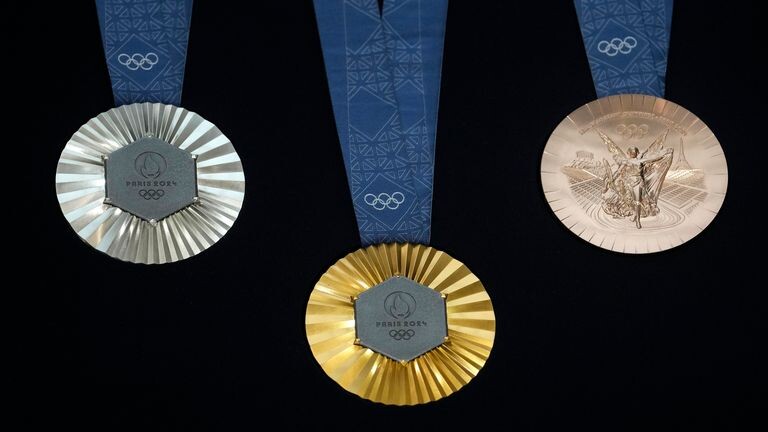
The reverse side of the medals will feature the Greek goddess Nike flying toward the historic Panathinaikos Stadium in Athens, a tradition since 2004. With the approval of the International Olympic Committee (IOC), Paris organizers modified the design to incorporate the Eiffel Tower in the background.
Beyond the medals, the Eiffel Tower will play a central role in the festivities at the Games. From the opening ceremony, where sports teams will sail down the River Seine, to the potential placement of the Olympic flame atop the tower, the iconic landmark will be a focal point throughout the Olympic and Paralympic Games, which run from July 26 to Aug. 11, and the Paralympics, from Aug. 28 to Sept. 8.
by Marley Dickinson
Login to leave a comment
Paris 2024 Olympic Games
For this historic event, the City of Light is thinking big! Visitors will be able to watch events at top sporting venues in Paris and the Paris region, as well as at emblematic monuments in the capital visited by several millions of tourists each year. The promise of exceptional moments to experience in an exceptional setting! A great way to...
more...Doping-approved games receive massive financial boost ahead of first-ever event in 2025
The doping-approved Enhance Games has received a huge financial boost from the co-founder of PayPal, Peter Thiel, and cryptocurrency investor Christian Angermayer among other billionaires.
Aron D’Souza, the man behind the doping-enthused Enhanced Games, has revealed he received millions of dollars in financial backing for his entrepreneurial idea a year and a half before his first planned Games in 2025.
As per the Canadian Running Magazine, D’Souza revealed that German-American billionaire and co-founder of PayPal, Peter Thiel, has invested a “single-digit million-dollar number” into the Enhanced Games.
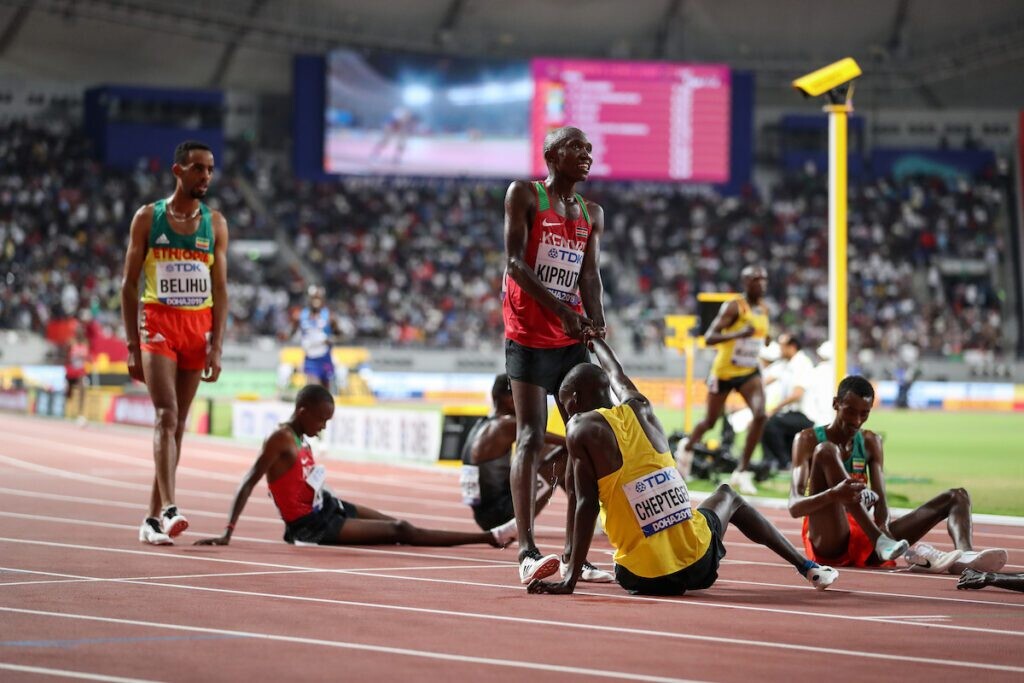
He disclosed that Thiel isn’t the only investor on board since cryptocurrency investor and billionaire Christian Angermayer and Balaji Srinivasan, former CTO of crypto exchange Coinbase, have also invested in his idea.
Meanwhile, D’Souza wants to provide an alternative to what organizers perceive as a ‘corrupt Olympics’ and he openly criticizes the International Olympic Committee (IOC) for its alleged exploitation of athletes, lack of payment of athletes, and rejection of “enhanced” world records.
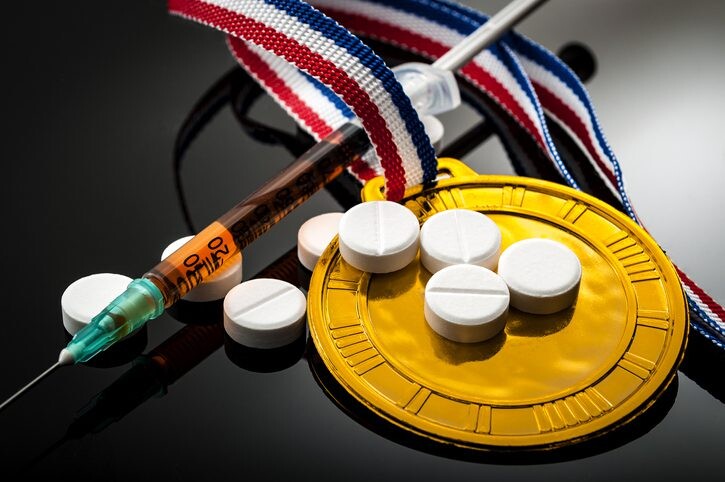
On their website, they openly speak about using science and focusing on core sports, aiming to break world records and ensure fair compensation for athletes.
They insist that performance-enhancing drugs, when used responsibly, can significantly enhance training outcomes and allow athletes to reach their full potential.
“The Olympic Games are this ancient model reinvented by a colonialist aristocrat in 1896 for the Victorian world.
“We need to design a modernized Games for social media [like TikTok and Instagram] and broadcast television for short attention spans,” he added.
The Enhanced Games will focus on a limited number of events that are of high interest, like track and field, and swimming.
“The core focus of the Games is breaking world records. We only want athletes who have the potential to break world records in sports that actually matter. And so by having a much narrower set (of events), we can deliver much more cost-effectively,” he said.
Speaking about the prize money, the Enhanced Games competitors will be paid a base rate for competing, with bonuses for winning events and setting world records.
“We anticipate there’ll be multi-million-dollar prize pools for breaking world records. We have to create real incentives for athletes to jump ship from this very established prestigious system,” he added.
by Abigael Wuafula
Login to leave a comment
Five exercises to amplify ankle strength and stability
Adding a few ankle exercises into your routine can help you stay strong and steady during the final tough miles of any long training run or race, whether you’re tackling roads or trails. You’ll also avoid getting sidelined by a strained ankle or repetitive stress injury.
A runner’s feet endure a continuous impact that, over time, can take a toll on the network of tendons and ligaments in the ankles. Toward the end of a long run or hard training session, fatigue and low glycogen levels cause your feet’s responsiveness of to changes in terrain to diminish, affecting the swift micro-movements crucial for maintaining balance. This decline in agility places an increasing burden on your ankles, subjecting them to prolonged stretching and strain.
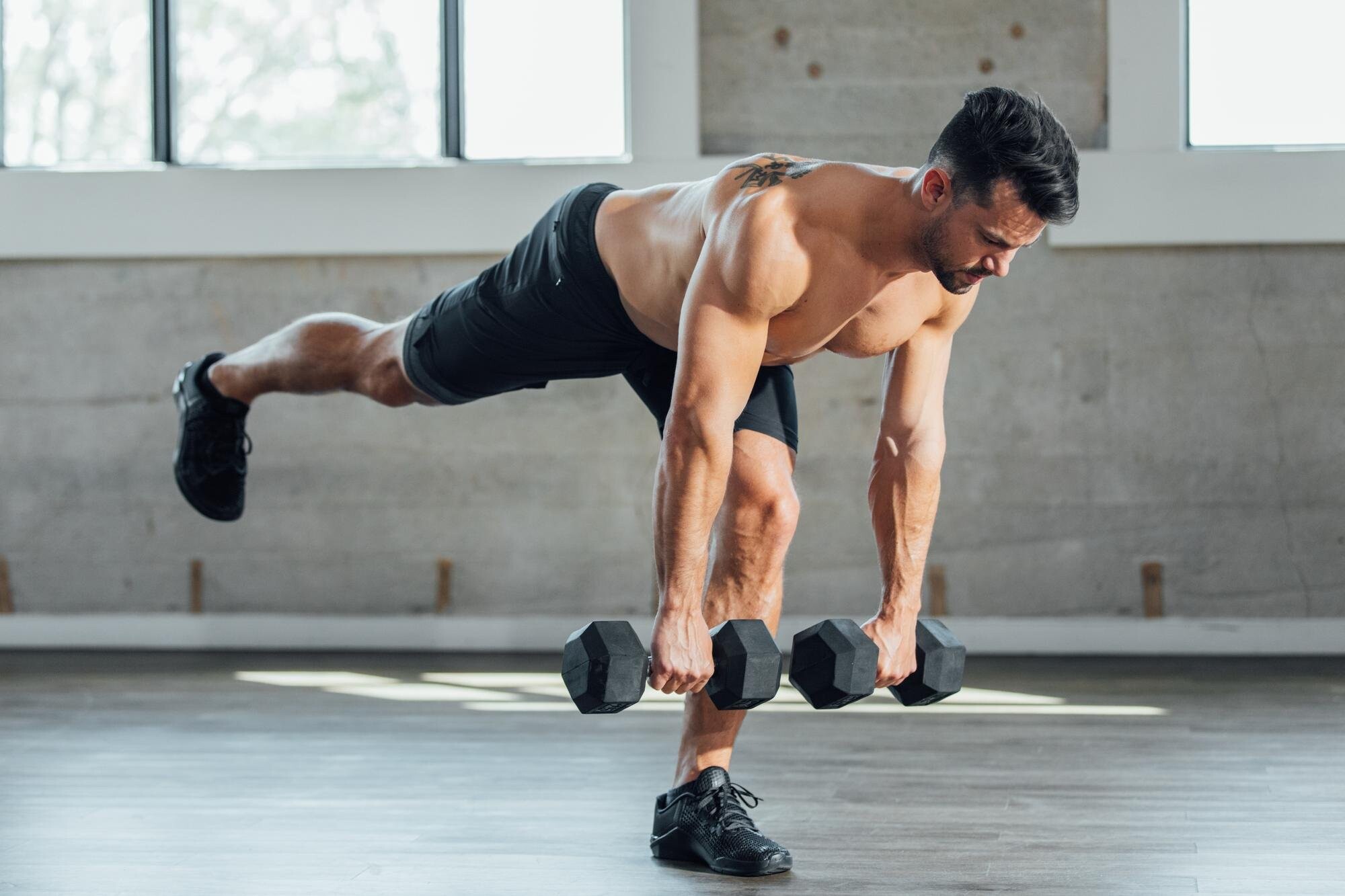
The result is not only discomfort, but disarray in your proprioceptive system—the internal compass that guides your body’s position and movement—causing soreness, slips and ankle rolls. These exercises not only fortify your ankles but also act as a safeguard against the pitfalls of a fatigued and under-prepared lower extremity.
1.- Hop and hold
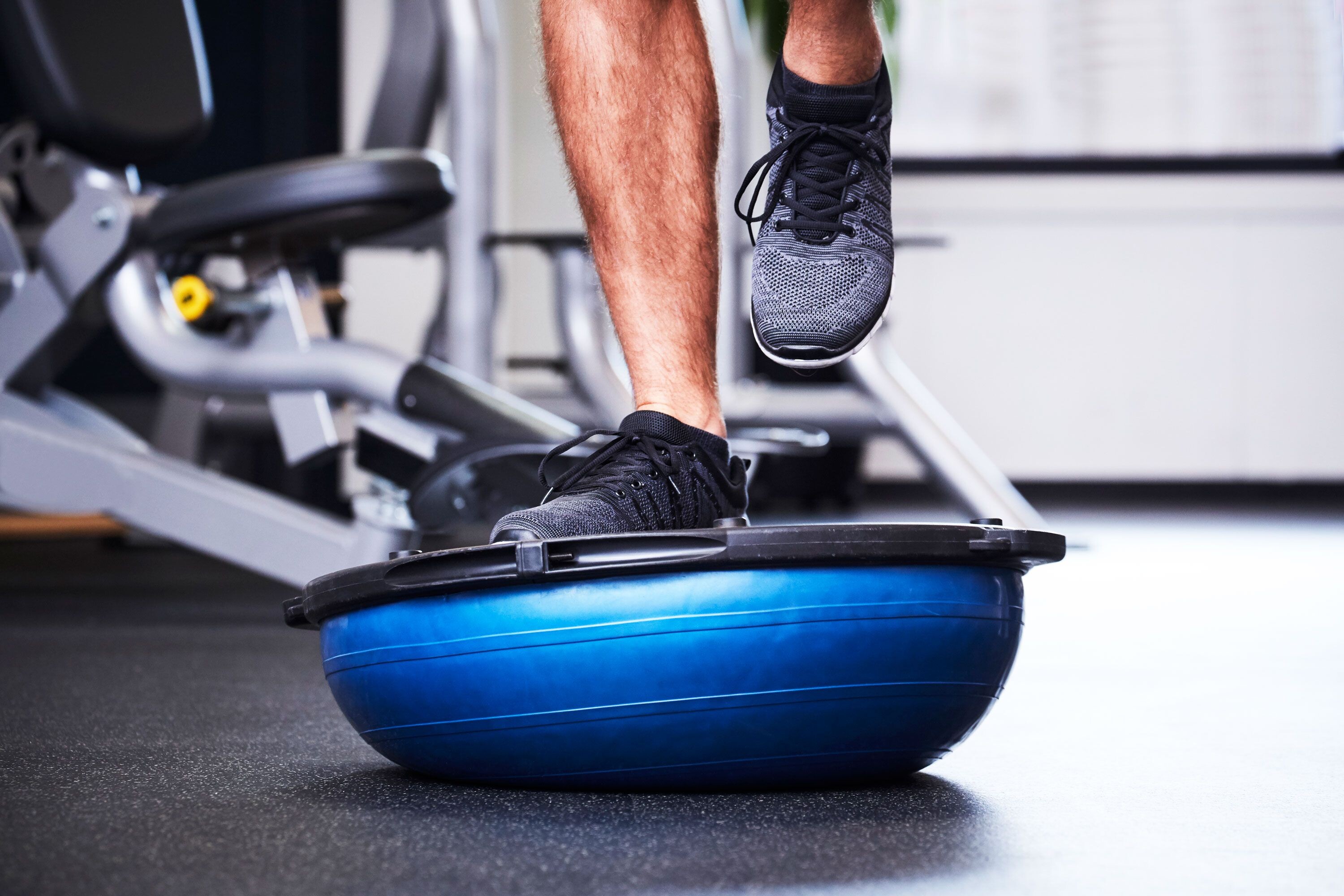
Stand with your feet hip-width apart, maintaining a straight and upright posture. Engage your core to ensure stability throughout the exercise.
Lift one foot slightly off the ground, balancing on the other.
With the grounded foot, perform a small, controlled hop. Focus on using the muscles around the ankle to control the movement. Upon landing, immediately shift your focus to holding the position. Balance on the foot that landed, ensuring that your ankle remains stable. Imagine rooting your foot into the ground.
Try to hold the position for 10-15 seconds, before switching to the other leg. Perform two to three sets of 10-15 reps on each foot, gradually increasing the duration of the hold as your ankle strength improves.
Modify this one if you find it challenging at first: you can hold onto a stable surface (like a chair or railing) for support until you build confidence and strength.
2.- Lateral shuffle
This exercise enhances ankle stability by engaging lateral movement and weight transfer.
Stand with feet hip-width apart, maintaining a slight bend in the knees.
Take a lateral step to one side, followed by the other foot. Move with controlled and deliberate steps.
Keep a low and athletic stance throughout the shuffle with your core engaged.
Try four x 10 steps to the left, then to the right.
3.- One-legged medicine ball toss
This exercise enhances ankle strength, stability and proprioception.
Stand on one leg with a slight bend in the knee for stability.
Hold a medicine ball with both hands, positioned in front of your chest.
While balancing on one leg, toss the medicine ball in the air and catch it. Focus on stability during the tossing and catching phases.
After completing a set, switch to the other leg. Try three sets of 10 tosses to start.
This exercise can be done with a cement wall, bouncing the ball gently off the wall with each toss and from both forward and sideways directions—it’s also a fun exercise to do with a partner.
4.- Eccentric calf raises
Try doing these on a step, lowering let your heels a few centimetres below the step with each one, to get a slightly deeper stretch.
Stand with feet hip-width apart and rise onto your tiptoes. Lower heels to a slow count to five.
Let your heels touch the ground, then immediately rise onto your toes again.
The key phase in this exercise is the eccentric one (the lowering part) when the tendon and muscles lengthen to control the downward path of your body.
5.- Single-leg Romanian deadlift
The single-leg Romanian deadlift targets multiple areas for runners—it not only strengthens the hamstrings and glutes but also enhances balance and stability, crucial for maintaining that strong foundation during tired miles.
Begin standing on one leg, with a slight bend in the knee. Hinge at your hips, pushing them backward while simultaneously lowering your upper body towards the ground. Keep your back straight and your chest lifted.
As you hinge forward, extend your non-standing leg straight behind you. Work to keep your extended leg, hip, and torso in a straight line, forming a “T” shape with your body.
Reach your hands towards the ground, going as low as your flexibility allows. Engage your hamstrings and glutes to return to the upright position, bring your extended leg back to the starting position, and repeat.
Aim for three sets of 10-12 repetitions on each leg.
These exercises collectively target ankle strength, stability and mobility, providing a comprehensive approach to help you maintain an unshakeable foundation. As with any exercise, start with a light load, or use your body weight and gradually increase as your strength and technique improve.
by Keeley Milne
Login to leave a comment
AIU ban James Karanja for four years
James Karanja, the athlete who competed and won a race during his provisional suspension, has been banned for four years by the AIU.
Kenyan long-distance runner James Karanja has been slapped with a four-year ban by the Athletics Integrity Unit for violating an anti-doping rule.
Karanja tested positive for the use of 9-norandrosterone, 19-noretiocholanolone, Nandrolone, and his results from September 10, 2023, have been disqualified.
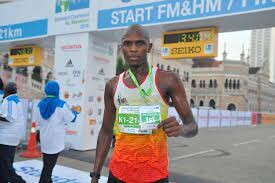
19-norandrosterone and 19-noretiocholanolone are Metabolites of 19-nortestosterone (Nandrolone) (and 19-norandrostenedione) which are Prohibited Substance under the WADA 2023 Prohibited List under the category S1.1 Anabolic Androgenic Steroids (AAS). They are non-specified substances prohibited at all times.
The AIU explained that the athlete failed to respond to any of their messages and therefore he will be banned for four years unless he reaches out and proves that the Anti-Doping Rule Violations were not intentional.
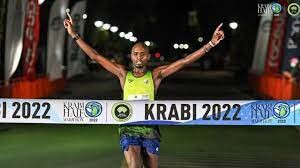
“The Athlete has not demonstrated that the Anti-Doping Rule Violations were not intentional. Therefore, the mandatory period of Ineligibility is a period of Ineligibility of four (4) years,” the AIU further noted.
Meanwhile, after being provisionally suspended last year, Karanja breached the AIU rules and went ahead to compete and win the Tropical Rainforest Run, a trail half-marathon in Tawau Hills, Malaysia.
The AIU makes it clear that during a provisional suspension, an athlete is not supposed to compete as they conduct their investigations.
According to the AIU, Karanja tested positive for the prohibited substance Norandrosterone during an in-competition test at the 2023 Kuching Marathon, where he finished fourth and was eligible for prize money.
by Abigael Wuafula
Login to leave a comment
The Pill That Over Half the Distance Medallists Used at the 2023 Worlds
What's the deal with sodium bicarbonate?What if there was a pill, new to the market this year, that was used by more than half of the distance medalists at the 2023 World Athletics Championships? A supplement so in-demand that there was a reported black market for it in Budapest, runners buying from other runners who did not advance past the preliminary round — even though the main ingredient can be found in any kitchen?
How did this pill become so popular? Well, there are rumors that Jakob Ingebrigtsen has been taking it for years — rumors that Ingebrigtsen’s camp and the manufacturers of the pill will neither confirm nor deny.
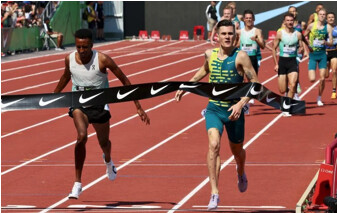
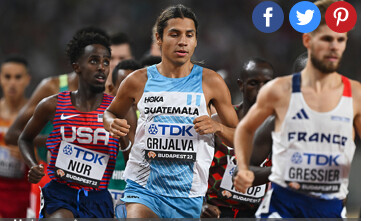
So about this pill…does it work? Does it actually boost athletic performance? Ask a sports scientist, someone who’s studied it for more than a decade, and they’ll tell you yes.
“There’s probably four or five legal, natural supplements, if you will, that seem to have withstood the test of time in terms of the research literature and [this pill] is one of those,” says Jason Siegler, Director of Human Performance in the College of Health Solutions at Arizona State University.
But there’s a drawback to this pill. It could…well, let’s allow Luis Grijalva, who used it before finishing 4th in the World Championship 5,000m final in Budapest, to explain.
“I heard stories if you do it wrong, you chew it, you kind of shit your brains out,” Grijalva says. “And I was a little bit scared.”
The research supports that, too.
“[Gastrointestinal distress] has by far and away been the biggest hurdle for this supplement,” Siegler says.Okay, enough with the faux intrigue. If you’ve read the subtitle of this article, you know the pill we are talking about is sodium bicarbonate. Specifically, the Maurten Bicarb System, which has been available to the public since February and which has been used by some of the top teams in endurance sports: cycling juggernaut Team Jumbo-Visma and, in running, the On Athletics Club and NN Running Team. (Maurten has sponsorship or partnership agreements with all three).Some of the planet’s fastest runners have used the Maurten Bicarb System in 2023, including 10,000m world champion Joshua Cheptegei, 800m silver medalist Keely Hodgkinson, and 800m silver medalist Emmanuel Wanyonyi. Faith Kipyegon used it before winning the gold medal in the 1500m final in Budapest — but did not use it before her win in the 5,000m final or before any of her world records in the 1500m, mile, and 5,000m.
Herman Reuterswärd, Maurten’s head of communications, declined to share a full client list with LetsRun but claims two-thirds of all medalists from the 800 through 10,000 meters (excluding the steeplechase) used the product at the 2023 Worlds.
After years of trial and error, Maurten believes it has solved the GI issue, but those who have used their product have reported other side effects. Neil Gourley used sodium bicarbonate before almost every race in 2023, and while he had a great season — British champion, personal bests in the 1500 and mile — his head ached after races in a way it never had before. When Joe Klecker tried it at The TEN in March, he felt nauseous and light-headed — but still ran a personal best of 27:07.57. In an episode of the Coffee Club podcast, Klecker’s OAC teammate George Beamish, who finished 5th at Worlds in the steeplechase and used the product in a few races this year, said he felt delusional, dehydrated, and spent after using it before a workout this summer.
“It was the worst I’d felt in a workout [all] year, easily,” Beamish said.
Not every athlete who has used the Maurten Bicarb System has felt side effects. But the sport as a whole is still figuring out what to do about sodium bicarbonate.
Many athletes — even those who don’t have sponsorship arrangements with Maurten — have added it to their routines. But Jumbo-Visma’s top cyclist, Jonas Vingegaard — winner of the last two Tours de France — does not use it. Neither does OAC’s top runner, Yared Nuguse, who tried it a few times in practice but did not use it before any of his four American record races in 2023.“I’m very low-maintenance and I think my body’s the same,” Nuguse says. “So when I tried to do that, it was kind of like, Whoa, what is this? My whole body felt weird and I was just like, I either did this wrong or this is not for me.”
How sodium bicarbonate works
The idea that sodium bicarbonate — aka baking soda, the same stuff that goes in muffins and keeps your refrigerator fresh — can boost athletic performance has been around for decades.
“When you’re exercising, when you’re contracting muscle at a really high intensity or a high rate, you end up using your anaerobic energy sources and those non-oxygen pathways,” says Siegler, who has been part of more than 15 studies on sodium bicarbonate use in sport. “And those pathways, some of the byproducts that they produce, one of them is a proton – a little hydrogen ion. And that proton can cause all sorts of problems in the muscle. You can equate that to that sort of burn that you feel going at high rates. That burn, most of that — not directly, but indirectly — is coming from the accumulation of these little hydrogen ions.”
As this is happening, the kidneys produce bicarbonate as a defense mechanism. For a while, bicarbonate acts as a buffer, countering the negative effects of the hydrogen ions. But eventually, the hydrogen ions win.The typical concentration of bicarbonate in most people hovers around 25 millimoles per liter. By taking sodium bicarbonate in the proper dosage before exercise, Siegler says, you can raise that level to around 30-32 millimoles per liter.
“You basically have a more solid first line of defense,” Siegler says. “The theory is you can go a little bit longer and tolerate the hydrogen ions coming out of the cell a little bit longer before they cause any sort of disruption.”
Like creatine and caffeine, Siegler says the scientific literature is clear when it comes to sodium bicarbonate: it boosts performance, specifically during events that involve short bursts of anaerobic activity. But there’s a catch.
***
Bicarb without the cramping
Sodium bicarbonate has never been hard to find. Anyone can swallow a spoonful or two of baking soda with some water, though it’s not the most appetizing pre-workout snack. The problem comes when the stomach tries to absorb a large amount of sodium bicarbonate at once.
“You have a huge charged load in your stomach that the acidity in your stomach has to deal with and you have a big shift in the partial pressure of carbon dioxide across the gut,” Siegler says. “And that’s what gives you the cramping.”
A few years ago, Maurten was trying to solve a similar problem for marathoners trying to ingest large amounts of carbohydrates during races. The result was their carbohydrate drink, which relies on something called a hydrogel to form in the stomach. The hydrogel resists the acidity of the stomach and allows the carbohydrates to be absorbed in the intestine instead, where there is less cramping.
“We thought, okay, we are able to solve that one,” Reuterswärd says. “Could we apply the hydrogel technology to something else that is really risky to consume that could be beneficial?”
For almost four years, Maurten researched the effects of encapsulating sodium bicarbonate in hydrogels in its Swedish lab, conducting tests on middle-distance runners in Gothenburg. Hydrogels seemed to minimize the risk, but the best results came when hydrogels were paired with microtablets of sodium bicarbonate.
The result was the Maurten Bicarb System — “system,” because the process for ingesting it involves a few steps. Each box contains three components: a packet of hydrogel powder, a packet of tiny sodium bicarbonate tablets, and a mixing bowl. Mix the powder with water, let it stand for a few minutes, and sprinkle in the bicarb.The resulting mixture is a bit odd. It’s gooey. It’s gray. It doesn’t really taste like anything. It’s not quite liquid, not quite solid — a yogurt-like substance flooded with tiny tablets that you eat with a spoon but swallow like a drink.
The “swallow” part is important. Chew the tablets and the sodium bicarbonate will be absorbed before the hydrogels can do their job. Which means a trip to the toilet may not be far behind.
When Maurten launched its Bicarb System to the public in February 2023, it did not have high expectations for sales in year one.
“It’s a niche product,” Reuterswärd says. “From what we know right now, it maybe doesn’t make too much sense if you’re an amateur, if you’re just doing 5k parkruns.”
But in March, Maurten’s product began making headlines in cycling when it emerged that it was being used by Team Jumbo-Visma, including by stars Wout van Aert and Primož Roglič. Sales exploded. Because bicarb dosage varies with bodyweight, Maurten’s system come in four “sizes.” And one size was selling particularly well.
“If you’re an endurance athlete, you’re around 60-70 kg (132-154 lbs),” Reuterswärd says. “We had a shortage with the size that corresponded with that weight…The first couple weeks, it was basically only professional cyclists buying all the time, massive amounts. And now we’re seeing a similar development in track & field.”
If there was a “Jumbo-Visma” effect in cycling, then this summer there was a “Jakob Ingebrigtsen” effect in running.To be clear: there is no official confirmation that Ingebrigtsen uses sodium bicarbonate. His agent, Daniel Wessfeldt, did not respond to multiple emails for this story. When I ask Reuterswärd if Ingebrigtsen has used Maurten’s product, he grows uncomfortable.
“I would love to be very clear here but I will have to get back to you,” Reuterswärd says (ultimately, he was not able to provide further clarification).
But when Maurten pitches coaches and athletes on its product, they have used data from the past two years on a “really good” 1500 guy to tout its effectiveness, displaying the lactate levels the athlete was able to achieve in practice with and without the use of the Maurten Bicarb System. That athlete is widely believed to be Ingebrigtsen. Just as Ingebrigtsen’s success with double threshold has spawned imitators across the globe, so too has his rumored use of sodium bicarbonate.
Grijalva says he started experimenting with sodium bicarbonate “because everybody’s doing it.” And everybody’s doing it because of Ingebrigtsen.
“[Ingebrigtsen] was probably ahead of everybody at the time,” Grijalva said. “Same with his training and same with the bicarb.”
OAC coach Dathan Ritzenhein took sodium bicarbonate once before a workout early in his own professional career, and still has bad memories of swallowing enormous capsules that made him feel sick. Still, he was willing to give it a try with his athletes this year after Maurten explained the steps they had taken to reduce GI distress.
“Certainly listening to the potential for less side effects was the reason we considered trying it,” says Ritzenhein. “I don’t know who is a diehard user and thinks that it’s really helpful, but around the circuit I know a lot of people that have said they’ve [tried] it.”
Coach/agent Stephen Haas says a number of his athletes, including Gourley, 3:56 1500 woman Katie Snowden, and Worlds steeple qualifier Isaac Updike, tried bicarb this year. In the men’s 1500, Haas adds, “most of the top guys are already using it.”
Yet 1500-meter world champion Josh Kerr was not among them. Kerr’s nutritionist mentioned the idea of sodium bicarbonate to him this summer but Kerr chose to table any discussions until after the season. He says he did not like the idea of trying it as a “quick fix” in the middle of the year.
“I review everything at the end of the season and see where I could get better,” Kerr writes in a text to LetsRun. “As long as the supplement is above board, got all the stamps of approvals needed from WADA and the research is there, I have nothing against it but I don’t like changing things midseason.”
***
So does it actually work?
Siegler is convinced sodium bicarbonate can benefit athletic performance if the GI issues can be solved. Originally, those benefits seemed confined to shorter events in the 2-to 5-minute range where an athlete is pushing anaerobic capacity. Buffering protons does no good to short sprinters, who use a different energy system during races.
“A 100-meter runner is going to use a system that’s referred to the phosphagen or creatine phosphate system, this immediate energy source,” Siegler says. “…It’s not the same sort of biochemical reaction that eventuates into this big proton or big acidic load. It’s too quick.”
But, Siegler says, sodium bicarbonate could potentially help athletes in longer events — perhaps a hilly marathon.
“When there’s short bursts of high-intensity activity, like a breakaway or a hill climb, what we do know now is when you take sodium bicarbonate…it will sit in your system for a number of hours,” Siegler says. “So it’s there [if] you need it, that’s kind of the premise behind it basically. If you don’t use it, it’s fine, it’s not detrimental. Eventually your kidneys clear it out.”Even Reuterswärd admits that it’s still unclear how much sodium bicarbonate helps in a marathon — “honestly, no one knows” — but it is starting to be used there as well. Kenya’s Kelvin Kiptum used it when he set the world record of 2:00:35at last month’s Chicago Marathon; American Molly Seidel also used it in Chicago, where she ran a personal best of 2:23:07.
Siegler says it is encouraging that Maurten has tried to solve the GI problem and that any success they experience could spur other companies to research an even more effective delivery system (currently the main alternative is Amp Human’s PR Lotion, a sodium bicarbonate cream that is rubbed into the skin). But he is waiting for more data before rendering a final verdict on the Maurten Bicarb System.
“I haven’t seen any peer-reviewed papers yet come out so a bit I’m hesitant to be definitive about it,” Siegler said.
Trent Stellingwerff, an exercise physiologist and running coach at the Canadian Sport Institute – Pacific, worked with Siegler on a 2020 paper studying the effect of sodium bicarbonate on elite rowers. A number of athletes have asked him about the the Maurten Bicarb System, and some of his marathoners have used the product. Like Siegler, he wants to see more data before reaching a conclusion.
“I always follow the evidence and science, and to my knowledge, as of yet, I’m unaware of any publications using the Maurten bicarb in a double-blind, placebo-controlled clinical trial,” Stellingwerff writes in a text to LetsRun. “So without any published data on the bicarb version, I can’t really say it does much.”
The closest thing out there right now is a British study conducted by Lewis Goughof Birmingham City University and Andy Sparks of Edge Hill University. In a test of 10 well-trained cyclists, Gough and Sparks found the Maurten Bicarb System limited GI distress and had the potential to improve exercise performance. Reuterswärd says the study, which was funded by Maurten, is currently in the review process while Gough and Sparks suggested further research to investigate their findings.
What about the runners who used sodium bicarbonate in 2023?
Klecker decided to give bicarb a shot after Maurten made a presentation to the OAC team in Boulder earlier this year. He has run well using bicarb (his 10,000 pb at The TEN) and without it (his 5,000 pb in January) and as Klecker heads into an Olympic year, he is still deciding whether the supposed benefits are worth the drawbacks, which for him include nausea and thirst. He also says that when he has taken the bicarb, his muscles feel a bit more numb than usual, which has made it more challenging for him to gauge his effort in races.
“There’s been no, Oh man I felt just so amazing today because of this bicarb,” Klecker says. “If anything, it’s been like, Oh I didn’t take it and I felt a bit more like myself.”
Klecker also notes that his wife and OAC teammate, Sage Hurta-Klecker, ran her 800m season’s best of 1:58.09 at the Silesia Diamond League on July 16 — the first race of the season in which she did not use bicarb beforehand.
A number of athletes in Mike Smith‘s Flagstaff-based training group also used bicarb this year, including Grijalva and US 5,000 champion Abdihamid Nur. Grijalva did not use bicarb in his outdoor season opener in Florence on June 2, when he ran his personal best of 12:52.97 to finish 3rd. He did use it before the Zurich Diamond League on August 31, when he ran 12:55.88 to finish 4th.“I want to say it helps, but at the same time, I don’t want to rely on it,” Grijalva says.
Almost every OAC athlete tried sodium bicarbonate at some point in 2023. Ritzenhein says the results were mixed. Some of his runners have run well while using it, but the team’s top performer, Nuguse, never used it in a race. Ritzenhein wants to continue testing sodium bicarbonate with his athletes to determine how each of them responds individually and whether it’s worth using moving forward.
That group includes Alicia Monson, who experimented with bicarb in 2023 but did not use it before her American records at 5,000 and 10,000 meters or her 5th-place finish in the 10,000 at Worlds.
“It’s not the thing that’s going to make or break an athlete,” Ritzenhein says. “…It’s a legal supplement that has the potential, at least, to help but it doesn’t seem to be universal. So I think there’s a lot more research that needs to be done into it and who benefits from it.”
The kind of research scientists like Stellingwerff want to see — double-blind, controlled clinical trials — could take a while to trickle in. But now that anyone can order Maurten’s product (it’s not cheap — $65 for four servings), athletes will get to decide for themselves whether sodium bicarbonate is worth pursuing.
“The athlete community, obviously if they feel there’s any sort of risk, they’re weighing up the risk-to-benefit ratio,” Siegler said. “The return has got to be good.”
Grijalva expects sodium bicarbonate will become part of his pre-race routine next year, along with a shower and a cup of coffee. Coffee, and the caffeine contained wherein, may offer a glimpse at the future of bicarb. Caffeine has been widely used by athletes for longer than sodium bicarbonate, and the verdict is in on that one: it works. Yet plenty of the greats choose not to use it.
Nuguse is among them. He does not drink coffee — a fact he is constantly reminded of by Ritzenhein.
“I make jokes almost every day about it,” Ritzenhein says. “His family is Ethiopian – coffee tradition and ceremony is really important to them.”
Ritzenhein says he would love it if Nuguse drank a cup of coffee sometime, but he’s not going to force it on him. Some athletes, Ritzenhein says, have a tendency to become neurotic about these sorts of things. That’s how Ritzenhein was as an athlete. It’s certainly how Ritzenhein’s former coach at the Nike Oregon Project, Alberto Salazar, was — an approach that ultimately earned Salazar a four-year ban from USADA.
Ritzenhein says he has no worries when it comes to any of his athletes using sodium bicarbonate — Maurten’s product is batch-tested and unlike L-carnitine, there is no specific protocol that must be adhered to in order for athletes to use it legally under the WADA Code. Still, there is something to be said for keeping things simple.
“Yared knows how his body feels,” Ritzenhein says. “…He literally rolls out of practice and comes to practice like a high schooler with a Eggo waffle in hand. Probably more athletes could use that kind of [approach].”
Talk about this article on our world-famous fan forum / messageboard.
by Let’s Run
Login to leave a comment
Sebastian Coe says Russia, Belarus still banned, but situation could change
Athletes from Russia and Belarus are still banned from athletics events at the 2024 Paris Olympic Games, but World Athletics president Sebastian Coe said on Monday that the situation could change, and that a working group is monitoring it.
Earlier this month, the International Olympic Committee (IOC) approved the participation of Individual Neutral Athletes (AINs) at next year’s Olympics.

Athletes holding a Russian or Belarusian passport who have secured their places through existing qualification systems on the field of play will be deemed eligible to compete at Paris 2024, following specific conditions.
World Athletics, however, decided to stick to the blanket ban despite the IOC’s decision.
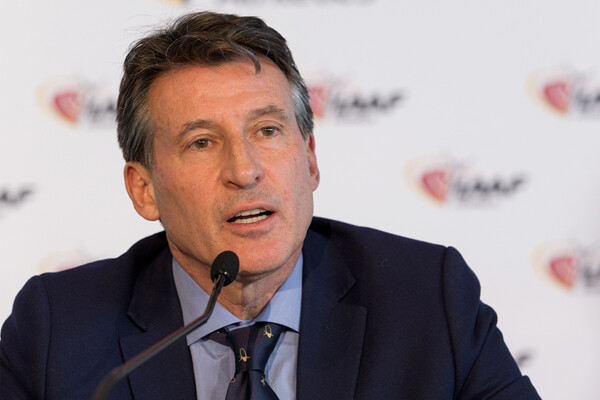
Athletes from both countries have faced a multitude of sanctions from international competitions since the conflict in Ukraine began in February 2022.
During a media call with agencies including Xinhua on Monday, Coe confirmed “there is no change [to the ban]”, but expressed hope that the sanctions could be lifted.
“The most important thing is that the autonomy and independence of international federations to make these judgements is really important. We made a judgement which we believe was in the best interest of our sport,” he said.
“Do I see anything changing in the foreseeable future? I don’t know. The world changes every five minutes, the situation could change. We do have a working group that is monitoring the situation within the sport, and it will advise and guide the Council on what circumstances might need to exist for any exclusion to be lifted,” Coe added.
Coe also expressed his confidence in the competitiveness of the athletics competitions in Paris, following a “stupendous” season that has seen 23 world records and nine world U20 records broken in 2023.
“The one word I would use [to sum up the 2023 season] is stupendous,” he said. “I can’t remember a season that has delivered more high quality performances across a broader bandwidth of disciplines.”
“Everywhere you look, you have the potential for some extraordinary head-to-heads in the sport, in pretty much every discipline,” added Coe.
Login to leave a comment
Paris 2024 Olympic Games
For this historic event, the City of Light is thinking big! Visitors will be able to watch events at top sporting venues in Paris and the Paris region, as well as at emblematic monuments in the capital visited by several millions of tourists each year. The promise of exceptional moments to experience in an exceptional setting! A great way to...
more...The Mysterious Case of the Asthmatic Olympians
You won’t freeze your lungs exercising outdoors this winter, but there are reasons to be cautious about inhaling extremely cold air
When an athlete reaches the podium despite a prior medical event—a cancer diagnosis, say, or a car accident—we consider it a triumph of the human spirit. When a bunch of athletes do so, and all of them have suffered the same setback, we can be forgiven for wondering what’s going on. According to the International Olympic Committee, roughly one in five competitive athletes suffers from exercise-induced bronchoconstriction, or EIB, an asthma-like narrowing of the airways triggered by strenuous exercise. The numbers are even higher in endurance and winter sports. Puzzlingly, studies have found that athletes with EIB who somehow make it to the Olympics are more likely to medal. What’s so great about wheezing, chest tightness, and breathlessness?
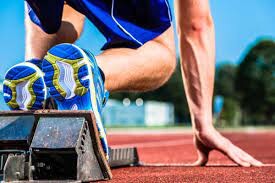
The answer isn’t what you’re thinking. Sure, it’s possible that some athletes get a boost because an EIB diagnosis allows them to use otherwise-banned asthma medications. But there’s a simpler explanation: breathing high volumes of cold or polluted air dries out the airways, leading to an overzealous immune response and potential long-term damage. “It’s well established that high training loads and ventilatory work increase the degree of airway hyper-responsiveness and hence development of asthma and EIB,” explains Morten Hostrup, a sports scientist at the University of Copenhagen and lead author of a new review on EIB in the Scandinavian Journal of Medicine and Science in Sports. In other words, the athletes who train hard enough to podium are more likely to develop EIB as a result.
That trade-off might be worthwhile if it means competing at the Olympics. For those of us who simply enjoy spending our winter days vigorously exploring the outdoors, the risk of EIB remains mostly unknown territory. Activities with the highest risk involve sustained efforts of at least five minutes, particularly if they take place in cold or polluted air. Cold air doesn’t hold much moisture, so it dries the airways. This affects skiers, runners, and triathletes, among others. Indoor environments like pools and ice rinks are also a problem, because of the chloramines produced by pool water and exhaust from Zambonis. As a result, swimmers, ice skaters, and hockey players are also at elevated risk of EIB. Over time, repeated attacks can damage the cells that line the airways.
Unfortunately, many athletes develop symptoms of EIB without realizing the underlying problem. After all, the feeling that you can’t catch your breath is pretty much written into the job description of most endurance activities. But starting in the 1990s, sports scientists began to suspect that top athletes had more breathing problems than would be expected. Before the 1998 Winter Games, U.S. Olympic Committee physiologists examined Nagano-bound athletes to see whose airways showed abnormal constriction in response to arduous exercise. Almost a quarter of the athletes tested positive, including half the cross-country ski team.
One reason EIB often flies under the radar is that the usual diagnostic workups aren’t challenging enough to provoke an attack in conditioned athletes. Among the accusations against disgraced coach Alberto Salazar was that he showed athletes how to fool EIB tests to get permission to use asthma meds. “He had a specific protocol,” star 5,000-meter runner Lauren Fleshman told ProPublica in 2015. “You would go to the local track and run around the track, work yourself up to having an asthma attack, and then run down the street, up 12 flights of stairs to the office and they would be waiting to test you.” Salazar certainly gave some shady advice, including encouraging Fleshman to push for the highest possible dosage of medication. But his tips for gaming the asthma test were similar to what USOC physiologists advocate, and an IOC consensus statement published last spring also concluded that more intense exercise challenges are better for diagnosing EIB in conditioned athletes. If you’re really fit, in other words, the rinky-dink treadmill in the doctor’s office isn’t going to push you hard enough.
If you do get an EIB diagnosis, your doctor can prescribe asthma medication, including inhaled corticosteroids like fluticasone and airway dilators like salbutamol. If you’re an elite athlete subject to drug testing, you’ll need to tread carefully, since some of those medications are either banned or restricted to a maximum dosage. Hostrup and his colleagues note that there’s also evidence that fish oils high in omega-3 fatty acids, vitamin C, and even caffeine might help reduce EIB symptoms. And on the non-pharmaceutical side, you can minimize the chance of an attack by doing a thorough warm-up of 20 to 30 minutes, including six to eight 30-second sprints. This can temporarily deplete the inflammatory cells that would otherwise trigger an airway-narrowing attack.
The best outcome of all, of course, is to avoid developing the problem in the first place. In 2008, I interviewed a Canadian military scientist named Michel Ducharme, who told me stories of cross-country skiers swallowing Vaseline in an attempt to protect their airways from the cold. This is a terrible idea on many levels—and, he assured me, totally unnecessary. Air warms up very quickly when you inhale it, so there’s no risk of freezing your throat tissue. But dryness is another question, and scientists have reconsidered whether some kind of protection—just not Vaseline—could be useful if you’re going hard on cold days.
One option is a heat-and-moisture-exchange mask, which warms and moistens the air you inhale. A company called AirTrim makes them with a range of levels of resistance for training or racing. Several studies have found that this type of mask seems to reduce EIB attacks. Research by Michael Kennedy at the University of Alberta found that EIB risk increases significantly when temperatures drop below about five degrees Fahrenheit. The precise threshold depends on conditions and individual susceptibility, so if you start coughing or wheezing, that’s a sign your airways are irritated. If you don’t have a breathing mask, a scarf or a Buff over your mouth can offer a temporary solution.
Don’t take all this as a warning against getting outdoors in the winter. I live in Canada, so staying inside when it’s below five degrees Fahrenheit would be a death sentence. But I’m no longer as macho about the cold as I used to be. I wear puffy mittens and merino base layers, and when my snot starts to freeze I cover my mouth and nose. Athletes with EIB may do better than their unimpaired peers at the Olympics, but that’s one edge I can do without.
by Outside Online
Login to leave a comment
AIU has announced the provisional suspension of long-distance runner Hosea Kimeli Kisorio
The Athletics Integrity Unit has provisionally suspended the 2022 Braconi Terni Half Marathon champion Hosea Kimeli Kisorio.
AIU explained that the Kenyan has been slapped with the suspension due to the Presence/Use of a Prohibited Substance (EPO). Kisorio has now been issued with a notice of allegation.
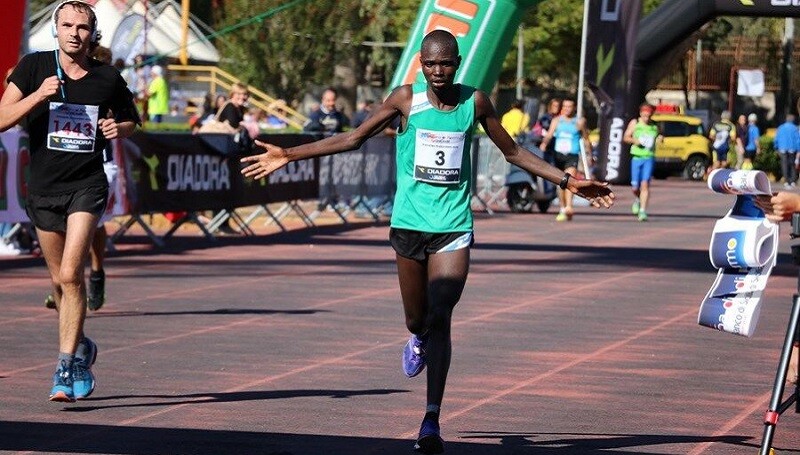
Posting on their X (Twitter) handle, AIU said: “The AIU has provisionally suspended Hosea Kimeli Kisorio (Kenya) for the Presence/Use of a Prohibited Substance (EPO).”
Kisorio has enjoyed a 2023 season but all that might just come crashing down if he is found guilty. He reigned supreme at the Zagreb Marathon before also dominating the Maratona di Ravenna Citta' D'Arte, a month later.
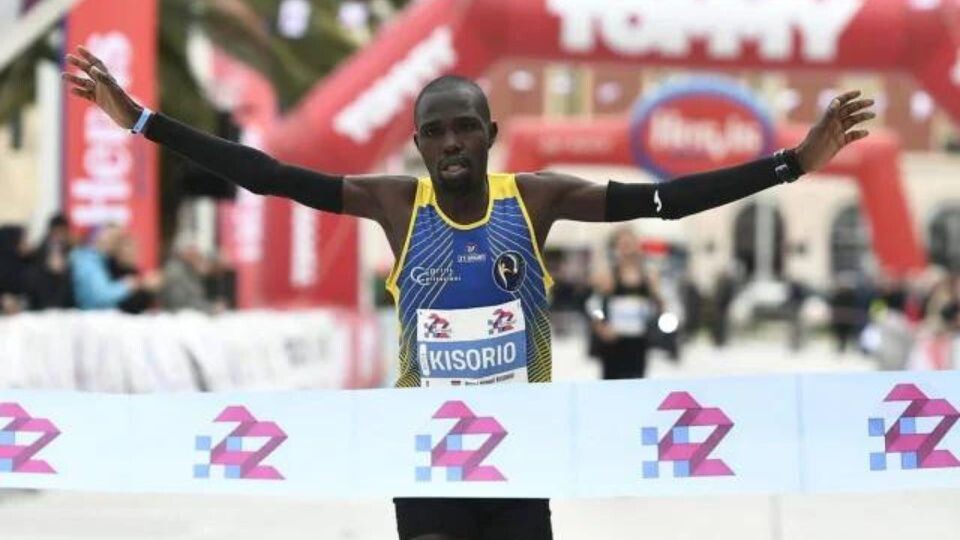
Last season, he also basked in glory, he won two of the four half-marathons he competed in. He won the Braconi Terni Half Marathon and Split Half Marathon. He went ahead to finish second at the Placentia Half Marathon before placing 18th at the Maratonina Citta' di Arezzo.
The 33-year-old was also in action at the 2022 Neapolis Marathon in Italy where he defied all odds to clinch the top prize.
The AIU also announced the suspension of Beatrice Toroitich for the Presence/Use of a Prohibited Substance (19-Norandrosterone, 19-Noretiocholanolone, Clomifene, Canrenone).
Meanwhile, according to AIU, a Provisional Suspension is when an Athlete or other Person is suspended temporarily from participating in any competition or activity in Athletics prior to a final decision at a hearing conducted under the World Athletics Anti-Doping Rules or the Integrity Code of Conduct.
by Abigael Wuafula
Login to leave a comment
Three exercises for unshakeable knee strength
While most runners know that running won’t damage their knees (and are probably sick of non-runners telling them that it does), many athletes still experience some knee soreness, often when returning to running after some time away. Knee pain usually isn’t long-lasting, and can be caused by a variety of things, including ramping up mileage too quickly or biomechanical issues. Try these simple leg strengtheners to eradicate achy knees and prevent overuse injuries.
1.- Straight leg raises
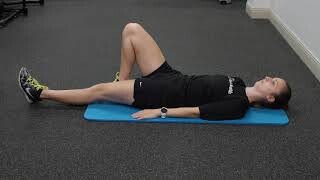
This strengthens the quads, helping to stabilize the knee joint and reduce the stress on the knee. Strong quads will better support and protect the knee during running.
Lie on your back with one leg straight and the other bent at a 90-degree angle.
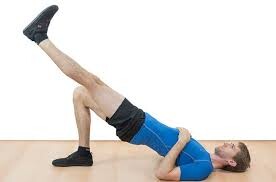
Tighten your quads (front thigh muscles) on the straight leg and lift your leg to about 45 degrees, keeping your toes pointed up. Lower your leg back down and repeat. Aim for 10 leg raises on each side to start, but add or decrease repetitions.
2.- Lunges
Lunges target the quads, hamstrings and glutes and help with balance and stability. They help strengthen the knee joint and improve coordination, valuable for injury prevention and navigation in the challenging terrain of winter.
Stand with your feet hip-width apart.
Take a step forward with one leg and lower your body until both knees are at a 90-degree angle, hovering the back knee just above the ground.
Push off the front foot to return to the starting position and repeat with the other leg. Aim for five to 10 repeats to start. You can build resistance by adding sets, or by holding weights once you become comfortable.
3.- Single-leg mini squat
This exercise mimics the motions of running, engaging all the major muscle groups involved in running to build strength and stability. It also challenges balance and build proprioception, helping to improve overall stability and reduce the risk of injuries.
Begin by standing on one leg with your knee slightly bent. Keep your chest up, shoulders back and core engaged for balance.
Slowly lower your body by bending the knee of the leg you’re standing on, imagining that you’re sitting back in a chair. Keep your back straight, and go as low as you can (doesn’t need to be far!) while maintaining control.
Hold for a few seconds to challenge your balance and stability, and then push through the heel of the standing leg to return to the starting position. Try five-10 reps on each side to start.
by Keeley Milne
Login to leave a comment
Does Acupuncture Help With Sports Injuries? Experts Weigh In.
More athletes are turning to the ancient tradition for relief from pain. But does it actually work?
When your lower back or glutes flare up painfully after going too hard trail running over the weekend, your default instinct might be to add some extra stretching to your routine or schedule some time with your massage therapist or chiropractor. If the pain is excruciating, you might even consult with a sports medicine doctor.

But there’s another accessible and effective treatment option for aches and pains. One that has only limited side effects and that’s been practiced for thousands of years.
It’s acupuncture. And although the mechanisms through which acupuncture works in the body aren’t fully understood, and there may be a placebo effect in play, research repeatedly indicates that acupuncture is effective at treating various forms of pain, including those related to myofascia, the back, and osteoarthritis.
Here’s what you need to know about acupuncture’s potential role in treating sports injuries.
Acupuncture is a practice in Traditional Chinese Medicine (TCM) that involves inserting small, thin needles through the skin and often into the superficial layers of the muscle to relieve pain and address health conditions like menstrual cramps, migraines, and arthritis. The points where needles are inserted are pathways, each corresponding to a particular organ or system, along which energy, or qi, is believed to travel. According to TCM, the needle helps unblock meridians.
From a Western medicine perspective, it’s believed that the needles stimulate the body’s muscles, connective tissue, and central nervous system, which can help with recovery from illnesses and pain. “Basically, what we’re doing with acupuncture is we’re using your body’s inherent means of healing itself,” says David Mann, DO, who is a primary care and sports medicine physician and licensed acupuncturist at Houston Methodist.
Sports medicine acupuncturists specifically treat sports injuries using the same foundations of TCM, but also incorporate functional anatomy, muscle testing, and range of motion testing. “Using this approach, I can precisely identify complex injuries and their sources, especially when checking for posture issues during various movements,” explains sports medicine acupuncturist Kevin Menard.
Hilary Patzer, a doctor of Chinese Medicine and licensed acupuncturist who works with the Minnesota Vikings, believes combining TCM and sports medicine really helps nudge the body along on the path to healing. “The body wants to be in harmony, it wants to be balanced, it wants to be functional,” she says. “But sometimes it has to be told what to do because it’s gotten out of alignment.”
Acupuncture is used to treat all sorts of sports injuries, including joint problems, muscle sprains and strains, tight muscles and trigger points, lower back pain, cervical and lumbar herniations, and many other conditions. “It’s just so incredibly helpful because we can treat the whole body effectively in that one treatment,” Patzer says. “Those needles are like little magic wands.”
This broad approach means that when treating something like a quadriceps strain, an acupuncturist will also assess and potentially address other muscles around that injury that may be compromised or compensating. “If you don’t treat anything around [the injury], they’re going to continue to have that quad injury and it’s not going to heal nearly as fast as if you treat upstream and downstream as well,” Patzer explains.
Here are a few ways that acupuncture can be useful when treating sports injuries, according to the experts:
Acupuncture is frequently used to reduce various types of pain and is increasingly recognized as a non-drug alternative to painkillers. One reason for acupuncture’s pain relieving effect is that it’s known to release endorphins, which can help decrease pain and lift your mood. “By boosting the production of endorphins, acupuncture directly counters pain, a primary concern with sports-related injuries,” Menard says.
Acupuncturists commonly use the practice to reduce inflammation following injuries. Menard explains that acupuncture improves blood circulation to targeted muscles, fascia, tendons, and ligaments, which helps reduce swelling and repair injured tissues.
A recent study published in the journal Nature found that acupuncture can trigger an anti-inflammatory response and suppress inflammation through the involvement of a nerve pathway between the vagus nerve and the adrenals called the vagal-adrenal axis. Other studies show similar findings, with acupuncture reducing or controlling inflammation by stimulating various pathways that connect the nervous and immune systems, both of which are known to play a role in the body’s inflammatory response. It’s important to note that these studies were conducted on mice, which isn’t always an exact predictor of human response.
Another study found that acupuncture may reduce inflammation by stimulating the vagus nerve, which is part of the parasympathetic nervous system and plays a large role in the body’s stress response.
Acupuncture can enhance proprioception—meaning the body’s sense of its position and movement—by addressing trigger points and knots in the muscle tissue, Menard says. For athletes, proprioception is really important because it plays a role in balance, coordinating movements, and adjusting muscle activity. When proprioception is low, sports injuries may be more likely to occur
“These knots, if untreated, can hinder muscles and their counterparts from functioning correctly, leading to imbalances and further complications,” Menard explains. “Acupuncture’s ability to identify and treat these points can provide immediate relief, helping athletes regain their proper form and function.”
Patzer compares muscle functioning to a slinky—when a muscle is functioning properly it opens and closes like a spring, and that’s a good thing. But if it’s pulled too long or locked up too tight, it may not perform at its best. Left untreated, this can sometimes lead to problems with nearby muscles, tendons, and joints. “With acupuncture, I’m able to help the muscle get that kind of proper movement and function back,” Patzer says.
Many acupuncturists may be able to help someone with a sports injury, but if you’re an athlete and experiencing pain, Patzer says it’s best to see someone who specializes or is certified in sports medicine acupuncture. If you have an X-ray or MRI results, bring a copy to your appointment to help inform treatment. “It’s essential to accurately diagnose each condition to tailor the most effective acupuncture treatment to the patient’s specific needs,” Menard says.
Keep in mind that acupuncture likely isn’t going to be a one-stop cure for any sports injury that arises, and it’s often most effective when used in conjunction with other types of treatment. Acupuncturists will even refer patients to other care facilities or professionals, like hospitals, chiropractors, physical therapists, and massage therapists. “We work in tandem, ensuring every patient gets the holistic care they need,”Menard says.
by Outside Online
Login to leave a comment
Annie Rodenfels Wins Boston 10k For Women
The 47th running of the Boston 10K for Women, presented by REI, returned to the Boston Common and the streets of Boston and Cambridge on Saturday.
Over 4,000 women participated in the autumn classic, which began at 8:50 a.m. for handcycle and wheelchair participants and at 9 a.m. for all runners.
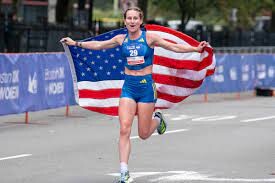
Formerly known as the Tufts Health Plan 10K for Women, the race is New England's largest all-women's sporting event.
The 6.2-mile course brings runs through Boston’s Back Bay and into Cambridge and finishes on Charles Street between the Public Garden and Boston Common.

This year's race was won by Annie Rodenfels, who broke the tape in her 10K debut in a time of 32:08. She was followed by Emily Venters with a time of 32:31 and Jenny Simpson at 32:39.
A Boston resident, Rodenfels surged on the Massachusetts Avenue bridge and ran uncontested through the last mile until the Charles Street finish line.
“I thought I would sit back and wait and out-kick them at the end, like -- their mistake if they leave me until the end -- because besides maybe Jenny Simpson I think I’ve probably got the best kick in the field,” Rodenfels said afterward, with an American flag draped around her shoulders. “But I just felt too good, I figured I’d just go for it. What do I have to lose?”
For Rodenfels, who trains along the banks of the Charles River, the familiarity aided her approach in the new distance.
“I like the course a lot – I love running in Boston, I feel like I can have a mediocre year the rest of the year and then when I get a race in Boston, I knock it out of the park. I feel like I get more cheers because I am from around here,” said Rodenfels, who earned $9,000 with the victory.
Winning the Masters Division and finishing 11th overall was Sara Hall, who clocked a 33:19. Fourteen-year-old Madelyn Wilson won the wheelchair division in a time of 35:50, racing for the first time in a larger chair.
Login to leave a comment
Boston 10K for Women
The Boston 10K for Women, formerly known as the Tufts Health Plan 10K for Women and the Bonne Bell Mini Marathon, is a major 10K held annually in Boston, on Columbus Day, popular as both an elite world-class competition and a women's running event promoting health and fitness. Feel the empowerment as you unite with over 7,000 fellow runners...
more...Chebets sets focus on 2024 Olympic Games after stellar season
Commonwealth Games 5000m champion Beatrice Chebet has said she has honed her skills sufficiently to secure a podium finish at the 2024 Paris Olympic Games.
Chebet, who blazed to the bronze medal in her specialty at the Budapest World Championships in July, said she is ready to secure the coveted gold at the quadrennial global extravaganza that will be held in July and August.
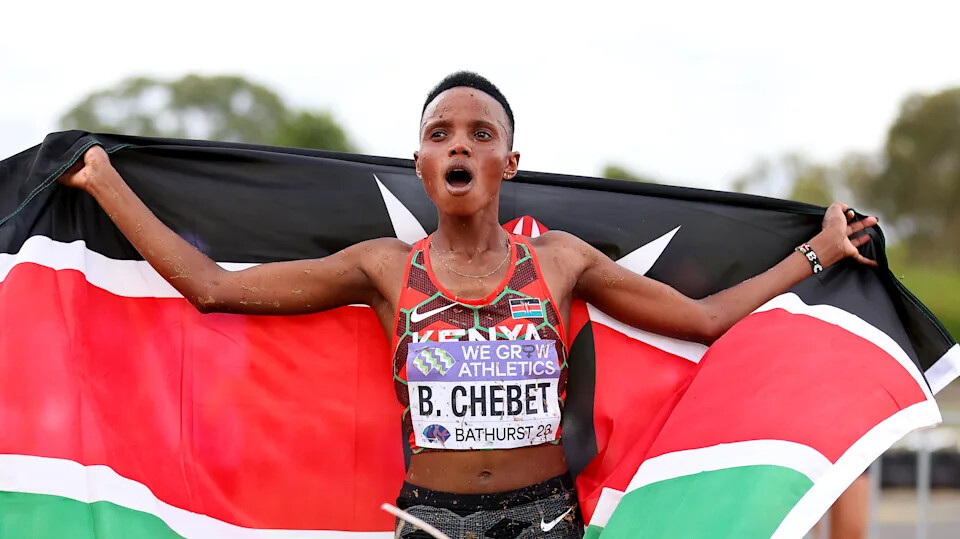
"I have prepared well for the Olympics and I'm grateful for the fine form I've accomplished this year," Chebet said in an exclusive interview.
"Winning an Olympic medal is everyone's dream and I am no different," she added.
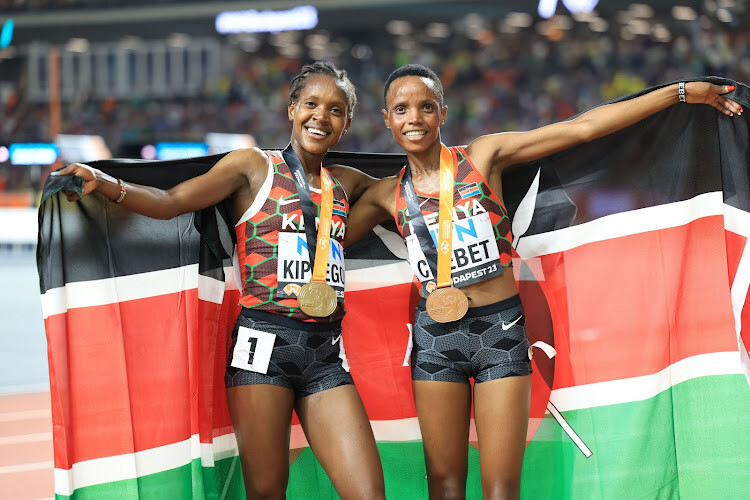
Chebet spoke a couple of days after storming the gold medal in the 5km race at the inaugural World Road Running Championships held in Riga on Sunday.
The victory confirmed her status as a dominant force on the international front.
She cruised through the course in an amazing 14:35 to register the fifth fastest time in the history of the 5km road race ahead of compatriot Lilian Rengeruk, and Ethiopia's Ejgayehu Taye, who settled for the silver and bronze medals respectively.
The victory further embellished her rich trophy cabinet which also boasts a gold bagged at the World Cross Country championship held in Bathurst, Australia in February.
Chebet said the presence of compatriot Faith Kipyegon in the race is a great source of inspiration, adding that she is not quaking in the boots at the mere thought of facing her over the distance.
Despite crashing to Kipyegon and Sifan Hassan of The Netherlands in the 5000m at the World Championships in Belgrade, Hungary, Chebet said she will do her best to reclaim her bragging rights in the 12-lap race.
"It will make the race all the more interesting and I believe the country is bound to benefit immensely if we field a strong team in Paris," Chebet said.
"Her presence in the race will also take the competition a notch higher," she added. The International Olympic Committee (IOC) approved Kenya's request to field Kipyegon in both the 1500m and the 5000m races at the upcoming Paris Games.
by Tony Mballa
Login to leave a comment
What are isometric exercises, and why should runners do them?
If you haven’t tried isometric exercises (or are unclear on what the term means) you’re not alone. This oft-neglected type of strength training involves contracting a muscle without changing its length, with no visible movement at the joint. Instead of the muscle lengthening or shortening, as it does in isotonic exercises (like bicep curls or squats, for example), the muscle remains static, exerting force against an immovable object or resisting an opposing force.
Isometric exercises are characterized by holding a position (or maintaining a contraction) for a set period. Because they require little to no equipment, isometric exercises super easy and convenient, and perfect to add to your routine tonight.
Why isometric exercises?
For runners, isometric exercises are often used in injury rehab, because they allow you to strengthen certain muscles without putting excessive strain on injured tissues. They’re time-efficient, targeting specific muscle groups, and easily integrated into a warmup or cool-down. They can also help build strength and stability in specific muscle groups, which is essential for maintaining proper running form, building endurance and preventing injuries.
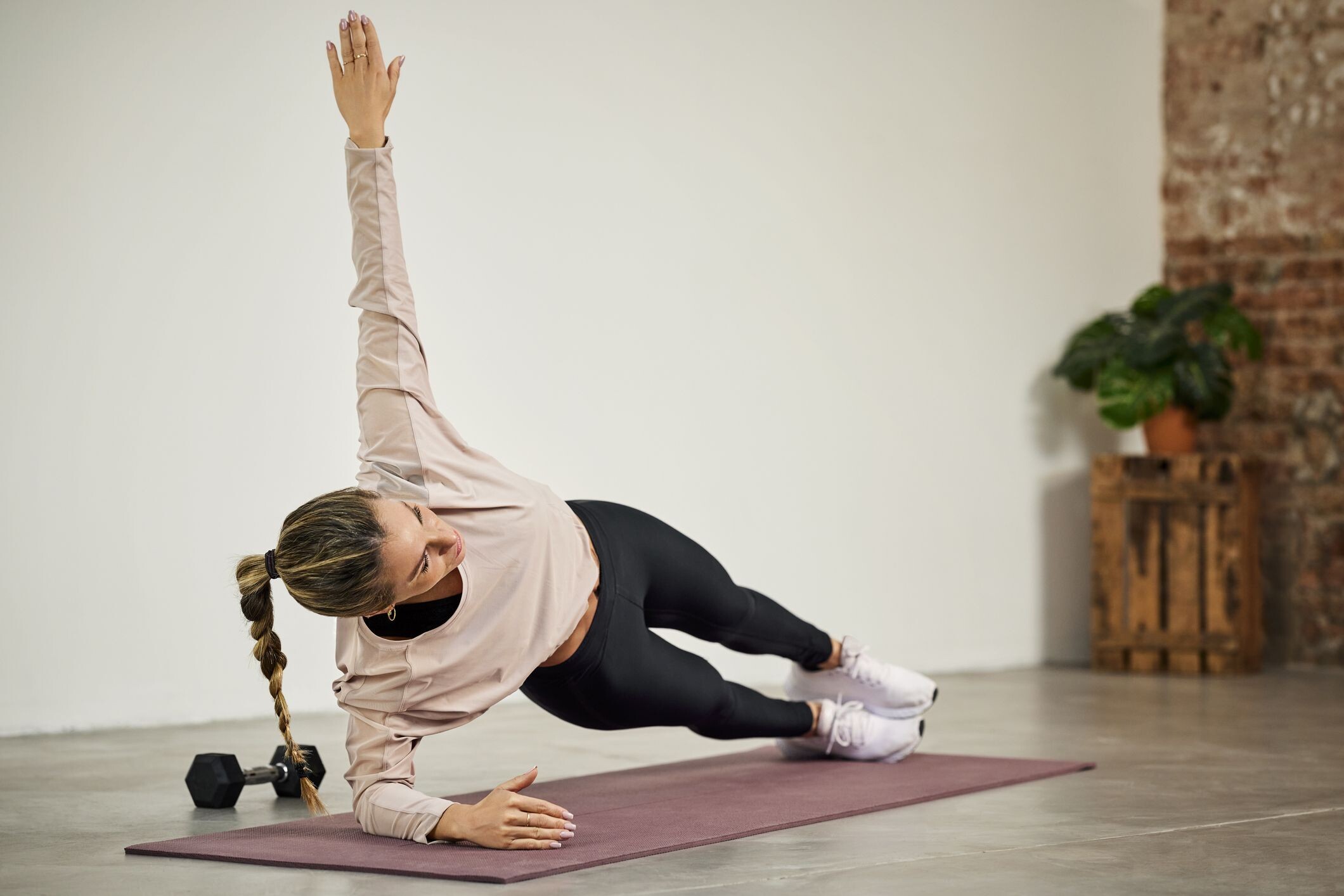
Planks
Planks build postural strength around your lower core, which is essential for maintaining good biomechanics, especially when you’re feeling fatigued near the end of a hard run or race.
Begin in a push-up position and straighten your arms, tighten your core and straighten your legs. Focus on keeping your butt in a straight line between your shoulders and heels.

Once you have your body positioned, hold the push-up position for two to three minutes. Stop when you can no longer hold the pose–having good technique is more important than how long you can hold the plank. Add 30-second increments until can hold for several minutes.
Try different plank variations, supporting yourself on your elbows, or by lifting one leg toward your chest. Advance to adding side planks.
Single-leg balance
Standing on one leg for an extended period (with eyes open, which is easiser, or closed, which is more challenging) can help improve balance and stability, which is essential for navigating uneven terrain while running. It can also help with proprioception (awareness of where the ground is in relation to your body), and strengthens the muscles around the ankle, knee, and hip joints.
Find a flat, stable surface to stand on. Begin standing upright with your feet hip-width apart and your arms relaxed at your sides, and shift your weight onto one leg. Keep a slight bend in your knee to avoid locking it.
Engage your core muscles by gently pulling your navel toward your spine, and slowly lift the foot of your non-weight-bearing leg off the ground, bringing it to a position where it is just hovering above the floor. Your raised thigh should be parallel to the ground, and your knee should be bent at a 90-degree angle. You can point your toes or flex your ankle; choose a comfortable position.
Gaze at a fixed spot in front of you to help with balance. Beginners can start by holding 15-30 seconds per leg and gradually work up to 60 seconds or longer as they improve their balance.
Release and repeat on the other side.
Wall-sits
This exercise helps create a powerful and resilient stride, improving leg endurance.
Place your back flat against the wall, and slide down until your thighs are at a 90-degree angle to your back (and to the floor). Keeping your lower back flat against the wall, take a deep breath and hold the sitting or chair position for two to three minutes.
It’s OK if you find that challenging–most beginners struggle to hold until the two-minute mark. Add 30-second increments over time, until you reach seven to 10 minutes or complete fatigue.
by Keeley Milne
Login to leave a comment
Are Energy Chews Actually Better Endurance Fuel Than Gummy Bears?
Our tester sacrifices her teeth to find out
I personally used gummy bears as endurance fuel for a solid ten years. These adorable chewy candies have long been a solution for athletes seeking an inexpensive and sugar-rich fuel for prolonged endeavors. But with more sport-formulated gummy options like Clif Bloks and Honey Stinger Chews on the market than ever, I wondered if there was much of a difference in how they make me feel during hearty efforts. So I decided to put them to a head-to-head test.
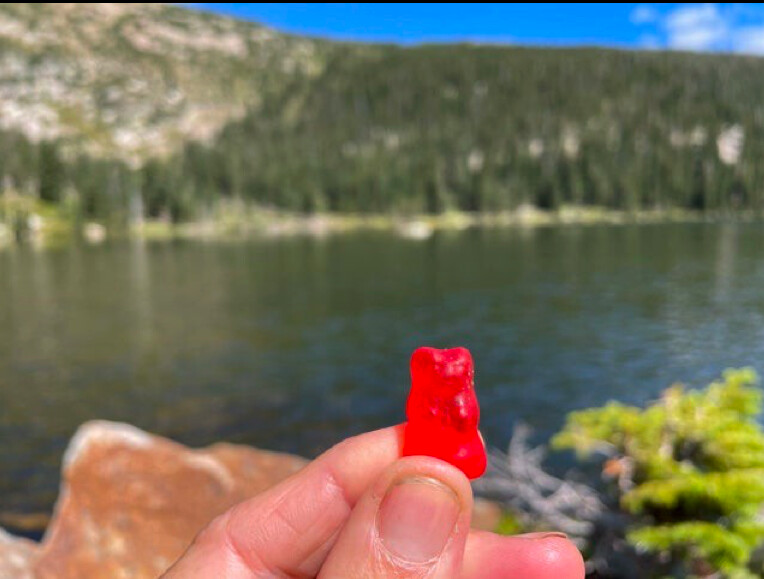
It was 10 a.m. at a pristine mountain lake in Colorado when I ate my first convenience store gummy bears, and—no surprise here—they were delicious. I’d packed a reusable plastic bag with a heartier serving (read: more than the recommended nine bears) of Albanese Gummi Bears, and another reusable bag of Haribo Goldbears and shoved them in my hydration pack. This type of candy is usually made of corn syrup and sugar, with “natural and artificial flavors.”
I was a couple rugged mountain miles to a lake with my dog. I sat on a rock and ingested the candy, noting how the Albanese Gummi Bears, which a friend had raved about to me, were insanely soft and chewy. Maybe too soft and chewy—I ate all of them within 30 seconds. They don’t require a lot of masticating, which is a bonus while running, but a negative if you don’t want to inhale a giant bag of gummy bears in one sitting.
I also ate a few (again more than nine) Haribo Goldbears. This is the brand I used to carry and eat during multi-day adventure races. They are, in a word, gummier. They take more effort to chew, which is fine while hiking or paddling, but can be a pain (and a choking hazard) while running or cycling. They too, are delicious (I’m personally partial to the pineapple flavor).
The consumption left my teeth feeling slimy, like they do whenever I eat something super-sugary. My stomach felt OK—not great—on the steep and rocky descent, but I felt a little jittery, like I’d had too much coffee.
I didn’t crash and burn afterward, but it was only a five-mile outing. I didn’t feel great the rest of the day, though.
Since energy chews hit the scene some years ago, I’ve relied on them to both satiate my love of gummy candy while exercising and to keep me going. I’ve used them on countless mountain running adventures, ski tours, hikes with kids, and more. But for this gummy-to-gummy comparison, I took them on a mountain run three days after the initial gummy bear test.
I ate a sleeve full of Salted Watermelon Clif Bloks about six miles into a rugged run towards another alpine lake. And I pounded a bag of Honey Stinger Pink Lemonade Energy Chews around mile 11.
Both served my needs: I was fatigued and hungry, sweating profusely, and borderline depleted. I ate more on that 15-mile run than just chews—some nuts, pretzels, zucchini bread with walnuts—but the chews were my on-the-go snacks while the others I ate sitting at a lake or walking to warm-up.
I didn’t get the sugary coating on my teeth; I don’t from chews. And I didn’t get the weird jitters. I also didn’t feel the guilt-cheating sensation I had on my Gummy Bear Run. The ingredients of both Clif Bloks and Honey Stinger Energy Chews include feel-good sugars like organic tapioca syrup, organic sugar, and organic honey, plus organic color from black carrot juice.
Aside from the better sugars and ingredients in general of energy chews, what both packs of chews have that gummy bears do not are a substantial amount of electrolytes. I feel like I need the extra sodium provided by chews when I exert myself; replacing it helps me feel balanced.
There is less sugar in the full bag (two servings) of both Clif Bloks and Honey Stinger Energy Chews than in two servings of gummy bears. (Those two servings would be a count of 18 bears.) I’m not sure why the sugar of chews doesn’t make me feel jittery and gross like the sugar of gummy bears. Maybe it’s partially psychosomatic, but maybe it has to do with the good things chews have that bears do not.
Honey Stinger chews also provide 70 percent the recommended dietary allowance of Vitamin C, and their new Caffeinated Chews (Strawberry Kiwi, Cherry Cola, and Stingerita Lime) contain 50 milligrams of caffeine (100 milligrams for whole pack) from tea for sustained energy. Black Cherry, Tropical Punch, and Orange Clif Bloks contain 50 milligrams caffeine per serving, 100 milligrams per pack. And Clif Bloks have 18 milligrams of potassium, also beneficial electrolytes. (Strangely, Haribo Goldbears have two grams of protein per serving.)
Where Haribo and Albanese have an edge is in cost and availability. You can buy bears from those brands in a variety of stores and cost less than half per ounce than any of the chews, which are more of a specialty item.
I feel better eating energy chews over gummy bears, both on an endurance/performance level and on a guilt level, not that I, or anyone, should feel guilty eating candy once in a while. The only thing I might feel guilty about is the extra cost that I might incur during a race or an intense training cycle.
I find energy chews just as delicious as gummy bears, and both feel like a treat while out on an adventure of any sort. The energy chews don’t coat my teeth in sugar or threaten a sour belly, something I get when I ingest too much sugar on a run. Eating energy chews on a run or any outing that requires endurance just makes more sense than eating gummy bears.
Our veteran gear maven, Lisa Jhung, has been testing gear for 25 years. She’s sprayed herself down with a hose to test the waterproofness of rain jackets, set up treadmills in her yard for weeks of testing, and stashed shoes in bushes to change mid-run.
In this column, Vetted, she inspects, tests, and muses on all things outdoor gear.
by Outside Online
Login to leave a comment
Injured? Try these sports instead
Let’s face it–being injured sucks. What does a runner do when they can’t run? While most of us turn to cycling, pool running or swimming, there are other sports you can try if traditional cross-training methods just aren’t for you. What you’re able to do while you’re healing from an injury, of course, is very dependent on the nature of your injury, but the following suggestions might be good options for those who are looking to have a little fun in their unplanned off-season.
Hiking
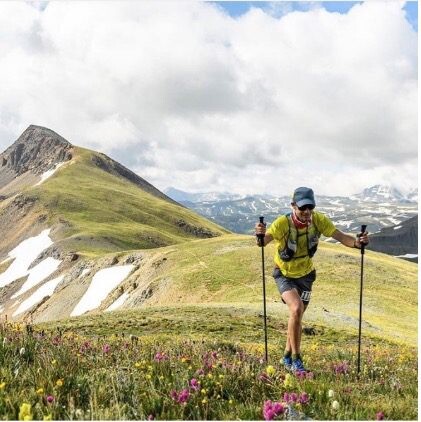
Take a walk, add some elevation change and nature, and you’ve got a hike! Many runners turn to walking while they’re injured, but if strolling around the neighbourhood doesn’t do it for you and you’re lucky enough to live in an area with trails (west coasters, we’re looking at you!) take advantage of it. The softer ground and constantly changing terrain will challenge your body in a different way, and if you’ve got mountains nearby, some steep climbs will help you return to running stronger.
Volleyball
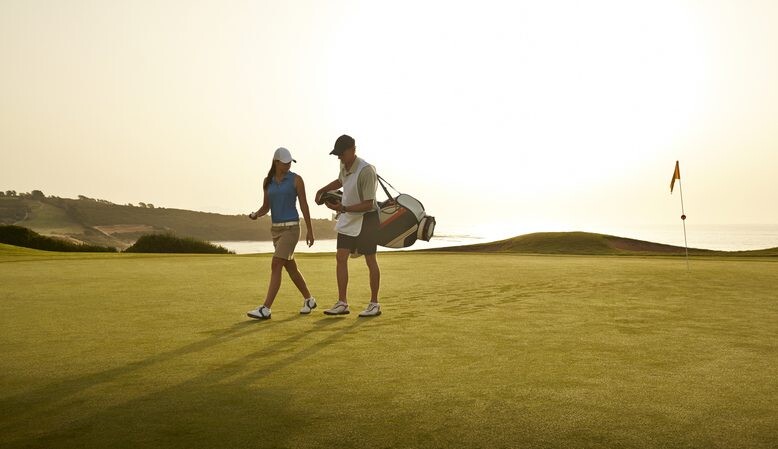
Volleyball is a great option, because it doesn’t involve a lot of running. It may not help improve your running much, but since it’s played on teams, it’ll give you a chance to get out and socialize if it’s the camaraderie of your running group that you truly miss.
Pickleball
Tennis’s low-impact cousin has been taking the country by storm, and pickleball courts have been popping up in local parks everywhere. Pickleball requires much less running and lateral movement than tennis (which is likely not a great idea when you’re injured). It can be a lot of fun to play with a few friends, and serves as a great distraction while you take some time off from running.
Golf
Take a walk, add some sand traps and swing a stick around, and you’ve got golf! Forgo the cart and carry your bag, and suddenly you’ve also got a decent workout. Plus, it’s a great way to get outside for long periods, if it’s that fresh-air feeling that you miss when you’re on the sidelines.
Rock climbing
Want to improve your core strength while you’re out of the running game? Rock climbing is your answer. As a bonus, it’s also a good way to work on proprioception, which will have a positive effect on your running form when you return to your training.
Skiing
If you’re injured during the winter, why not use the weather to your advantage? Cross-country skiing, of course, will help you maintain (or even improve) your cardiovascular fitness without the impact of running, but alpine skiing can also improve your core and lower-body strength.
Yoga
OK, yoga isn’t exactly a sport, but it’s an excellent activity to do when you’re injured. It can improve your core strength, balance and proprioception, as well as teaching you how to control your breath and loosen tight muscles. And what runner doesn’t have tight muscles?
by Brittany Hambleton
Login to leave a comment
Five exercises to improve proprioception and get faster
Proprioception, often referred to as the “sixth sense,” is the body’s ability to sense its own position, movement, and spatial orientation (i.e., sensing where the ground as you take a step). For runners, developing and honing proprioceptive skills is a critical yet often overlooked aspect of training. It plays a pivotal role in enhancing performance, preventing injuries and improving overall running efficiency.
Proprioception is the foundation of co-ordinated movement. As runners, our bodies constantly adjust to varying terrains, inclines and obstacles. A heightened proprioceptive sense enables us to maintain balance and stability, adapting quickly to uneven surfaces and unexpected changes in stride. This not only reduces the risk of tripping and falling but also optimizes energy expenditure, as efficient movements translate to better running economy.
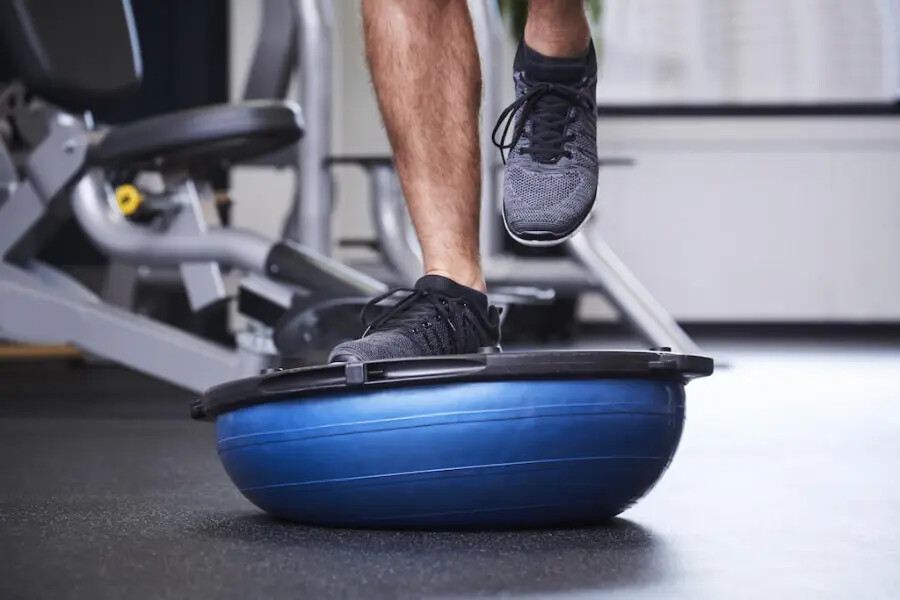
Incorporating proprioceptive exercises into a training regimen can range from simple balance drills to more advanced techniques involving unstable surfaces or dynamic movements.
Exercises to improve proprioception
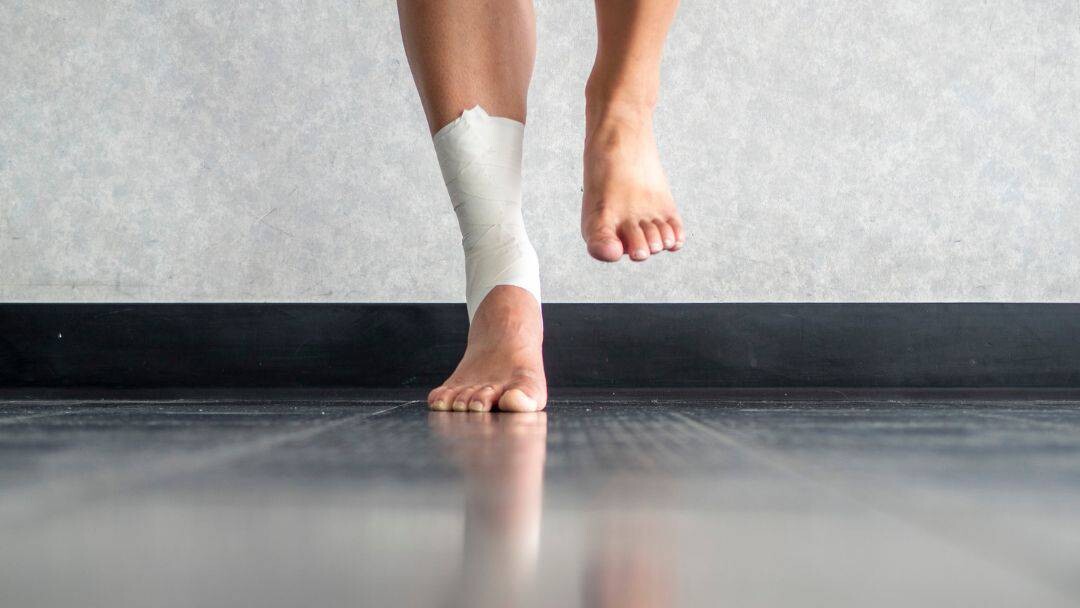
The following exercises challenge the body to adapt, enhancing neuromuscular coordination and proprioceptive feedback loops.
One-leg 3-way kick
If you’re a beginner, start by doing this exercise on a hard, flat surface. As you progress, you can do it standing on a soft riser.
Stand with your feet hip-width apart and your hands on your hips.
Stand on your left foot and lift your right foot in front of you a few inches off of the ground. Hold for 2 –3 seconds, then return to the starting position.
Follow the same steps as you lift your right leg to the side of your body and then behind you.
Do this five times, than switch sides and repeat. Do this 2-3 times on each side.
Flamingo stand
Stand with your feet hip-width apart and your hands on your hips. For more balance, stretch your arms out to your sides.
Shift your weight to your left foot and lift your right leg up with a 90-degree bend at the knee.
Hold this for 10–20 seconds, or however long you can. Repeat on the opposite leg, and do this 2–3 times per leg.
Banded triplanar toe taps
If you’re a beginner, try this move without the loop band.
Place a loop band around your ankles and stand with your feet hip-width apart.
Shift your weight to your left foot and lower into a quarter squat.
Using the loop band as resistance, tap your right toe in front of you, to the side, and behind. Do this 10 times on one leg, then 10 times on the other. Repeat 2-3 times.
Cone taps
As you perform this movement, engage your core and use your glutes and hamstrings to stay balanced.
Stand on one foot with your hands on your hips and a cone two feet in front of you.
Slowly bend at the hips and extend your left leg behind you as you reach forward to tap the cone.
Lift yourself back up until you’re in the starting position.
Repeat five times on one leg, then switch and repeat five times on the other leg. Do this 2–3 times.
Airplanes
Stand with your feet hip-width apart and your hands on your hips.
Stand on your left foot and slowly extend your right leg out behind you, lifting it into the air so you create a straight horizontal line from your head to your foot.
With your leg extended behind you, rotate your torso to the left as far as you can go without falling. Pause, then return to the centre position.
With your leg still extended behind you, rotate your torso as far to the right as you can without falling, turning your right hip toward the ceiling. Pause, then return to the centre position.
Return to standing. Repeat the sequence five times on each leg, for 2-3 sets.
by Brittany Hambleton
Login to leave a comment
Ukrainian team prepares for World Athletics Championships
The Ukrainian athletics team will gather in Slovakia this week for a final training camp before travelling to Hungary for the World Athletics Championships Budapest 23, starting in less than three weeks (August 19).
World Athletics’ Ukraine Fund and the International Olympic Committee’s Solidarity Fund have combined to provide training camp accommodation for 40 athletes and officials in Banska Bystrica, Slovakia, which will allow Ukraine’s top athletes to complete their final preparations for their most important competition of the year.
World Athletics has provided additional accommodation for three athletes and their families for an extended period in Bankska Bystrica, from 1 June to 30 September.
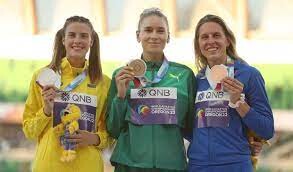
World Athletics President Sebastian Coe said: “We understand how important and inspirational Ukraine’s athletes are to their country at this terrible time and we want to give them every opportunity to compete and excel, despite the great hardship being visited on them and their communities by this horrific war. They have lost so much and the least we can do is help them to keep their athletics dreams alive. I am full of admiration for their fortitude and resilience and I am looking forward to welcoming the Ukrainian team to the National Athletics Centre in Budapest in the coming weeks.”
The general secretary of the Ukrainian Athletic Association Iolanta Khropach offered her “heartfelt thanks” for the “important financial assistance provided during this terrible war in our country”.

“Your unwavering belief in us has made a profound impact on the life of our team and the opportunities to prepare for world-class competitions,” she said. “Thanks to your support, we have been able to provide the best athletes of the Ukrainian team with the necessary conditions on the final stage of the preparation to the World Athletic Championships in Budapest to achieve their sports goals. We are happy to see your willingness to lend a helping hand in difficult times for us during the war.”
World Athletics and the US Olympic and Paralympic Committee funded a similar programme to help the Ukrainian team prepare for the World Athletics Championships Oregon22 last year, where two athletes emerged as medallists. World indoor champion Yaroslava Mahuchikh won the silver medal in the women’s high jump and Andriy Protsenko won bronze in the men’s high jump.
The IOC contributed an additional US$20,000 to support the Ukrainian team at the World Athletics U20 Championships in Cali last year.
Through its Ukraine Fund, World Athletics distributed more than US$220,000 last year to support Ukrainian athletes preparing for the World Championships and the World Athletics U20 Championships in response to the crisis caused by Russia’s invasion of Ukraine, and is distributing a further US$190,000 this year to support Ukrainian athletes preparing for Budapest.
This fund was launched by World Athletics, the Member Meetings of Diamond League Association and the International Athletics Foundation in April 2022 with the purpose of assisting professional athletes, immediate family members and their support personnel affected by Russia’s invasion of their home country.
This is in addition to the Solidarity Fund of US$7.5 million established by the International Olympic Committee (IOC) in February 2022 to support Ukrainian athletes and the Ukrainian Olympic community.
by World Athletics
Login to leave a comment
World Athletics Championships Budapest 23
From August 19-27, 2023, Budapest will host the world's third largest sporting event, the World Athletics Championships. It is the largest sporting event in the history of Hungary, attended by athletes from more than 200 countries, whose news will reach more than one billion people. Athletics is the foundation of all sports. It represents strength, speed, dexterity and endurance, the...
more...Foot strength exercises for speed and stability
Your feet may take a serious pounding when you run, but chances are you (like most runners) neglect foot mobility and care. Spending a few minutes on these stability-builders (do them while you’re watching TV!) will be a game-changer–you’ll have a stronger foundation and prevent future injuries.
If you’ve never done foot mobility or strength before, ease into these exercises and increase or decrease repeats as needed. Incorporate them into your warm up or cool down routine a few times a week, or try a few anytime you’re relaxing on the couch.
Toe curls
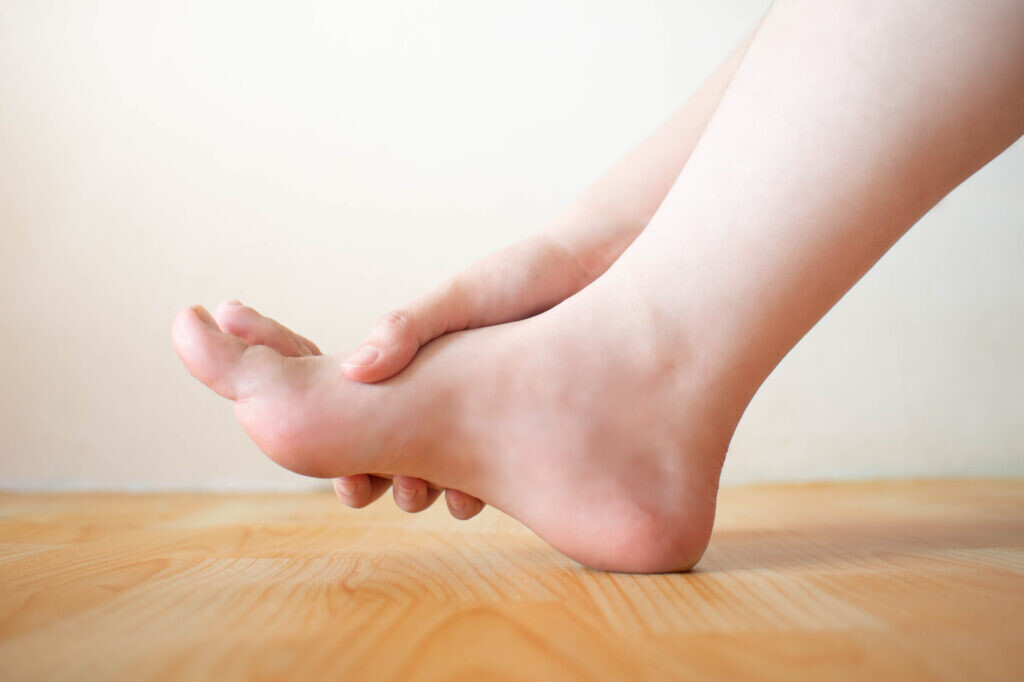
Toe curls strengthen the intrinsic muscles of the feet, essential for maintaining arch support and proper foot mechanics during running.
Sit on a chair with your feet flat on the floor. Curl your toes inward as if you’re grabbing the floor, then release. Do three sets of 15–20 repetitions for each foot.
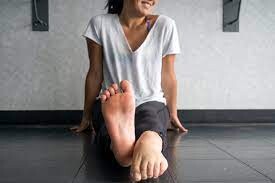
Single-leg balance
Single-leg balance exercises enhance ankle stability and proprioception (your ability to sense where the ground is), essential for maintaining proper form and preventing ankle-related injuries.
Stand in bare feet with hands on the back of a chair or wall for stability, if needed. Rise up onto the ball of one foot, hovering the other foot above the ground if possible (leave your toes touching if you need to, and work up to lifting the leg). Hold for 30 seconds to one minute, and switch to the other leg. Repeat for three sets, build up to five.
Toe spreading
Toe spreading helps improve toe mobility and strengthens the muscles responsible for toe alignment, which can enhance stability during the push-off while running.
Sit or stand with your feet flat on the ground. Spread your toes as wide as possible, then bring them back to a neutral position. Repeat for three sets of 15–20 repetitions.
Towel scrunches
Towel scrunches strengthen the muscles in your toes and on the bottom of your feet, and contribute to better foot stability and proprioception.
Place a small towel on the floor. Stand barefoot, and use your toes to scrunch up the towel toward you. Release and repeat for three sets of 15–20 repetitions.
by Keeley Milne
Login to leave a comment
Carbs and runners: friends or foe?
Runners create many reasons for limiting their intake of seemingly “evil” carbohydrates: I don’t like sandwiches … Pasta is so “heavy” … I’m staying away from gluten … I avoid any foods with added sugar … I prefer to eat two veggies at dinner instead of a veggie and a carby food. And, most often I hear: Bread is fattening!
Anti-carb sentiment has pervaded my entire career as a sports nutritionist. While some fads have come and gone, the “carbs are bad” fad remains ingrained in the brains of even elite athletes. I am (again) encouraging you to reconsider your stance.
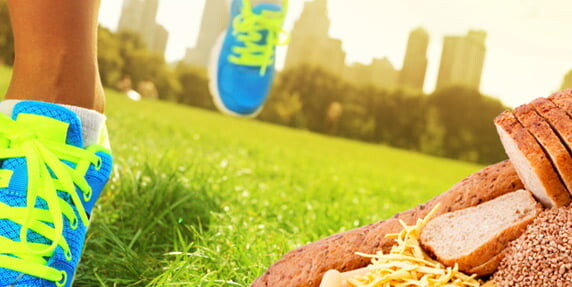
• Despite popular belief, carbohydrates are not inherently fattening. Excess calories of any kind are fattening. Excess calories of bread, bagels, and pasta are actually less fattening than excess calories of cheese, butter, and olive oil. That’s because converting excess calories of carbs into body fat requires more energy than does converting excess dietary fat into body fat. That means, if you want to be gluttonous yet suffer the least weight gain, indulge in fat-free frozen yogurt instead of gourmet ice cream!
• To allay any confusion, let’s clarify what carbs actually are. Carbohydrates include both sugars and starches. Carbs are in fruits, vegetables, grains, and milk (lactose). Sugars and starches all digest into the simple sugar glucose. Glucose travels in your blood and, with the help of insulin, gets taken into muscles and stored as glycogen for fuel. Runners who restrict carbs commonly complain about “dead legs.”

• Sugars and starches are biochemically related. For example, an unripe fruit, such as a banana, is starchy. As it ripens, it becomes sweeter; the starch converts into sugar. Similarly, vegetables, such as peas, are sweet when young. Their sugar converts into starch as they mature.
• All carbs—both sugars and starches—are excellent sources of fuel. Both “carby” bagels and sugary candy end up as glucose in your blood and feed your muscles as well as your brain. Whether you are running or lifting weights, a carb-rich sports diet (with adequate protein) can enhance your performance.
• Quality carbs, such as whole grains, fruits, and veggies, offer abundant vitamins, minerals (electrolytes), and other health-promoting nutrients. Refined sugar, however, offers little nutritional value. Yet, dietary guidelines say 10% of daily calories can come from added sugar. That’s at least 50 grams of sugar for most runners and allows for some “fun foods.”
• Sugar-avoiders please note: the 3 grams of added sugar in 2 tablespoons of peanut butter will not negate peanut butter’s health-promoting fiber, protein, and anti-inflammatory fats. Nor will the sugar in chocolate milk diminish its value as a helpful recovery fluid after a hard workout. Please look at the vitamins, minerals and protein that come along with the added sugar, not just the sugar itself.
• Sports drinks, gels, and sports gummies are little more than refined sugar. That’s not bad; it’s exactly what the body wants during extended hard exercise. Even though refined sugar adds “empty calories” to a sports diet, runners need not eat a perfectly sugar-free diet to have an excellent diet. There’s a time and a place for sweets.
• The messages that carbs are inflammatory, fattening, and bad for you is targeted at sedentary people who consume excessive calories, often from highly processed foods. For those unfit (often unhealthy) people, excess carbohydrate can contribute to elevated blood glucose, which triggers the body to secrete extra insulin. Consistently high insulin can be inflammatory and lead to nasty health issues. Yet, most runners can handle carbs with far less insulin than the average American—and without carbs causing “sugar crashes” or weight gain.
• The most common reason for “sugar crashes” (hypoglycemia) among runners relates to running out of fuel. The shakiness and sweats are because the athlete did not eat enough carbs to maintain normal blood glucose levels and the brain has to demand a quick fix—sugar! One marathoner credited the sugary gel he took at Mile 16 to cause him to “crash.” More likely, he needed more just one gel to meet his energy needs.
• For runners who routinely train hard 3 to 5 days a week, carbs should be the foundation of each meal. The International Olympic Committee’s recommendations for a performance diet include far more carbs than many runners consume via fruit, salads, and cooked veggies.
Baseline targets for a 150-pound runner are:
375 g carb/day for ~1 hour of moderate exercise
450 g carb/day for ~1-3 hours of endurance exercise
525 g carb/day for >4-5 hours of extreme exercise
This comes to about 100 to 150 grams carb per meal, which equates to about 400 to 600 calories of grains, fruits, and/or veggies per meal.
If your daily menu lacks starchy foods, experiment with adding grains to each meal and snack. You just might discover how much better you can feel and perform!
by Colorado Runner
Login to leave a comment
Genevieve Clemons Won’t Let Anxiety Run the Show
When she started her freshman year during the height of the pandemic, the college student felt trapped. Then she started running.
Genevieve Clemons told her story to producer Ann Marie Awad for an episode of The Daily Rally podcast. It has been edited for length and clarity.

I was in a dormitory with one other roommate, but because classes were online, we spent most of our time in this tiny room, taking online classes. And so I just felt really cooped up, irritated, unmotivated. I wanted to find my community, and I just hadn’t.
I go by tons of nicknames, kind of dealer’s choice, but just generally Genevieve.
I am currently going to be a senior at the University of Texas at Austin. I would say two of my biggest passions would have to be nature and wildlife. And, recently, a big passion of mine has become running, just anywhere, as far as I can go. I love running.
When the pandemic hit, it was the end of my senior year of high school, and I was honestly quite miserable even before the pandemic started. I was dealing with some anxiety and perfectionism. I didn’t really feel like I fit in in my high school.
I didn’t have the best experience with high school sports. I was on the tennis team, but I had a coach that treated me not the best. And so I just kind of had a complicated relationship with sports, and I was also having a hard time balancing academics with everything else. I just took things really seriously. I graduated as Valedictorian, but I wasn’t happy.
I wanted to change a lot of things about my life, my outlook and the way I was living it. I saw college as an opportunity for that.
Coming out of high school, I didn’t really have a lot of connections and friendships, and I was really depending on having that normal freshman-year college experience to help me bounce back. So when the pandemic hit, I got pretty depressed.
Having to be cooped up inside all day started out kind of exciting, like, Whoa, what’s happening? Finishing out high school, we get to do school online, it’s easy, and then it just kind of dragged out. I started out my freshman year at UT in the middle of the raging pandemic, and it was fully online, so that was pretty difficult.
At that point where I was really seeking balance, I was like, Maybe I just take everybody else out of the equation, and I just fully look for something and do it because I love it and I want to do it. Maybe that’s the answer.
I knew my dad was a marathon runner, in his younger days. And I was like, Why don’t I try running? And honestly, I hated it in tennis, when we had to do running. Hated it. But I was like, you know what? I’m gonna try it, but I’m gonna do it my way. So I just literally put on some shoes and started running. I didn’t want anyone to know I was running. I didn’t want to know how fast I was going. I just wanted to get out there.
For several, several months, I would just go out on this trail by my house. Sometimes it was just a mile, and that mile was freaking hard, and I would feel accomplished because I was really just shutting everything else out. And it was, How did I feel today? Slowly I had little victories and little moments like, Oh, I actually kind of felt not out of breath today, or, I ran a little faster or went a little further. I was hooked.
I started to run further and further. And I just loved it. I loved the feeling of pushing myself in that way, in the endurance way. I was attracted to distance running. So, one day, I was like, I want to run a marathon. And I shocked myself when I said that, but I was like, my dad did it, I want to do it. I want to see what it’s like.
In my head, when I say something out loud that I’m gonna do it, I’m gonna do it. I was so intimidated. I was like, The last thing I want to do is run with all these people. They’re gonna see how slow I am, they’re gonna see I’m not a real runner. But I was like, You know what? This has all been good so far. Just try it. And that was my new goal after getting out of high school and letting anxiety run the show. I was like, I’m not doing that anymore. Let’s just go.
But I knew that’s the kind of stuff you can’t do alone. Sure, there’s the internet, but I wanted to talk to some people that had done it. So I went to these running groups, and I found a community that I was so embraced by. In sports as a kid, I was always on the sidelines breathing really hard, and the coach was like, “Come on.” I wasn’t used to these people just believing in me and seeing my potential, and wanting to share the gift of this sport.
I did my first trail race, and I was so scared. But my family came and I was like, You know what, I’m not gonna worry about it. I got out there, and I have never ran, or competed, or done something where I felt so joyful. We were all out there to have fun. I would pass people on the trail in the race, and they would say, “Hey, great job.” It was just so encouraging.
So, I just catapulted off from there. I’ve run probably about nine races, maybe ten so far.
Seeing other people believing in me, I realized I could also believe in myself. I think whatever that looks like, having some kind of faith in yourself, listening to whatever that is inside you that guides you to do things—that light, that spark in you—instead of walking in fear and doubt. Everybody has those thoughts, I sure do still. If I’m about to sign up for a race, I think, Are you sure you can do that? Or, Is this really for you? Or, as I’m sure everyone thinks, Can someone like me really do this? To recognize and say, Hey, I’m hearing these voices of doubt, but right now, I’m gonna choose to listen to something else.
Genevieve Clemons is a senior at the University of Texas at Austin, majoring in biochemistry. Earlier this year, she competed in her first 100K race. She was nominated for the show by her very proud dad.
by Outside Online
Login to leave a comment


